
Free as in Freedom
by
Sam Williams
Published 16 Nov 2015
According to section 10 of the GNU General Public License, Version 2 (1991), the viral nature of the license depends heavily on the Free Software Foundation's willingness to view a program as a derivative work, not to mention the existing license the GPL would replace. If you wish to incorporate parts of the Program into other free programs whose distribution conditions are different, write to the author to ask for permission. For software that is copyrighted by the Free Software Foundation, write to the Free Software Foundation; we sometimes make exceptions for this. Our decision will be guided by the two goals of preserving the free status of all derivatives of our free software and of promoting the sharing and reuse of software generally.
…
According to section 10 of the GNU General Public License, Version 2 (1991), the viral nature of the license depends heavily on the Free Software Foundation's willingness to view a program as a derivative work, not to mention the existing license the GPL would replace. If you wish to incorporate parts of the Program into other free programs whose distribution conditions are different, write to the author to ask for permission. For software that is copyrighted by the Free Software Foundation, write to the Free Software Foundation; we sometimes make exceptions for this. Our decision will be guided by the two goals of preserving the free status of all derivatives of our free software and of promoting the sharing and reuse of software generally.
…
During the interim, Stallman will revisit Silicon Valley once more for the August, 1999 LinuxWorld show. Although not invited to speak, Stallman does managed to deliver the event's best line. Accepting the show's Linus Torvalds Award for Community Service-an award named after Linux creator Linus Torvalds-on behalf of the Free Software Foundation, Stallman wisecracks, "Giving the Linus Torvalds Award to the Free Software Foundation is a bit like giving the Han Solo Award to the Rebel Alliance." This time around, however, the comments fail to make much of a media dent. Midway through the week, Red Hat, Inc., a prominent GNU/ Linux vendor, goes public. The news merely confirms what many reporters such as myself already suspect: "Linux" has become a Wall Street buzzword, much like "e-commerce" and "dot-com" before it.
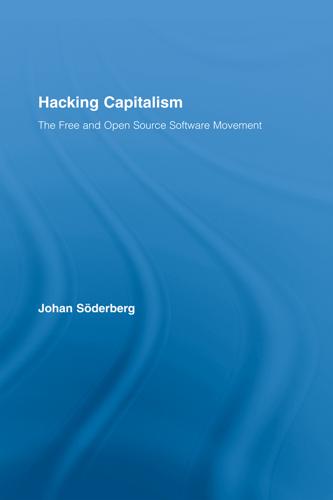
Hacking Capitalism
by
Söderberg, Johan; Söderberg, Johan;
The most explicit vision of how public access to source code relates to social change is voiced by the Free Software Foundation. It was initiated by Richard Stallman as a response to the commercialisation of his own field of work.17 The foundation has set itself the task of liberating computers from proprietary software code. To realise the dream of a computer run entirely on free code, the Free Software Foundation has since the mid 1980s produced non-proprietary software applications. The name of the software published by the foundation, ‘GNU’ is an acronym that stands for ‘Gnu is Not Unix’. In addition to publishing GNU applications, the Free Software Foundation is the maintainer of the most widely used license in the computer underground, the General Public License (GPL).
…
First, the violation must be detected. This can be tricky if the GPL code is sunken into a larger chunk of copyrighted, binary code. Second, the entitlement to assign and then enforce copyleft resides not with the Free Software Foundation. It stays with the original author of the violated code which can be a complication. Fear of an unfavourable court ruling has cautioned the Free Software Foundation in its confrontations with offenders. Negotiations and out-of-court settlements have usually followed when a firm was caught cheating. Even if negotiations end successfully with the firm eventually releasing the source code and pledging to respect GPL in the future, several months have passed and the commercial value of the software might already have been exploited.
…
Much the same can be done through Digital Rights Management technology. If a free software application is locked up behind a hardware design, having access to the source code and the manuals wont do users any good. The Free Software Foundation hopes to battle these developments in a third version of the GPL by adding conditions against software patents and Digital Rights Management technology. The updated version was released in 2007. However, the decision to adopt the changes suggested by the Free Software Foundation rests with stakeholders in the community. Many of them have objected that the new GPL is too restrictive and that the license will lose in relevance because of this.
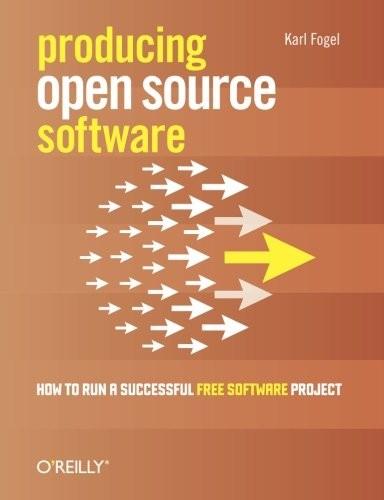
Producing Open Source Software: How to Run a Successful Free Software Project
by
Karl Fogel
Published 13 Oct 2005
The way to offer this option is to put language like this in the license headers (see the section called “How to Apply a License to Your Software” in Chapter 2, Getting Started) of the actual source files: This program is free software: you can redistribute it and/or modify it under the terms of the GNU General Public License as published by the Free Software Foundation, either version 3 of the License, or (at your option) any later version. (Emphasis added.) Whether you want to offer that option depends largely on how likely you think the Free Software Foundation is to make GPL revisions that you would approve of. I think the FSF has done a good job of that so far, and I generally do include that option when I use the GPL. That way I don't have to be responsible for updating the licenses myself forever — which is good, since I won't be around forever.
…
While Subversion was my full time job from 2000-2006, I've been involved in free software for more than twenty years, including the seven years since 2006 (when the first edition of this book was published). Other projects and organizations that have influenced this book include: The GNU Emacs text editor project at the Free Software Foundation, in which I maintain a few small packages. Concurrent Versions System (CVS), which I worked on intensely in 1994–1995 with Jim Blandy and was involved with intermittently for a few years afterwards. The collection of open source projects known as the Apache Software Foundation, especially the Apache Portable Runtime (APR) and Apache HTTP Server.
…
By some quirk of personality, he decided to resist the trend. Instead of continuing to work at the now-decimated AI Lab, or taking a job writing code at one of the new companies, where the results of his work would be kept locked in a box, he resigned from the Lab and started the GNU Project and the Free Software Foundation (FSF). The goal of GNU[4] was to develop a completely free and open computer operating system and body of application software, in which users would never be prevented from hacking or from sharing their modifications. He was, in essence, setting out to recreate what had been destroyed at the AI Lab, but on a world-wide scale and without the vulnerabilities that had made the AI Lab's culture susceptible to disintegration.
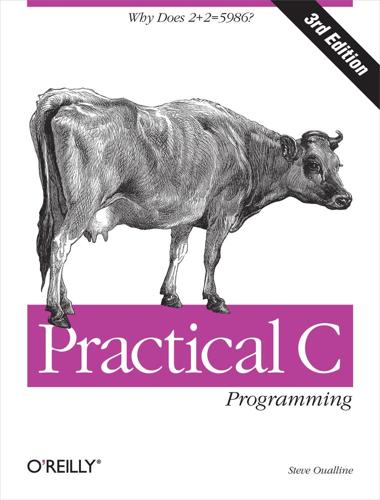
Practical C Programming, 3rd Edition
by
Steve Oualline
Published 15 Nov 2011
The switch -ohello tells the compiler that the program is to be called hello, and the final hello.c is the name of the source file. See your compiler manual for details on all the possible options. There are several different C compilers for UNIX, so your command line may be slightly different. Free Software Foundation’s gcc compiler The Free Software Foundation, the GNU people, publish a number of high-quality programs. (See the Glossary entry for information on how to get their software.) Among their offerings is a C compiler called gcc. To compile a program using the gcc compiler use the following command line: %gcc -g -Wall -ohello hello.c The additional switch -Wall turns on the warnings.
…
For example: buggy -D9 >tmp.out runs the program buggy with a high level of debugging and sends the output to the file tmp.out. The text editor on your system makes a good file browser. You can use its search capabilities to look for the information you want to find. * * * [17] ghostscript is a PostScript-like interpreter available from the Free Software Foundation for a minimal copying charge. They can be reached at: Free Software Foundation, Inc., 675 Massachusetts Avenue, Cambridge, MA 02139 (617) 876-3296. Their ftp site is prep.ai.mit.edu:/pub/gnu. Interactive Debuggers Most compiler manufacturers provide you with an interactive debugger. These debuggers give you the ability to stop the program at any point, examine and change variables, and “single step” through the program.
…
fprintf A function that converts binary data to character data and then writes the data to a file. fputc A function that writes a single character. fputs A function that writes a single line. fread A binary I/O input function. free A C function that returns data to the memory pool. Free Software Foundation A group of programmers who create and distribute high-quality software for free. Among their products are the editor emacs and the C compiler gcc: Free Software Foundation, Inc., 675 Mass Ave., Cambridge, MA 02139 (617) 876-3296. Their ftp site is prep.ai.mit.edu:/pub/gnu. They can be found on the World Wide Web at http://www.gnu.org. fscanf An input routine similar to scanf that reads from a file.
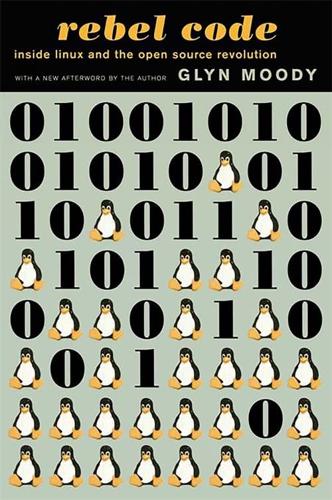
Rebel Code: Linux and the Open Source Revolution
by
Glyn Moody
Published 14 Jul 2002
People were more interested in commissioning changes in GCC, and in commissioning classes about GCC, than they were doing similar things for Emacs,” Stallman says. “I was very glad to have that source of income, especially when the Free Software Foundation was formed. I think it was October 1985; it took over from me the business of selling Emacs tapes, so I didn’t have that income any more.” The Free Software Foundation (FSF) represented an important step forward for GNU. “When I started it out, it didn’t have the money to hire anyone. Then it had money to hire one person, and it hired one person,” he explains. “The point is just that that enabled us to do more work at the same time because there were lots and lots of programs that were missing.”
…
The other consequence was that Stallman’s Free Software Foundation sponsored the development of Debian in the early days. Murdock explains why: “We took a while to come out with our first releases. Part of the problem had to do with the fact that we were entirely reliant on volunteers, [and] we had such a big job to do. So in a large sense I needed to get paid to keep working on Debian because my attention to it when I had the free time simply wasn’t cutting it.” Fortunately, Stallman recognized this need and offered to pay Murdock to work on Debian through the Free Software Foundation (FSF), another example of Stallman’s generosity in funding others and his growing recognition of the importance of Linux-based distributions.
…
One of the early Debian developers was Linus’s friend and fellow student Lars Wirzenius. He explains what happened: “When Richard Stallman started to notice Linux a lot, he started to make a lot of noise about the relationship between the Free Software Foundation and the GNU project on the one hand, and the Linux community on the other hand. “His point was mostly that the Linux community would not exist without all the free software that the Free Software Foundation was producing,” Wirzenius says. “And he was right about that, so his point was a good one.” But from this good point, according to Wirzenius, Stallman made an unfortunate deduction: “He decided that Linux should be renamed LiGNUx,” pronounced “LIG-NUX.”
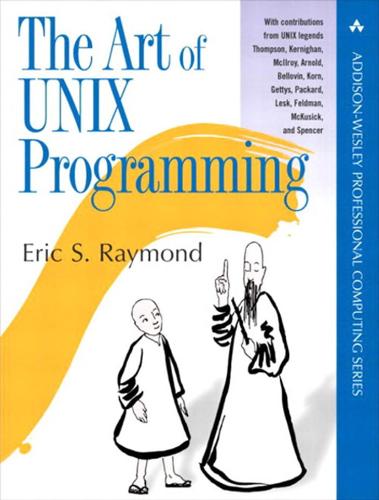
The Art of UNIX Programming
by
Eric S. Raymond
Published 22 Sep 2003
It is generally believed that one program may execute a second program as a subprocess without either program becoming thereby a derivative work of the other. The case that causes dispute is dynamic linking of shared libraries. The Free Software Foundation's position is that if a program calls another program as a shared library, then that program is a derivative work of the library. Some programmers think this claim is overreaching. There are technical, legal, and political arguments on both sides that we won't rehash here. Since the Free Software Foundation wrote and owns the license, it would be prudent to behave as if the FSF's position is correct until a court rules otherwise. Some people think the 2(b) language is deliberately designed to infect every part of any commercial program that uses even a snippet of GPLed code; such people refer to it as the GPV, or “General Public Virus”.
…
This was big news, because it meant that for the first time, a microprocessor in the dominant Intel family had the capability to run Unix without painful compromises. The handwriting was on the wall for Sun and the other workstation makers. They failed to see it. 1985 was also the year that Richard Stallman issued the GNU manifesto [Stallman] and launched the Free Software Foundation. Very few people took him or his GNU project seriously, a judgment that turned out to be seriously mistaken. In an unrelated development of the same year, the originators of the X window system released it as source code without royalties, restrictions, or license code. As a direct result of this decision, it became a safe neutral area for collaboration between Unix vendors, and defeated proprietary contenders to become Unix's graphics engine.
…
In pursuit of this goal, RMS popularized the term “free software”, which was the first attempt to label the product of the entire hacker culture. He wrote the General Public License (GPL), which was to become both a rallying point and a focus of great controversy, for reasons we will examine in Chapter 16. You can learn more about RMS's position and the Free Software Foundation at the GNU website. The term “free software” was partly a description and partly an attempt to define a cultural identity for hackers. On one level, it was quite successful. Before RMS, people in the hacker culture recognized each other as fellow-travelers and used the same slang, but nobody bothered arguing about what a ‘hacker’ is or should be.
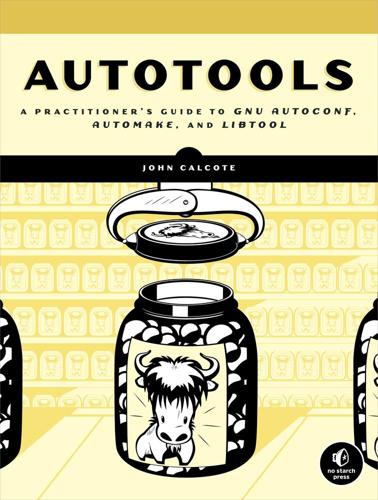
Autotools
by
John Calcote
Published 20 Jul 2010
To determine which versions of autoconf, automake, and libtool you're using, simply open a terminal window and type the following commands: $ which autoconf /usr/local/bin/autoconf $ autoconf --version autoconf (GNU Autoconf) 2.65 Copyright (C) 2009 Free Software Foundation, Inc. License GPLv3+/Autoconf: GNU GPL version 3 or later <http://gnu.org/licenses/gpl.html>, <http://gnu.org/licenses/exceptions.html> This is free software: you are free to change and redistribute it. There is NO WARRANTY, to the extent permitted by law. Written by David J. MacKenzie and Akim Demaille. $ $ which automake /usr/local/bin/automake $ automake --version automake (GNU automake) 1.11 Copyright (C) 2009 Free Software Foundation, Inc. License GPLv2+: GNU GPL version 2 or later <http://gnu.org/licenses/gpl-2.0.html> This is free software: you are free to change and redistribute it.
…
Another significant characteristic of a good project name is uniqueness—it's important that your project be easy to distinguish from others. Additionally, you should make sure your project's name does not have negative connotations in any language or culture. * * * [11] See the Free Software Foundation's GNU Coding Standards at http://www.gnu.org/prep/standards/. [12] See Daniel Quinlan's overview at http://www.pathname.com/fhs/. [13] See the Free Software Foundation's GNU Make Manual at http://www.gnu.org/software/make/manual/. [14] See the Open Group Base Specifications, Issue 6, at http://www.opengroup.org/onlinepubs/009695399/utilities/make.html. [15] In truth, it's likely that the standards that came about from the BSD project were written much earlier than the standards of the FSF, but the FSF had a big hand in spreading the information to many different platforms and non-system specific software projects.
…
There is NO WARRANTY, to the extent permitted by law. Written by Tom Tromey <tromey@redhat.com> and Alexandre Duret-Lutz <adl@gnu.org>. $ $ which libtool /usr/local/bin/libtool $ libtool --version ltmain.sh (GNU libtool) 2.2.6b Written by Gordon Matzigkeit <gord@gnu.ai.mit.edu>, 1996 Copyright (C) 2008 Free Software Foundation, Inc. This is free software; see the source for copying conditions. There is NO warranty; not even for MERCHANTABILITY or FITNESS FOR A PARTICULAR PURPOSE. $ Note If you have the Linux-distribution varieties of these Autotools packages installed on your system, the executables will probably be found in /usr/bin, rather than /usr/local/bin, as you can see from the output of the which command here.
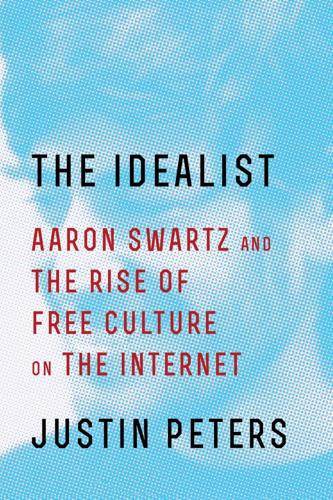
The Idealist: Aaron Swartz and the Rise of Free Culture on the Internet
by
Justin Peters
Published 11 Feb 2013
A gnu is also a large, hairy wildebeest, an animal to which Stallman bears a faint resemblance, if you squint and use your imagination.) After working on the GNU Project for approximately two years, Stallman doubled down on his principles and founded a complementary organization called the Free Software Foundation. The Free Software Foundation (“Don’t think of free as in free beer; think free as in free speech,” Stallman explained) was and is dedicated to the idea that unrestricted access to information and computer code is a simple matter of justice. The foundation argues that software ought to be liberated from licenses, passwords, and other restrictions that foster adversarial relationships among computer programmers and users.
…
“Talking with others at the [EIFL] meeting, I realized what must be done. If we couldn’t get free access to this knowledge, folks would have to take it.”66 He reiterated those points that morning at a Free Software Foundation–sponsored event called Software Freedom Day, where he delivered an “eye-opening” keynote address on public records and Guerilla Open Access. “[Swartz has] been using free software to make government records and other public domain material easily available and searchable by the public,” the Free Software Foundation’s blog reported. “He implored us to all call him, if we want to help.”67 As Software Freedom Day neared its end, Richard Stallman delighted attendees with a surprise appearance.
…
Berners-Lee programmed software at CERN, and, like many idealistic coders before him, he had become enamored of the Gospel of Richard Stallman. “A source of much debate over recent years has been whether to write software in-house or buy it from commercial suppliers. Now, a third alternative is becoming significant in what some see as a revolution in software supply,” he wrote, referring to the Free Software Foundation and the GNU Project. Berners-Lee wondered whether Stallman’s ideas might not be applied to the work he was doing for CERN. “Just as we publish physics for free, should we not in certain cases ‘publish’ our software?” he asked.61 One year after publishing his Stallman-inspired note in the CERN house journal, Berners-Lee followed through on that note’s central idea when he released to the world, for free, a project that he called the World Wide Web.
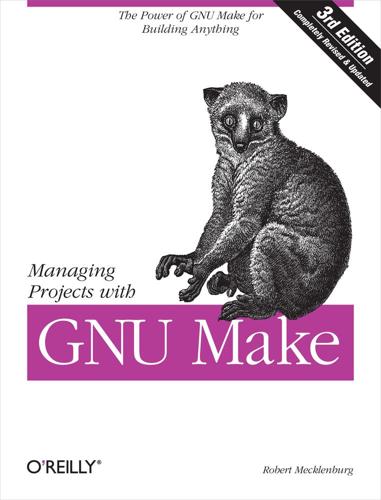
Managing Projects With GNU Make
by
Robert Mecklenburg
and
Andrew Oram
Published 19 Nov 2004
For example, to compute 7 minus 4, first create the number line subset 0 to 6, reverse it, then select the fourth element: number_line := 0 1 2 3 4 5 6 7 8 9... 1through6 := 0 1 2 3 4 5 6 reverse_it := 6 5 4 3 2 1 0 fourth_item := 3 Here is the algorithm in make syntax: # backwards - a reverse number line backwards := $(call generate, 9 8 7 6 5 4 3 2 1 0) # reverse - reverse a list of words reverse = $(strip \ $(foreach f, \ $(wordlist 1, $(length), $(backwards)), \ $(word $f, $1))) # minus - compute $1 minus $2 minus = $(word $2, \ $(call reverse, \ $(wordlist 1, $1, $(number_line)))) minus: # $(call minus, 7, 4) Multiplication and division are left as an exercise for the reader. Appendix C. GNU Free Documentation License—GNU Project—Free Software Foundation (FSF) Version 1.2, November 2002 Copyright © 2000,2001,2002 Free Software Foundation, Inc. 59 Temple Place, Suite 330, Boston, MA 02111-1307 USA Everyone is permitted to copy and distribute verbatim copies of this license document, but changing it is not allowed. 0. PREAMBLE The purpose of this License is to make a manual, textbook, or other functional and useful document "free" in the sense of freedom: to assure everyone the effective freedom to copy and redistribute it, with or without modifying it, either commercially or noncommercially.
…
If the Document specifies that a particular numbered version of this License "or any later version" applies to it, you have the option of following the terms and conditions either of that specified version or of any later version that has been published (not as a draft) by the Free Software Foundation. If the Document does not specify a version number of this License, you may choose any version ever published (not as a draft) by the Free Software Foundation. Index A note on the digital index A link in an index entry is displayed as the section title in which that entry appears. Because some sections have multiple index markers, it is not unusual for an entry to have several links to the same section.
…
It executes the makefile, displaying the GNU copyright followed by the commands as they are run by make, then it will dump its internal database. The data is collected into groups of values: variables, directories, implicit rules, pattern-specific variables, files (explicit rules), and the vpath search path: # GNU Make 3.80 # Copyright (C) 2002 Free Software Foundation, Inc. # This is free software; see the source for copying conditions. # There is NO warranty; not even for MERCHANTABILITY or FITNESS FOR A # PARTICULAR PURPOSE.normal command execution occurs here # Make data base, printed on Thu Apr 29 20:58:13 2004 # Variables ... # Directories ... # Implicit Rules ... # Pattern-specific variable values ... # Files ... # VPATH Search Paths Let's examine these sections in more detail.
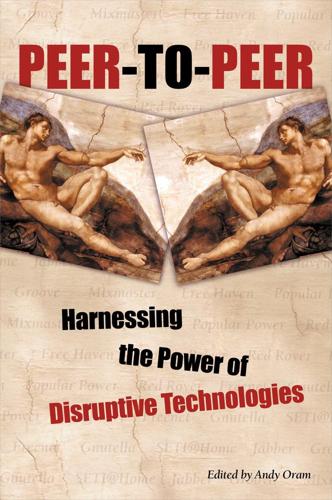
Peer-to-Peer
by
Andy Oram
Published 26 Feb 2001
I built the free software map in Figure 3.1 by picking out key messages from the Free Software Foundation (FSF) web site, http://www.fsf.org. I also added a few things (the darker ovals in the lower right quadrant of the picture) to show common misconceptions that were typically applied to free software. This figure, and the others in this chapter are slightly edited versions of slides used at the summit. Figure 3-1. Map of the old free software meme Please note that this diagram should not be taken as a complete representation of the beliefs of the Free Software Foundation. I simply summarized my interpretation of the attitudes and positioning I found on their web site.
…
I simply summarized my interpretation of the attitudes and positioning I found on their web site. No one from the Free Software Foundation has reviewed this figure, and they might well highlight very different points if given the chance to do so. There are a couple of things to note about the diagram. The ovals at the top represent the outward face of the movement—the projects or activities that the movement considers canonical in defining itself. In the case of the Free Software Foundation, these are programs like gcc (the GNU C Compiler), GNU Emacs, GhostScript (a free PostScript display tool), and the GNU General Public License, or GPL .
…
We did more than just change the name that we used to describe a collection of projects from “free software” to “open source.” In addition: We changed the canonical list of projects that we wanted to hold up as exemplars of the movement. (Even though BIND and sendmail and Apache and Perl are “free software” by the Free Software Foundation’s definition, they aren’t central to its free software “meme map” in the way that we made them for open source; even today, they are not touted on the Free Software Foundation web site.) What’s more, I’ve included a tag line that explains why each project is significant. For example, BIND isn’t just another free software program; it’s the heart of the Domain Name System and the single most mission-critical program on the Internet.

Coding Freedom: The Ethics and Aesthetics of Hacking
by
E. Gabriella Coleman
Published 25 Nov 2012
First, let’s take a closer look at this portion of the code that shows the use of boasting to induce a response (I have highlighted the relevant section in italics): /* Prime number generation Copyright (C) 1994 Free Software Foundation This program is free software; you can redistribute it and/or modify it under the terms of the GNU General Public License as published by the Free Software Foundation; either version 2, or (at your option) any later version. This program is distributed in the hope that it will be useful, but WITHOUT ANY WARRANTY; without even the implied warranty of MERCHANTABILITY or FITNESS FOR A PARTICULAR PURPOSE.
…
For example, in the early 1980s, “the precepts of this revolutionary Hacker Ethic,” Levy (1984, 39; emphasis added) observes, “were not so much debated and discussed as silently agreed upon. No Manifestos were issued.” Yet (and somewhat ironically) a mere year after the publication of his book, MIT programmer Richard Stallman charted the Free Software Foundation (FSF) ([1996] 2010) and issued “The GNU Manifesto,” insisting “that the golden rule requires that if I like a program I must share it with other people who like it.”12 Today, hacker manifestos are commonplace. If hackers did not discuss the intricacies of ethical questions when Levy first studied them, over the span of two decades they would come to argue about ethics, and sometimes as heatedly as they argue over technology.
…
This program is distributed in the hope that it will be useful, but WITHOUT ANY WARRANTY; without even the implied warranty of MERCHANTABILITY or FITNESS FOR A PARTICULAR PURPOSE. See the GNU General Public License for more details. You should have received a copy of the GNU General Public License along with this program; if not, write to the Free Software Foundation, Inc., 675 Mass Ave, Cambridge, MA 02139, USA. */ #include <stdlib.h> #include <string.h> /* Return the next prime greater than or equal to N. */ int nextprime (int n) { static int *q; static int k = 2; static int l = 2; int p; int *m; int i, j; /* You are not expected to understand this. */ if (!q) { /* Init */ q = malloc (sizeof (int) * 2); q[0] = 2; q[1] = 3; } Derived from the FSF’s Hurd development project, which is its kernel project, the code is a prime number generator.
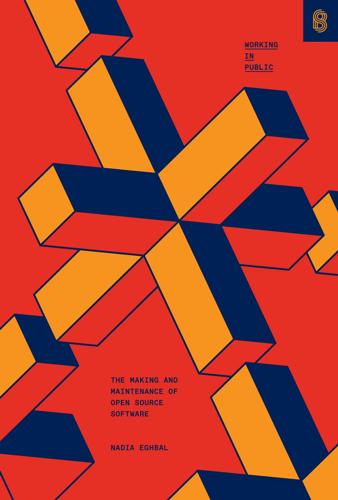
Working in Public: The Making and Maintenance of Open Source Software
by
Nadia Eghbal
Published 3 Aug 2020
Raymond, “The Right to Be Rude,” Armed and Dangerous, February 27, 2020, http://esr.ibiblio.org/?p=8609. 55 Richard Stallman, “Political Notes from 2019: July - October,” Richard Stallman’s Personal Site, October 31, 2019, https://stallman.org/archives/2019-jul-oct.html. Free Software Foundation, “Richard M. Stallman Resigns,” Free Software Foundation, n.d., https://www.fsf.org/news/richard-m-stallman-resigns. 56 Sindre Sorhus (@sindresorhus), “An observation after having . . .,” Twitter, December 8, 2016, 2:03 p.m., https://twitter.com/sindresorhus/status/806937150575017984. 57 Sindre Sorhus (@sindresorhus), “Some observations from having . . .,” Twitter, May 21, 2019, 7:03 a.m., https://twitter.com/sindresorhus/status/1130791267393163267?
…
Even Linus Torvalds issued a mea culpa in 2018, stepping away from the Linux project for a month in order to reflect on years of “people in our community confront[ing] me about my lifetime of not understanding emotions,” and calling it a “‘look in the mirror’ moment.”53 Eric S. Raymond was banned from the OSI’s mailing lists for combative language.54 And Richard Stallman resigned from his positions at MIT and the Free Software Foundation after making controversial comments on MIT’s Computer Science and Artificial Intelligence Laboratory (CSAIL) mailing list.55 Many people, on both sides of the issue, noted that Stallman’s comments—in which he dissected the definition of “rape” with the same pedantry that he dissects the term “free software”—weren’t unusually out of character from his past behavior.
…
INTRODUCTION 1 Tim Berners-Lee, “Information Management: A Proposal,” The Original Proposal of the WWW, HTMLized, May 1990, https://www.w3.org/History/1989/proposal.html. 2 Nadia Eghbal, “Roads and Bridges: The Unseen Labor Behind Our Digital Infrastructure,” Ford Foundation, July 14, 2016, https://www.fordfoundation.org/about/library/reports-and-studies/roads-and-bridges-the-unseen-labor-behind-our-digital-infrastructure. 3 Gustavo Pinto, Igor Steinmacher, and Marco Aurélio Gerosa, “More Common Than You Think: An In-Depth Study of Casual Contributors,” in 2016 IEEE 23rd International Conference on Software Analysis, Evolution, and Reengineering (SANER) (Suita, Japan: IEEE, March 2016): 518–528, https://doi.org/10.1109/saner.2016.68. 4 Twitter Bootstrap Usage Statistics,” Built With, accessed March 31, 2020, https://trends.builtwith.com/docinfo/Twitter-Bootstrap. 5 “Contributors: Commits,” Bootstrap Insights, GitHub, accessed March 31, 2020, https://github.com/twbs/bootstrap/graphs/contributors. 6 Nadia Eghbal, “User Support System Analysis,” Nayafia Code, Github, September 27, 2018, https://github.com/nayafia/user-support/blob/master/top-100-by-issue-volume.csv. 7 Suvodeep Majumder, Joymallya Chakraborty, Amritanshu Agrawal, and Tim Menzies, “Why Software Projects Need Heroes (Lessons Learned from 1000+ Projects),” ArXiv, April 22, 2019, https://arxiv.org/pdf/1904.09954.pdf. 8 Npm, Inc., “This Year in JavaScript: 2018 in Review and Npm’s Predictions for 2019,” Npm (blog), Medium, December 6, 2018, https://medium.com/npm-inc/this-year-in-javascript-2018-in-review-and-npms-predictions-for-2019-3a3d7e5298ef. 9 Steve Weber, The Success of Open Source (Cambridge, MA: Harvard University Press, 2005), Loc 867. 10 “The State of the Octoverse,” GitHub, 2019, https://octoverse.github.com/. 11 DinoInNameOnly, “Most of What You Read on the Internet Is Written by Insane People,” R/slatestarcodex, Reddit, October 27, 2018, https://www.reddit.com/r/slatestarcodex/comments/9rvroo/most_of_what_you_read_on_the_internet_is_written/. 12 CBS News, “Meet the Man behind a Third of What’s on Wikipedia,” CBS News, CBS Interactive, January 26, 2019, https://www.cbsnews.com/news/meet-the-man-behind-a-third-of-whats-on-wikipedia/. 13 Kristen Roupenian, “What It Felt Like When ‘Cat Person’ Went Viral,” The New Yorker, January 9, 2019, https://www.newyorker.com/books/page-turner/what-it-felt-like-when-cat-person-went-viral. 01 14 “The State of the Octoverse,” GitHub, 2019, https://octoverse.github.com/. 15 Free Software Foundation, “What Is Free Software?,” GNU Operating System, July 30, 2019, https://www.gnu.org/philosophy/free-sw.en.html. 16 Nicole Martinelli, “Walking the Walk: Why It’s a Crooked Path for Free Software Activists,” Super User, February 8, 2019, https://superuser.openstack.org/articles/walking-the-walk-why-its-a-crooked-path-for-free-software-activists/. 17 Steven Levy, Hackers: Heroes of the Computer Revolution - 25th Anniversary Edition (Sebastopol, CA: O’Reilly, 2010). 18 Linus Torvalds (torvalds), “Add Support for AR5BBU22 [0489:e03c],” Linux Pull Requests, GitHub, May 11, 2012, https://github.com/torvalds/linux/pull/17#issuecomment-5654674. 19 Eric S.
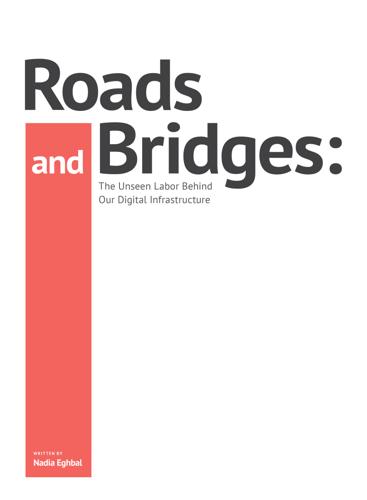
Roads and Bridges
by
Nadia Eghbal
In 1983, he launched GNU, a free operating system, and in doing so sparked what came to be known as the “free software movement,” which galvanized a group of people who believed that software could have a greater reach and benefit to society if it were made freely available. Stallman later founded the Free Software Foundation in 1985 to support GNU and other free software efforts. The Free Software Foundation defines free software as software that gives the user the freedom to share, study and modify it.[24] GNU defines four freedoms associated with such software: Freedom 0: The freedom to run the program as you wish, for any purpose. Freedom 1: The freedom to study how the program works, and change it so it does your computing as you wish.
…
OSS refers to Open Source Software only. Free software Software that is free to run for any purpose (commercial or non-commercial) as well as be studied, changed, and distributed. The term originated around 1983 from the work of computer scientist Richard Stallman, the GNU Project, and Free Software Foundation (founded 1985). GitHub A commercial platform for hosting code. GitHub launched in 2008 and is currently the most popular platform for people to host and collaborate on open source projects. (One can also host private code on GitHub.) GitHub helped standardize open source development practices and bring open source to a wider audience.
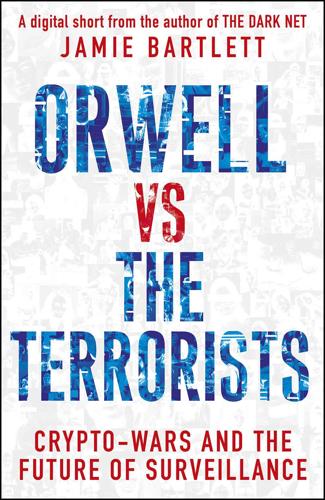
Orwell Versus the Terrorists: A Digital Short
by
Jamie Bartlett
Published 12 Feb 2015
Homosexuals in the Middle East really do use encryption to avoid a knock at the door from brutal enforcers of state morality. Anonymising tools like the Tor browser has had a hugely beneficial effect on free expression around the world. In 2011 the Tor Project – the group that keeps network system going – was awarded the Free Software Foundation award in the ‘Projects of Social Benefit’ category, because it has allowed millions of people to access the net while retaining control over their privacy. Tor, after all, was ‘pivotal’ in helping to mobilise dissident movements in Iran and Egypt. But it’s not just in the more hostile parts of the world that privacy matters.
…
It is typical of the sort of creativity and innovation that characterises the dark net: a place without limits, a place to push boundaries, a place to express ideas without censorship, a place to sate our curiosities and desires, whatever they may be. All dangerous, magnificent and uniquely human qualities. * * * fn1 In 2010 Tor was awarded the Free Software Foundation’s Award for Projects of Social Benefit, in part for the service it provides for whistleblowers, human-rights campaigners and activists in dissident movements. fn2 September 1993, the month America On-Line started to offer its subscribers access to Usenet, is etched into internet folklore as ‘the eternal September’, when newcomers logged on to the internet en masse.
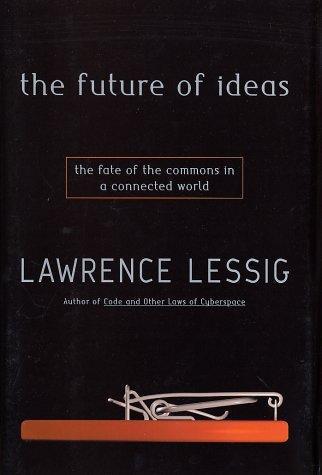
The Future of Ideas: The Fate of the Commons in a Connected World
by
Lawrence Lessig
Published 14 Jul 2001
So deep is the rhetoric of control within our culture that whenever one says a resource is “free,” most believe that a price is being quoted—free, that is, as in zero cost. But “free” has a much more fundamental meaning—in French, libre rather than gratis, or for us non-French speakers, and as the philosopher of our age and founder of the Free Software Foundation Richard Stallman puts it, “free, not in the sense of free beer, but free in the sense of free speech.”12 A resource is “free” if (1) one can use it without the permission of anyone else; or (2) the permission one needs is granted neutrally. So understood, the question for our generation will be not whether the market or the state should control a resource, but whether that resource should remain free.13 This is not a new question, though we've been well trained to ignore it.
…
The knowledge built into that driver had been produced by many people, not all of whom had been employed by the company. There was something wrong, then, with the company locking up that knowledge. And this wrong sowed the seed in Stallman's mind of a movement to resist this closing.9 In 1985, that movement was born. Stallman founded the Free Software Foundation. Its aim was to encourage the development of software that carried its source with it. The aim was to assure that the knowledge built into software was not captured and kept from others. The objective was to support a commons for code.10 AT&T gave the movement an important boost, quite unintentionally.
…
Berkeley had a version of Unix that it had been distributing; after AT&T's change, the Berkeley release had to undergo a massive retooling to extract the AT&T code so that it could release a version of Unix (BSD Unix) that was free of AT&T's restrictions. But Stallman responded in a more productive and ambitious way. He wanted to build a free version of Unix that would, by design, always be free. So the Free Software Foundation launched project GNU—a recursive acronym meaning “GNU's not Unix.” The GNU project was first to develop the suite of tools necessary to build an operating system and then to use those tools to build the GNU OS. Throughout the 1980s, Stallman worked to do just that. Slowly he added tools to the project.

The Wikipedia Revolution: How a Bunch of Nobodies Created the World's Greatest Encyclopedia
by
Andrew Lih
Published 5 Jul 2010
In a world dominated by computing juggernauts with proprietary software, Stallman saw the Free Software Foundation keeping the hacker flame alive, allowing programmers to inspect the “source code” guts that ran on computers and learn from it. Access to source code (the DNA of computer programs) was something that most companies would either not allow or charge large amounts of money for. Confusingly, the word “free” has an unfortunate collision of meanings in the English language. Stallman is quick to point out that the “free” in Free Software Foundation is “free as in freedom, not free as in beer.” Though having zero-cost software is a good thing, it was not the meaning of “free” for him.
…
Disney can use stories from Mother Goose tales from the public domain, create new A_Nupedia_27 works based on Mother Goose, and sue anyone who creates content similar to Disney’s movies, specifically because it can copyright the derivative works.) Stallman’s copyleft was not just an abstract idea. To lead by example, he put it into practice immediately by creating the Free Software Foundation, which would be committed to writing free software tools, all created under a new GNU General Public License. At the time, even Stallman’s strident supporters were skeptical. The idea was powerful, but the stark reality was that large computer companies like Sun, Digital Equipment Corporation, Hewlett-Packard, Apple, and Microsoft ruled the landscape.
…
Dobb’s Journal, 26 CoolCat, 186 Dubner, Stephen J., 197 copyleft licenses, 5, 26–27, 29, 31, 72 Durova, 223 copyright, 94, 111, 186, 192 Dutch Wikipedia, 146 government data and, 100 Creative Commons, 26, 212 “Croydon facelift” article, 118 editing: Cunctator, The, 171–72, 175 of Nupedia articles, 37–41, 43, 63, 64 Cunningham, Karen, 55–56 at Slashdot, 68–69 Cunningham, Ward, 45–50, 55–56, editing of Wikipedia articles, 3–4, 6, 38, 75, 98 64–66, 69, 73, 88, 114–15, 131 background of, 45–46 edit histories, 64–65, 71, 82, 91–93 HyperCard and, 47–50, 54, 55, 56 edit wars, 95, 122–31, 136, 146 Index_239 Einstein, Albert, 181 File Transfer Protocol (ftp), 34, 53 “Elephant” article, 201–2 Firefox, 214–15 Emacs, 28 Firmage, Joe, 211 Emax, 126, 128 “Five-second rule” article, 117 Emergence: The Connected Lives of Ants, flaming, 86, 170 Brains, Cities, and Software (Johnson), “Flying Spaghetti Monster” article, 118 82, 96 Forrester, James, 181 Emerson, Ralph Waldo, 43, 61 France, 17 “Emperor penguin” article, 93 Encyclopédie in, 15–16, 115 Encarta, 5, 16–17, 204–5, 219 Wikipedia in, 83, 139, 146, 147 Enciclopedia Libre, 9, 138 Franks, Charles, 35 Encyclopedia Britannica, 5, 13, 16–17, Freenode, 89 115, 219, 220 Free Software Foundation (FSF), 27, 28 Britannica.com, 183, 188 Friedman, Thomas, 11 hybrid approach of, 209–10, 228 ftp (File Transfer Protocol), 34, 53 multimedia content of, 209–10 Furnivall, Frederick, 70 Wikipedia and, 208, 228, 229 encyclopedias, 7, 11, 13–17, 47, 115, 134, 216 Gamaliel, 186–87 Britannica, see Encyclopedia Britannica Gambia, 158 Citizendium, 190, 211–12 Gandhi, Mohandas K., 201 Digital Universe, 210 Gates, Rick, 34–35, 53 electronic, 16–17 Gay Niggers Association of America Encarta, 5, 16–17, 204–5, 219 (GNAA), 170–71 Encyclopédie, 15–16, 115 Gdansk/Danzig war, 122–30, 146 GNUpedia, 79 Geekcorps, 158 history of, 14–15 Gerlach, Nina, 148 Interpedia, 34–35, 148 Germany, 17 Nupedia, see Nupedia Wikipedia in, 11, 139, 140, 147–49, printed, problems of, 219–20 215, 220, 227 World Book, 16–19 GNU, 27–30, 32 Enlightenment, 15 GNU Free Documentation License (GFDL), Enyedy, Edgar, 137–38 72–73, 211–12 Essjay (Ryan Jordan), 194–200 GNU General Public License, 27, 72 EvilBrak, 202 Gnuhoo, 30 Excite, 22, 34 GNU Manifesto (Stallman), 26 experts, 72, 225 GNUpedia, 79 “Exploding whale” article, 118 GodKing, 175, 176 Google, 4, 11, 22, 34, 115, 121, 131, 184, 192, 202, 213, 214, 221 fair use, 111 JewWatch and, 202–4 “False Wikipedia ‘Biography,’ A” Mozilla Foundation and, 214–15 (Seigenthaler), 9–10 GoogleBomb, 203–4 Fellini, Federico, 133 Google Groups, 86 “Festivus” article, 117 Google Watch, 192 240_Index Gopher, 34, 53 Internet Relay Chat (IRC), 89, 110, 195 Grant, David, 104 Interpedia, 34–35, 148 Grasse, Pierre-Paul, 82 ISO 8859-1 standard, 141–43, 145 Gua de Malves, Jean Paul de, 15 Jacobs, Jane, 96–97 hacker culture, 5, 6, 24–27, 30, 55, 67, jalt ( jealousy altruism factor), 226 73, 85–87, 147, 172, 217 Japanese Wikipedia, 139, 140, 141–42, Hall, Fitzedward, 71 144, 145–47 Hamilton, Bruce, 40 Jargon File, 85–86 Haykinson, Ilya, 207 Javanese language, 160 Hephaestos, 185 JewWatch, 202–4 Hewlett-Packard, 27, 29–30, 56 Jobs, Steve, 52 H.J., 123 Johnson, Mark, 46 Hooper, Horace Everett, 16 Johnson, Samuel, 70 “How to Destroy Wikipedia” (The Johnson, Steven, 82, 96, 97 Cunctator), 172 Jordan, Ryan (Essjay), 194–200 HTML (Hypertext Markup Language), “Jumping the shark” article, 118 53–54, 144, 221 http (Hypertext Transfer Protocol), 53 httpd (http daemon), 56 Kapor, Mitch, 8 Huntsville, Ala., 18 Karsai, Istvan, 82 Hust, Christoph, 40 Kazakh Wikipedia, 155–57 HyperCard, 47–51, 54–56 Keegan, Brian, 65 hyperlinks (hypertext), 47, 48, 50, 54–55, Kennedy, John F., 10, 191 115 Kennedy, Robert F., 10, 191 Hypertext Markup Language (HTML), Kennisnet, 191 53–54, 144, 221 KeyStroke, 128 Hypertext Transfer Protocol (http), 53 kill files, 86–87 Kinsley, Michael, 205–8 “Know It All, The” (Schiff), 196 IBM, 11, 56 Korean language, 141–42, 144 Ibou, 158 Kovitz, Ben, 43–45, 60, 61, 62 iCommons, 157 Kropotkin, Peter, 173 Ifcher, Ruth, 37, 39, 40, 211 Kuro5hin, 189 India, 159 Indonesian language, 136 “Infinite monkey theorem” article, 118 Lakoff, George, 46–47 Intel, 50 Lane, G.
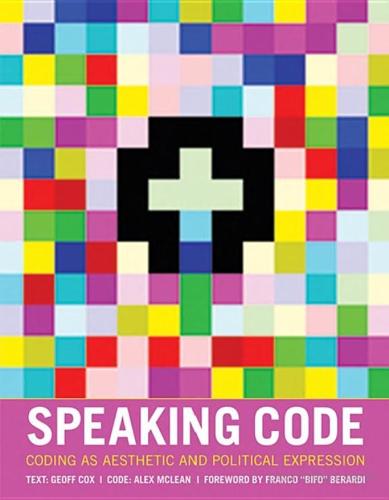
Speaking Code: Coding as Aesthetic and Political Expression
by
Geoff Cox
and
Alex McLean
Published 9 Nov 2012
The detail is useful, as the two intersecting terms are often simply conflated into “FLOSS” (free libre open-source software) and confounded by a far too straightforward description of producing and releasing software, rather than a wider discussion of the competing ideologies they espouse. According to Kelty, to put it simply free software describes a social movement, whereas open-source is a development methodology.49 To the Free Software Foundation, it is also necessary to clarify the concept of “free”: “‘Free software’ is a matter of liberty, not price. To understand the concept, you should 78 Chapter 3 think of ‘free’ as in ‘free speech’, not as in free beer.”50 In other words, and as Bauwens also explained, “free” does not mean noncommercial, and there is no contradiction between selling copies and offering them gratis.
…
Berry also points out how openness has tended to be understood through definitions of transparency and freedom that are based on individualistic notions of how society might be better organized.60 He thinks the arguments tend to be rooted in an “engineering philosophy of technology” at the expense of its wider cultural and ethical significance.61 In this sense, the Free Software Foundation operates rather too much like a craft guild for programmers,62 with a radical project in terms of technology but one not fully formed into a coherent political position. In Berry’s view, the issues related to the ways that labor and property are encoded into software tend to be overlooked, and as a consequence an understanding of freedom and control is somewhat occluded by code, making access to its source in production all the more necessary.
…
It proposes coding practices that have not only a body but also a body politic. #!/usr/bin/python # # # # # # (C) alex@slab.org Please edit and share. This program is free software: you can redistribute it and/or modify it under the terms of the GNU General Public License as published by the Free Software Foundation, either version 3 of the License, or (at your option) any later version. import time, os, MultipartPostHandler, urllib2, cookielib import libtorrent as lt fs = lt.file_storage() lt.add_files(fs, __file__) t = lt.create_torrent(fs, 65536) t.add_tracker("udp://tracker.openbittorrent.com:80", 0) 110 Chapter 4 lt.set_piece_hashes(t, '.') tf = lt.bencode(t.generate()) fh = open('me.torrent', 'wb') fh.write(tf) fh.close() info = lt.torrent_info(lt.bdecode(lt.bencode(t.generate()))) opener = urllib2.build_opener( urllib2.HTTPCookieProcessor(cookielib.CookieJar()), MultipartPostHandler.MultipartPostHandler ) opener.open("http://runme.org/submit/", {'act': 'login', 'email': 'torrentpy@mail.slab.org', 'password': 'hjrvrs' } ) opener.open("http://runme.org/submit/", {'explicit_project_id': '974', 'act': 'submit_software', 'file_software': open('me.torrent') } ) ses = lt.session() h = ses.add_torrent(info, "./") state_str = ['queued', 'checking', 'downloading metadata', 'downloading', 'finished', 'seeding', 'allocating'] while (1): s = h.status() print '%.2f%% complete (down: %.1f kb/s up: %.1f kB/s peers: %d) %s' % (s.progress * 100, s.download_rate / 1000, s.upload_rate / 1000, s.num_peers, state_str[s.state]) time.sleep(5) Notes 0 Double Coding 1.
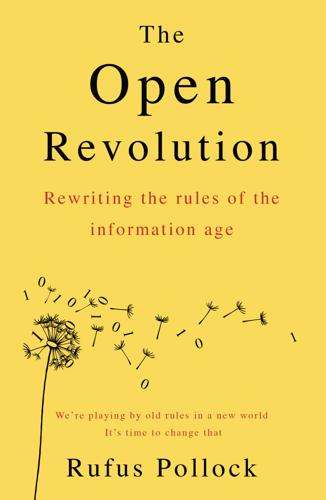
The Open Revolution: New Rules for a New World
by
Rufus Pollock
Published 29 May 2018
If one were to look for a totemic moment similar to the publication of Carson’s Silent Spring, it would probably be Richard Stallman’s work at the Free Software Foundation. Whilst Carson exposed the harm done by pesticides, Stallman revealed the increasing threat posed by the way that more and more information was becoming proprietary. At first on a tiny scale, a community of coders and scientists, connected by personal computers and the rudimentary internet, gathered around a radical ideal, as they gradually worked out the ramifications of the difference between information and physical things. Information politics began with such groups as the Free Software Foundation (founded 1986), the Electronic Frontier Foundation (1990), and the Foundation for a Free Information Infrastructure (1999).
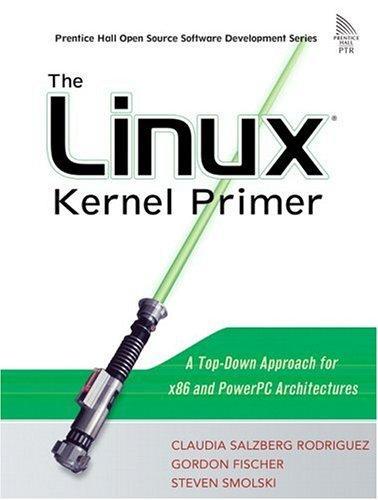
The Linux kernel primer: a top-down approach for x86 and PowerPC architectures
by
Claudia Salzberg Rodriguez
,
Gordon Fischer
and
Steven Smolski
Published 15 Nov 2005
If you plan on hacking the Linux kernel, it is a good idea to become familiar with the terms of this license so that you know what the legal fate of your contribution will be. There are two main camps around the conveyance of free and open-source software. The Free Software Foundation and the open-source groups differ in ideology. The Free Software Foundation, which is the older of the two groups, holds the ideology that the word free should be applied to software in much the same way that the word free is applied to speech. The open-source group views free and open-source software as a different methodology on par with proprietary software.
…
Index [SYMBOL] [A] [B] [C] [D] [E] [F] [G] [H] [I] [J] [K] [L] [M] [N] [O] [P] [Q] [R] [S] [T] [U] [V] [W] [X] [Y] [Z] Index [SYMBOL] [A] [B] [C] [D] [E] [F] [G] [H] [I] [J] [K] [L] [M] [N] [O] [P] [Q] [R] [S] [T] [U] [V] [W] [X] [Y] [Z] $(Q) variable /dev directory /etc/fstab files _ _volatile__modifer 2nd 3rd 4th 5th 6th __builtin_expect() function __free_page() function __get_dma_pages() function __get_free_page() function __init macro 2nd Index [SYMBOL] [A] [B] [C] [D] [E] [F] [G] [H] [I] [J] [K] [L] [M] [N] [O] [P] [Q] [R] [S] [T] [U] [V] [W] [X] [Y] [Z] ABI (Application Binary Interface) absolute pathnames 2nd Accelerated Graphics Port (AGP) access devices 2nd DMA 2nd rights 2nd 3rd 4th 5th actiev_mm field (task_struct structure) activated field (task_struct structure) active_list field (memory zones) add_wait_queue() function add_wait_queue_exclusive() function adding caches 2nd 3rd 4th 5th 6th 7th 8th 9th code for system calls 2nd 3rd to wait queues address space fields task_struct structure 2nd address_space structure 2nd 3rd addresses intervals linear linear spaces memory management 2nd 3rd logical memory mm_struct 2nd 3rd 4th physical translation 2nd i386 Intel-based memory management virtual vm_area_struct 2nd 3rd 4th addressing devices Advanced Programmable Interrupt Controller (APIC) agetty programs AGP (Accelerated Graphics Port) algorithms big-o notations elevator aligning caches all_unreclaimable field (memory zones) alloc_page() function alloc_pages() function allocating memory kmalloc() function 2nd kmem_cache_alloc() function allocators slabs global variables 2nd memory management 2nd 3rd 4th 5th 6th 7th 8th 9th 10th 11th 12th 13th 14th 15th 16th 17th anticipatory I/O schedulers anticipatory I/O scheduling APIC (Advanced Programmable Interrupt Controller) Application Binary Interface (ABI) Application Specific Integrated Circuit (ASIC) applications distributions Debian Fedora 2nd Gentoo 2nd Mandriva Red Hat 2nd SUSE Yellow Dog filesystems 2nd 3rd 4th 5th 6th page caches 2nd 3rd 4th VFS structures 2nd 3rd 4th 5th 6th VFS system calls 2nd 3rd 4th 5th 6th 7th 8th 9th 10th 11th 12th 13th 14th 15th 16th 17th 18th 19th 20th 21st 22nd 23rd 24th 25th 26th 27th 28th 29th 30th virtual 2nd 3rd 4th 5th 6th 7th 8th 9th 10th 11th 12th 13th parallel ports ar command 2nd arch/ppc/ source code listings architecture assembly language example PowerPC 2nd 3rd 4th x86 2nd 3rd Big Endian/Little Endian CISC IHA inline assembly 2nd _ _volatile__modifer 2nd 3rd 4th 5th 6th asm keyword clobbered registers constraints input operands output operands parameter numbering memory initialization i386 Intel-based 2nd 3rd 4th 5th 6th 7th 8th 9th 10th 11th 12th PowerPC 2nd 3rd 4th 5th 6th 7th 8th 9th 10th x86 PowerPC Linux Power UMA architetcure dependence RISC architetcure-dependent source code 2nd architetcure-independent source code 2nd areas memory 2nd arithmetic instructions (x86) array field (task_struct structure) arrays priority ASIC (Application Specific Integrated Circuit) asm keyword asmlinkage assemblers assembly asm keyword inline 2nd _ _volatile__modifer 2nd 3rd 4th 5th 6th clobbered registers constraints input operands output operands parameter numbering assembly languages example of PowerPC 2nd 3rd 4th x86 2nd 3rd PowerPC 2nd 3rd 4th x86 2nd 3rd 4th asynchronous events asynchronous execution flow exceptions 2nd 3rd 4th 5th 6th 7th 8th 9th 10th 11th 12th 13th 14th 15th 16th 17th 18th 19th 20th 21st 22nd 23rd 24th 25th 26th asynchronous I/O operations atomic flags [See also flags] attributes fields task_struct structure 2nd files Index [SYMBOL] [A] [B] [C] [D] [E] [F] [G] [H] [I] [J] [K] [L] [M] [N] [O] [P] [Q] [R] [S] [T] [U] [V] [W] [X] [Y] [Z] Basic Input Output System (BIOS) BAT (Block Address Translation) Bell Laboratories Big Kernel Lock (BKL) Big-Endian big-o notations binary trees 2nd binfmt field (task_struct structure) BIOS (Basic Input Output System) BKL (Big Kernel Lock) Block Address Translation Block Address Translation (BAT) block devices block_device_operations structure blocked state blocked to ready transition state blocks devices 2nd disks blr (Branch to Link Register) boot loaders GRUB 2nd 3rd 4th LILO 2nd PowerPC 2nd Yaboot 2nd bottom-half interrupt handler methods bouncing Bourne shells branch instructions (PowerPC) Branch to Link Register (blr) bridges I/O 2nd 3rd buddy systems (memory management) 2nd 3rd 4th 5th buffer_head structure buffer_init() function calling 2nd buffers caches TLBs build_all_zonelists() function calling 2nd building kernels compilers cross compilers 2nd ELF object files 2nd 3rd 4th 5th 6th 7th 8th 9th linkers source build systems_ 2nd 3rd 4th 5th 6th 7th 8th 9th 10th 11th 12th 13th 14th 15th toolchains 2nd parallel port drivers 2nd 3rd 4th 5th 6th 7th 8th busses I/O 2nd 3rd Index [SYMBOL] [A] [B] [C] [D] [E] [F] [G] [H] [I] [J] [K] [L] [M] [N] [O] [P] [Q] [R] [S] [T] [U] [V] [W] [X] [Y] [Z] C language usage asmlinkage const keyword 2nd inline keyword UL volatile keyword 2nd cache_cache global variable cache_chain global variable cache_chain_sem global variable cache_grow() function 2nd 3rd cache_sizes descriptors caches aligning creating 2nd 3rd 4th 5th 6th 7th 8th 9th descriptors 2nd 3rd 4th destroying 2nd kmem_cache page pages address_space structures 2nd 3rd filesystems 2nd 3rd 4th tracing 2nd 3rd 4th 5th 6th 7th 8th 9th 10th 11th 12th 13th types of cahces buffers calaculations dynamic priority calibrate_delay() function calling 2nd 3rd call system VFS 2nd 3rd 4th 5th 6th 7th 8th 9th 10th 11th 12th 13th 14th 15th 16th 17th 18th 19th 20th 21st 22nd 23rd 24th 25th 26th 27th 28th 29th 30th calling buffer_init() function 2nd build_all_zonelists() function 2nd calibrate_delay() function 2nd 3rd console_init() function 2nd init_IRQ() function 2nd 3rd late_time_init() function local_irq_enable() function lock_kernel() function 2nd mem_init() function 2nd 3rd 4th 5th 6th 7th 8th page_address_init() function 2nd 3rd 4th page_alloc_init() function 2nd page_writeback_init() function 2nd 3rd parse_args() function 2nd 3rd pgtable_cache_init() function 2nd printk() function proc_root_init() function 2nd 3rd profile_init() function radix_tree_init() function rcu_init() function rest_init() function 2nd sched_init() function 2nd 3rd security_scaffolding_startup() function setup_arch() function 2nd 3rd 4th 5th 6th setup_per_cpu_areas() function 2nd 3rd signals_init() function 2nd smp_prepare_boot_cpu() function 2nd softirq_init() function time_init() function 2nd trap_init() function vfs_cache_init() function 2nd 3rd 4th 5th 6th 7th 8th 9th calls [See system calls] process creation system 2nd clone() function 2nd 3rd do_fork() function 2nd 3rd 4th 5th 6th fork() function 2nd vfork() function 2nd capabilties fields task_struct structure 2nd characters devices 2nd 3rd 4th child processes 2nd children field (task_struct structure) chipsets CHRP (Common Hardware Reference Platform) CISC (Complex Instruction Set Computing) architecture clobbered registers 2nd clocks devices real-time 2nd 3rd 4th 5th 6th 7th 8th 9th clone() function 2nd 3rd close() function 2nd 3rd 4th 5th 6th 7th CML2 code inline assembly 2nd _ _volatile__ modifer 2nd 3rd 4th 5th 6th asm keyword clobbered registers constriants input operands output operands parameter numbering code generation phases coloring (slabs) comm field (task_struct structure) commands ar 2nd hexdump objcopy Common Hardware Reference Platform (CHRP) compilers 2nd asmlinkage cross 2nd Complex Instruction Set Computing (CISC) architecture components MBR compound pages computer programs [See also applications] condition register (CR) configuration kernel configuration tool configuring caches 2nd 3rd 4th 5th 6th 7th 8th 9th devices writing code 2nd 3rd 4th 5th 6th 7th 8th 9th 10th 11th 12th 13th 14th 15th initrd console_init() function calling 2nd const keyword 2nd constants UL marking constraints context context of execution context_switch() function 2nd 3rd 4th 5th 6th 7th 8th 9th 10th 11th 12th control of files control bits control information, transmitting controllers DMA 2nd interrupts controlling terminal count field (flags) count register (CTR) CPUs yielding 2nd 3rd 4th 5th 6th 7th 8th 9th 10th 11th 12th cpus_allowed field (task_struct structure) CR (condition register) create_process program 2nd 3rd credentials fields task_struct structure 2nd cross compilers 2nd cs_cachep field (cache descriptors) cs_dmacachep field (cache descriptors) cs_size field (cache desciptors) ctor field (cache descriptors) CTR (count register) current task structures current variable current working directories Index [SYMBOL] [A] [B] [C] [D] [E] [F] [G] [H] [I] [J] [K] [L] [M] [N] [O] [P] [Q] [R] [S] [T] [U] [V] [W] [X] [Y] [Z] Data BAT (DBAT) data instructions (x86) data relocate (DR) data segments data structures VFS 2nd 3rd 4th 5th 6th 7th 8th 9th 10th 11th 12th datatypes linked lists 2nd 3rd 4th searching 2nd 3rd trees binary 2nd red black 2nd DBAT (Data BAT) deactivating tasks dead processes deadline I/O schedulers deadlock Debian debugging device drivers 2nd DECLARE_WORK() macro declaring IOCTL numbers 2nd 3rd 4th decrementers defining execution contexts defunct processes dentry structures 2nd 3rd 4th 5th dependence architecture descriptors cache_sizes caches 2nd 3rd 4th files kmem_cache memory zones 2nd 3rd processes 2nd 3rd 4th 5th address space fields 2nd attribute fields 2nd capabilities fields 2nd credentials fields 2nd filesystem fields 2nd limitations fields 2nd 3rd relationship fields 2nd scheduling fields 2nd 3rd 4th descriptors (files) destroying caches 2nd devfs (Linux Device Filesystem) devices access 2nd addressing block characters 2nd drivers 2nd creating 2nd 3rd 4th 5th 6th 7th 8th 9th 10th 11th 12th 13th 14th 15th debugging 2nd types of 2nd 3rd 4th files 2nd 3rd block devices 2nd characters 2nd clocks DMA 2nd generic block drivers 2nd 3rd networks operations 2nd request queues 2nd 3rd 4th 5th 6th 7th 8th 9th 10th 11th scheduling I/O 2nd 3rd 4th 5th 6th 7th 8th 9th 10th 11th terminals models sysfs 2nd 3rd 4th pseudo Direct Memory Access (DMA) 2nd direct store segments directories 2nd /dev current working files 2nd 3rd fs/ home init/ kernel/ mm/ Page Global Directory working dirty pages, flushing 2nd disks blocks formatting initrd 2nd partitions 2nd distributions Debian Fedora 2nd Gentoo 2nd Mandriva Red Hat 2nd SUSE Yellow Dog DMA (Direct Memory Access) 2nd dmesg tool do_exit() function 2nd 3rd 4th do_fork() function 2nd 3rd 4th 5th 6th do_page_fault() function DR (data relocate) driver tables drivers cource code traversing 2nd 3rd 4th 5th 6th 7th 8th 9th 10th 11th 12th 13th 14th 15th 16th 17th 18th creating 2nd 3rd 4th 5th 6th 7th 8th 9th 10th 11th 12th 13th 14th 15th debugging 2nd devices 2nd parallel ports building 2nd 3rd 4th 5th 6th 7th 8th types of 2nd 3rd 4th wait queues 2nd 3rd 4th 5th work queues 2nd 3rd dtor field (cache descriptors) dumb terminals dynamic libraries dynamic priority calculations Index [SYMBOL] [A] [B] [C] [D] [E] [F] [G] [H] [I] [J] [K] [L] [M] [N] [O] [P] [Q] [R] [S] [T] [U] [V] [W] [X] [Y] [Z] EA (effective address) effective address (EA) effective group IDs effective user IDs elevator algorithms ELF (Executable and Linking Format) object files 2nd 3rd 4th 5th 6th 7th 8th 9th euid field (task_struct structure) events wait_event*() interfaces 2nd EXCEPTION() macro exceptions asynchronous execution flow 2nd 3rd 4th 5th 6th 7th 8th 9th 10th 11th 12th 13th 14th 15th 16th 17th 18th 19th 20th 21st 22nd 23rd 24th 25th 26th page faults PowerPC page faults exec() system calls Executable and Linking Format (ELF) object files 2nd 3rd 4th 5th 6th 7th 8th 9th executing processes adding to wait queues asynchronous execution flow 2nd 3rd 4th 5th 6th 7th 8th 9th 10th 11th 12th 13th 14th 15th 16th 17th 18th 19th 20th 21st 22nd 23rd 24th 25th 26th 27th clone() function 2nd 3rd creating 2nd do_exit() function 2nd 3rd 4th do_fork() function 2nd 3rd 4th 5th 6th fork() function 2nd lifespans 2nd 3rd 4th 5th 6th 7th sys_exit() function 2nd termination tracking 2nd 3rd 4th 5th 6th 7th 8th 9th 10th vfork() funciton 2nd wait queues 2nd wait() function 2nd 3rd 4th 5th 6th wait_event*() interfaces 2nd waking up 2nd 3rd 4th schedulers context_switch() function 2nd 3rd 4th 5th 6th 7th 8th 9th 10th 11th selecting tasks 2nd 3rd 4th 5th 6th 7th 8th 9th 10th yielding CPUs 2nd 3rd 4th 5th 6th 7th 8th 9th 10th 11th 12th execution context of processes create_process program 2nd 3rd execution contexts, defining exit_code field (task_struct structure) exit_signal field (task_struct structure) exploration tools (kernels) ar command 2nd hexdump command mm objcopy command objdump/readelf 2nd EXPORT_SYMBOL macro exporting symbols extensions filenames external fragmentation external interrupts Index [SYMBOL] [A] [B] [C] [D] [E] [F] [G] [H] [I] [J] [K] [L] [M] [N] [O] [P] [Q] [R] [S] [T] [U] [V] [W] [X] [Y] [Z] faults (pages) 2nd memory management 2nd 3rd 4th 5th 6th 7th 8th 9th fdatasync system calls Fedora 2nd field handlers fields flags 2nd memory zones 2nd 3rd process descriptor address space 2nd attributes 2nd capabilities 2nd credentials 2nd filesystem 2nd limitations 2nd 3rd relationship 2nd scheduling 2nd 3rd 4th superblock structures 2nd 3rd operations 2nd 3rd task_struct structure address space 2nd attribute 2nd capabilities 2nd credentials 2nd filesystem 2nd limitations 2nd 3rd relationship 2nd scheduling 2nd 3rd 4th file descriptors file structures VFS 2nd 3rd filenames extensions files 2nd /etc/fstab attributes control descriptors devices 2nd 3rd block devices 2nd characters 2nd clocks DMA 2nd generic block drivers 2nd 3rd networks operations 2nd request queues 2nd 3rd 4th 5th 6th 7th 8th 9th 10th 11th scheduling I/O 2nd 3rd 4th 5th 6th 7th 8th 9th 10th 11th terminals directories 2nd 3rd ELF 2nd 3rd 4th 5th 6th 7th 8th 9th filenames kernels 2nd protection 2nd 3rd 4th 5th metadata modes operations parameters offsetting pathnames 2nd processes close() function 2nd 3rd 4th 5th 6th 7th files_struct structure 2nd 3rd 4th fs_struct structure open() function 2nd 3rd 4th 5th 6th regular 2nd types 2nd types of files field (task_struct structure) files_struct structure 2nd 3rd 4th filesystems 2nd devfs fields task_struct structure 2nd handlers hierarchies implementing kernels 2nd layers 2nd 3rd 4th 5th 6th 7th navigating 2nd overview 2nd 3rd 4th 5th 6th page caches 2nd 3rd 4th performance types of VFS VFS structures 2nd 3rd 4th 5th 6th VFS system calls 2nd 3rd 4th 5th 6th 7th 8th 9th 10th 11th 12th 13th 14th 15th 16th 17th 18th 19th 20th 21st 22nd 23rd 24th 25th 26th 27th 28th 29th 30th virtual 2nd 3rd 4th 5th 6th 7th 8th 9th 10th 11th 12th 13th first_time_slice field (task_struct structure) fixed-point instructions (PowerPC) flags memory management 2nd flags field flags field (cache descriptors) flags field (task_struct structure) Flash flips 2nd 3rd floating-point instructions (PowerPC) flops 2nd 3rd flushing dirty pages 2nd for_each_zone() function fork() function 2nd fork() system calls forked processes formatting caches 2nd 3rd 4th 5th 6th 7th 8th 9th devices writing code 2nd 3rd 4th 5th 6th 7th 8th 9th 10th 11th 12th 13th 14th 15th disks fragmentation external frames pages memory management 2nd 3rd 4th 5th 6th 7th 8th free field (slab descriptors) free software 2nd Free Software Foundation (FSF) free_area field ( memory zones) free_page() function free_pages field (memory zones) front-side busses fs field (task_struct structure) fs/ directory fs_struct structure FSF (Free Software Foundation) fsgid field (task_struct structure) fsuid field (task_struct structure) fsync system calls funcitons nice() function is_highmem() kmalloc() 2nd kmem_cache_alloc() functions __builtin_expect() __free_page() __get_dma_pages() __get_free_page() add_wait_queue() add_wait_queue_exclusive() alloc_page() alloc_pages() cache_grow() 2nd 3rd close() 2nd 3rd 4th 5th 6th 7th context_switch() 2nd 3rd 4th 5th 6th 7th 8th 9th 10th 11th 12th do_exit() 2nd 3rd 4th do_page_fault() for_each_zone() free_page() helper memory zones 2nd is_normal() kmem_cache_destroy() 2nd likely() 2nd 3rd list_del() nice() open() 2nd 3rd 4th 5th 6th printk() process creation 2nd clone() function 2nd 3rd do_fork() function 2nd 3rd 4th 5th 6th fork() function 2nd vfork() function 2nd releases page frames requests page frames 2nd 3rd sched_fork() 2nd 3rd 4th 5th 6th 7th 8th scheduler_tick() start_kernel() 2nd calling buffer_init() function 2nd calling build_all_zonelists() function 2nd calling calibrate_delay() function 2nd 3rd calling console_init() function 2nd calling init_IRQ() function 2nd 3rd calling late_time_init() function calling local_irq_enable() function calling lock_kernel() function 2nd calling mem_init() function 2nd 3rd 4th 5th 6th 7th 8th calling page_address_init() function 2nd 3rd 4th calling page_alloc_init() function 2nd calling page_writeback_init() function 2nd 3rd calling parse_args() function 2nd 3rd calling pgtable_cache_init() function 2nd calling printk() function calling proc_root_init() function 2nd 3rd calling profile_init() function calling radix_tree_init() function calling rcu_init() function calling rest_init() function 2nd calling sched_init() function 2nd 3rd calling security_scaffolding_startup() function calling setup_arch() function 2nd 3rd 4th 5th 6th calling setup_per_cpu_areas() function 2nd 3rd calling signals_init() function 2nd calling smp_prepare_boot_cpu() function 2nd calling softirq_init() function calling time_init() function 2nd calling trap_init() function calling vfs_cache_init() function 2nd 3rd 4th 5th 6th 7th 8th 9th switch() switch_to() 2nd synchronous sys_exit() 2nd unlikely() 2nd 3rd wait() 2nd 3rd 4th 5th 6th Index [SYMBOL] [A] [B] [C] [D] [E] [F] [G] [H] [I] [J] [K] [L] [M] [N] [O] [P] [Q] [R] [S] [T] [U] [V] [W] [X] [Y] [Z] GEC (General Electric Company) General Electric Company (GEC) general purpose caches general-purpose registers (GPRs) generic block device layers 2nd generic block driver layers 2nd 3rd Gentoo 2nd geometry of hard drives gfp_mask integer value gfpflags field (cache descriptors) gfporder field (cache descriptors) GID (group ID) 2nd global variables local list references 2nd slab allocators 2nd 3rd GMCH (Graphics and Memory Controller Hub) GNU General Public License (GPL) GPL (GNU General Public License) GPRs (general-purpose registers) Grand Unified Bootleader (GRUB) 2nd 3rd 4th Graphics and Memory Controller Hub (GMCH) group ID (GID) 2nd group_info field (task_struct structure) 2nd group_leader field (task_struct structure) GRUB (Grand Unified Botloader) 2nd 3rd 4th Index [SYMBOL] [A] [B] [C] [D] [E] [F] [G] [H] [I] [J] [K] [L] [M] [N] [O] [P] [Q] [R] [S] [T] [U] [V] [W] [X] [Y] [Z] handlers filesystems page faults 2nd 3rd 4th 5th 6th 7th hard drives geometry of hard links hardware I/O 2nd 3rd parallel ports headers ELF 2nd tables programs 2nd sections 2nd heads heaps helper functions memory zones 2nd Hertz (HZ) Hertz, Heinrich hexdump command hierarchies filesystems High Performance Event Timer (HPET) history of UNIX 2nd home directories host systems HPET (High Performance Event Timer) hubs hw_interrupt_type structure hw_irq_controller structure HyperTransport technology HZ (Hertz) Index [SYMBOL] [A] [B] [C] [D] [E] [F] [G] [H] [I] [J] [K] [L] [M] [N] [O] [P] [Q] [R] [S] [T] [U] [V] [W] [X] [Y] [Z] I/O asynchronous operations devices block devices 2nd characters 2nd clocks DMA 2nd files 2nd generic block drivers 2nd 3rd networks operations 2nd request queues 2nd 3rd 4th 5th 6th 7th 8th 9th 10th 11th scheduling 2nd 3rd 4th 5th 6th 7th 8th 9th 10th 11th terminals hardware 2nd 3rd I/O (input/output) I/O Controller Hub (ICH) i386 Intel-based memeory management 2nd 3rd 4th 5th 6th 7th 8th 9th 10th 11th 12th IBAT (Instruction BAT) ICH (I/O Controller Hub) IDT (Interrupt Descriptor Table) 2nd IHA (Intel Hub Architecture) images kernels building 2nd 3rd implementing filesystems implicit kernel preemption 2nd 3rd 4th implicit user preemption 2nd inactive_list field (emory zones) inb (read in a byte) index nodes init process 2nd 3rd init threads (Process 1) 2nd 3rd 4th 5th 6th init/ directory init_IRQ() function calling 2nd 3rd initial RAM disk (initrd) 2nd initializing architecture-dependent memory i386 Intel-based 2nd 3rd 4th 5th 6th 7th 8th 9th 10th 11th 12th PowerPC 2nd 3rd 4th 5th 6th 7th 8th 9th 10th x86 irqaction struct kernels systems initrd configuring initrd (initial RAM disk) 2nd inline assembly 2nd _ _volatile__modifer 2nd 3rd 4th 5th 6th asm keyword clobbered registers constraints input operands output operands parameter numbering inline keyword inode strcutures inode structures 2nd 3rd 4th inodes input operands input/output [See I/O] Instruction BAT (IBAT) instruction relocate (IR) Intel Hub Architecture (IHA) interactive processes interactive tasks interactive_credit field (task_struct structure) interfaces ABI I/O 2nd 3rd users wait_event*() 2nd Interrupt Descriptor Table (IDT) 2nd interrupt-acknowledge cycle interrupts 2nd 3rd 4th 5th 6th 7th 8th 9th 10th 11th 12th 13th 14th 15th 16th 17th 18th 19th 20th 21st 22nd 23rd 24th 25th 26th 27th context controllers polling and 2nd 3rd 4th 5th intervals addresses inuse field (slab descriptors) IOCTL numbers, declaring 2nd 3rd 4th IPC (Interprocess Communication) IR (instruction relocate) IRQ structures irq_desc_t structure irqaction struct irqaction structs, initializing IS_ERR macro is_highmem() function is_normal() function Index [SYMBOL] [A] [B] [C] [D] [E] [F] [G] [H] [I] [J] [K] [L] [M] [N] [O] [P] [Q] [R] [S] [T] [U] [V] [W] [X] [Y] [Z] jiffies 2nd Index [SYMBOL] [A] [B] [C] [D] [E] [F] [G] [H] [I] [J] [K] [L] [M] [N] [O] [P] [Q] [R] [S] [T] [U] [V] [W] [X] [Y] [Z] kernel messages /var/log/messages dmesg printk() function kernel configuration tool kernel mode kernel/ directory kernels architecture-dependent memory initialization i386 Intel-based 2nd 3rd 4th 5th 6th 7th 8th 9th 10th 11th 12th PowerPC 2nd 3rd 4th 5th 6th 7th 8th 9th 10th x86 boot loaders GRUB 2nd 3rd 4th LILO 2nd PowerPC 2nd Yaboot 2nd create_process program 2nd 3rd datatypes linked lists 2nd 3rd 4th searching 2nd 3rd trees 2nd 3rd 4th 5th distributions Debian Fedora 2nd Gentoo 2nd Mandriva Red Hat 2nd SUSE Yellow Dog explicit kernel preemption exploration tools ar command 2nd hexdump command mm objcopy command objdump/readelf 2nd implicit kernel preemption 2nd 3rd 4th init threads (Process 1) 2nd 3rd 4th 5th 6th initialization memory 2nd organization overview of access rights 2nd 3rd 4th 5th device drivers 2nd files/filesystems 2nd processes 2nd 3rd schedulers system calls 2nd UID 2nd user interfaces release information 2nd source build systems 2nd architecture-dependent source code 2nd architecture-independent source code 2nd images 2nd 3rd Linux makefiles 2nd 3rd sub-makefiles 2nd 3rd space start_kernel() function 2nd calling buffer_init() function 2nd calling build_all_zonelists() function 2nd calling calibrate_delay() function 2nd 3rd calling console_init() function 2nd calling init_IRQ() function 2nd 3rd calling late_time_init() function calling local_irq_enable() function calling lock_kernel() function 2nd calling mem_init() function 2nd 3rd 4th 5th 6th 7th 8th calling page_address_init() function 2nd 3rd 4th calling page_alloc_init() function 2nd calling page_writeback_init() function 2nd 3rd calling parse_args() function 2nd 3rd calling pgtable_cache_init() function 2nd calling printk() function calling proc_root_init() function 2nd 3rd calling profile_init() function calling radix_tree_init() function calling rcu_init() function calling rest_init() function 2nd calling sched_init() function 2nd 3rd calling security_scaffolding_startup() function calling setup_arch() function 2nd 3rd 4th 5th 6th calling setup_per_cpu_areas() function 2nd 3rd calling signals_init() function 2nd calling smp_prepare_boot_cpu() function 2nd calling softirq_init() function calling time_init() function 2nd calling trap_init() function calling vfs_cache_init() function 2nd 3rd 4th 5th 6th 7th 8th 9th toolchains 2nd compilers cross compilers 2nd ELF object files 2nd 3rd 4th 5th 6th 7th 8th 9th linkers keywords asm const 2nd inline volatile 2nd kmalloc() function 2nd kmem_cache descriptors kmem_cache_alloc() function kmem_cache_destroy() function 2nd Index [SYMBOL] [A] [B] [C] [D] [E] [F] [G] [H] [I] [J] [K] [L] [M] [N] [O] [P] [Q] [R] [S] [T] [U] [V] [W] [X] [Y] [Z] languages assembly example of 2nd 3rd 4th 5th 6th 7th 8th PowerPC 2nd 3rd 4th x86 2nd 3rd 4th C asmlinkage const keyword 2nd inline keyword UL volatile keyword 2nd late_time_init() function calling latency layers filesystems 2nd 3rd 4th 5th 6th 7th generic block device 2nd generic block drivers 2nd 3rd layouts source code li RT, RS, SI (Load Immediate) libraries licenses GPL lifecycles slab allocators 2nd 3rd 4th 5th 6th 7th 8th 9th 10th 11th lifespans of process descriptors 2nd 3rd processes states 2nd transitions (states) 2nd 3rd 4th 5th 6th likely() function 2nd 3rd LILO (LInux LOader) 2nd limitations fields task_struct structure 2nd 3rd linear address spaces memory management 2nd 3rd linear addresses link editors link register (LR) linked lists 2nd 3rd 4th linkers links 2nd 3rd 4th Linux filesystems [See filesystems] makefiles 2nd 3rd process structures linear address spaces 2nd 3rd memory management 2nd 3rd 4th 5th 6th page faults 2nd 3rd 4th 5th 6th 7th 8th 9th page tables 2nd Linux Device Filesystem (devfs) LInux LOader (LILO) 2nd Linux Power list field (flags) list field (slab descriptors) list_del() function lists clobber linked 2nd 3rd 4th local references (global variables and) 2nd searching 2nd 3rd slab descriptors work queues lists field (cache descriptors) lists,next_reap lists.slabs_free lists.slabs_full lists.slabs_partial Little Endian Load Immediate (li_RT,_RS,_SI) Load Word and Zero (lwz_RT,_D(RA)) local list references 2nd local stacks asmlinkage local_irq_enable() function calling lock field (memory zones) lock_kernel() function calling 2nd locking spinlocks 2nd 3rd 4th 5th logical addresses logical disks login programs LR (link register) lru field (flags) lru_lock field (memory zones) ls /usr/src/linux/arch lwz RT, D(RA) (Load Word and Zero) Index [SYMBOL] [A] [B] [C] [D] [E] [F] [G] [H] [I] [J] [K] [L] [M] [N] [O] [P] [Q] [R] [S] [T] [U] [V] [W] [X] [Y] [Z] Machine State Register (MSR) macros __init 2nd DECLARE_WORK() EXCEPTION() EXPORT_SYMBOL IS_ERR PTR_ERR makefiles Linux 2nd 3rd sub-makefiles 2nd 3rd malloc_sizes[] global variable management memory 2nd 3rd linear address spaces 2nd 3rd Linux process structures 2nd 3rd 4th 5th 6th page faults 2nd 3rd 4th 5th 6th 7th 8th 9th page frames 2nd 3rd 4th 5th 6th 7th 8th page tables 2nd pages 2nd 3rd request paths 2nd slab allocators 2nd 3rd 4th 5th 6th 7th 8th 9th 10th 11th 12th 13th 14th 15th 16th 17th zones 2nd 3rd Mandriva mapping memory processes 2nd mappng field (flags) marking constants UL Master Boot Record (MBR) MBR (Master Boot Record) MCH (Memory Controller Hub) mem_init() function calling 2nd 3rd 4th 5th 6th 7th 8th memory addresses mm_struct 2nd 3rd 4th vm_area_struct 2nd 3rd 4th addressing architecture-dependent initialization i386 Intel-based 2nd 3rd 4th 5th 6th 7th 8th 9th 10th 11th 12th PowerPC 2nd 3rd 4th 5th 6th 7th 8th 9th 10th x86 areas 2nd buffer_head structures DMA 2nd initrd 2nd kernels 2nd kmalloc() function 2nd kmem_cache_alloc() function management 2nd 3rd linear address spaces 2nd 3rd Linux process structures 2nd 3rd 4th 5th 6th page faults 2nd 3rd 4th 5th 6th 7th 8th 9th page frames 2nd 3rd 4th 5th 6th 7th 8th page tables 2nd pages 2nd 3rd request paths 2nd slab allocators 2nd 3rd 4th 5th 6th 7th 8th 9th 10th 11th 12th 13th 14th 15th 16th 17th zones 2nd 3rd manager processes mapping 2nd regions users 2nd 3rd 4th virtual Memory Controller Hub (MCH) Memory Management Unit (MMU) memory-mapped I/O messages kernels /var/log/messages dmesg printk() function metadata files mingetty programs Minix MIT mm field (task_struct structure) mm utility mm/ directory mm_struct structure 2nd 3rd 4th MMU (Memory Management Unit) models devices sysfs and 2nd 3rd 4th modes files kernel sgid sticky suid user modifiers _ _volatile__ 2nd 3rd 4th 5th 6th modules source code traversing 2nd 3rd 4th 5th 6th 7th 8th 9th 10th 11th 12th 13th 14th 15th 16th 17th 18th monolithic systems mount points mount systems MSR (Machine State Register) Multiboot Specification (GRUB) MULTiplexed Information and Computing Service (MULTICS) multiprogramming multiuser timesharing Index [SYMBOL] [A] [B] [C] [D] [E] [F] [G] [H] [I] [J] [K] [L] [M] [N] [O] [P] [Q] [R] [S] [T] [U] [V] [W] [X] [Y] [Z] name field (cache descriptors) named pipes navigating filesystems 2nd networks devices next field (cache descriptors) nice() funciton nice() function nivcsw field (task_struct structure) no-op no-op I/O schedulers nodes index non-executable ELF file sections 2nd non-volatile storage Northbridge 2nd notations big-o notification parents 2nd 3rd 4th 5th 6th notifier chains num field (cache descriptors) numbering parameters numbers IOCTL delcaring 2nd 3rd 4th nvcsw field (task_struct structure) Index [SYMBOL] [A] [B] [C] [D] [E] [F] [G] [H] [I] [J] [K] [L] [M] [N] [O] [P] [Q] [R] [S] [T] [U] [V] [W] [X] [Y] [Z] O(1) schedulers context_switch() function 2nd 3rd 4th 5th 6th 7th 8th 9th 10th 11th CPUs yielding 2nd 3rd 4th 5th 6th 7th 8th 9th 10th 11th 12th tasks selecting 2nd 3rd 4th 5th 6th 7th 8th 9th 10th objcopy command objdump utility 2nd object languages objects create_process program 2nd 3rd ELF 2nd 3rd 4th 5th 6th 7th 8th 9th file formats linked lists 2nd 3rd 4th searching 2nd 3rd trees binary 2nd red black 2nd objsize field (cache descriptors) OF (Open Firmware) 2nd offsetting descriptors offsetting file parameters Open Firmware (OF) 2nd Open Programmable Interrupt Controller (OpenPIC) open source software 2nd open() function 2nd 3rd 4th 5th 6th OpenPIC (Open Programmable Interrupt Controller) operating systems create_process program 2nd 3rd overview of 2nd operations asynchronous I/O devices 2nd files superblock structures 2nd 3rd optimizers optimizing filesystems organization of kernels outb (write out a byte) output operands overview of Linux Index [SYMBOL] [A] [B] [C] [D] [E] [F] [G] [H] [I] [J] [K] [L] [M] [N] [O] [P] [Q] [R] [S] [T] [U] [V] [W] [X] [Y] [Z] padding zones page caches address_space structures 2nd 3rd tracing 2nd 3rd 4th 5th 6th 7th 8th 9th 10th 11th 12th 13th Page Directory Entry (PDE) page faults page frames Page Global Directory Page Table Entry (PTE) 2nd page_address_init() function calling 2nd 3rd 4th page_alloc_init() function calling 2nd page_writeback_init() function calling 2nd 3rd pages caches filesystems 2nd 3rd 4th compound dirty flushing 2nd faults memory management 2nd 3rd 4th 5th 6th 7th 8th 9th flags fields 2nd frames memory management 2nd 3rd 4th 5th 6th 7th 8th memory management 2nd 3rd tables memory management 2nd pages_high field (memory zones) pages_min, pages_low field (memory zones) pages_scanned, temp_priority field (memory zones) paging parallel port drivers, building 2nd 3rd 4th 5th 6th 7th 8th parameters asmlinkage files offsetting numbering parent field (task_struct structure) parent processes 2nd parents notification 2nd 3rd 4th 5th 6th parse_args() function calling 2nd 3rd partitions 2nd disks pathnames 2nd files 2nd paths requests memory management 2nd PCI busses PDE (Page Directory Entry) pdeath field (task_struct structure) performance filesystems pgtable_cache_init() function calling 2nd phases of compiling physical addresses PIC (Programmable Interrupt Controller) pid field (task_struct structure) PID process ID) pipes named PIT (Programmable Interval Time) pivoting the root plugging policy field (task_struct structure) polling and interrupts 2nd 3rd 4th 5th portability ports I/O 2nd 3rd parallel drivers building 2nd 3rd 4th 5th 6th 7th 8th PowerPC architecture-dependent memory intialization 2nd 3rd 4th 5th 6th 7th 8th 9th 10th assembly languages 2nd 3rd 4th example 2nd 3rd 4th bootloaders 2nd page fault exceptions x86 code convergence PowerPC architecture Linux Power PowerPC Reference Platform (PreP) PPC real-time clocks reading preemption tasks explicit kernel implicit kernel 2nd 3rd 4th implicit user 2nd PreP (PowerPC Reference Platform) prev_priority field (memory zones) principle of locality printk() function calling prio field (task_struct structure) priority dynamic calaculations processes priority arrays proc_root_init() function calling 2nd 3rd process 0 Process 0 process 1 Process 1 Process 1 (init threads) 2nd 3rd 4th 5th 6th process ID (PID) process status (ps) processes 2nd 3rd 4th asynchronous execution flow exceptions 2nd 3rd 4th 5th 6th 7th 8th 9th 10th 11th 12th 13th 14th 15th 16th 17th 18th 19th 20th 21st 22nd 23rd 24th 25th 26th clone() function 2nd 3rd context create_process program 2nd 3rd creating 2nd 3rd dead descriptors 2nd 3rd 4th 5th address space fields 2nd attribute fields 2nd capabilities fields 2nd credentials fields 2nd filesystem fields 2nd limitations fields 2nd 3rd relationship fields 2nd scheduling fields 2nd 3rd 4th do_fork() function 2nd 3rd 4th 5th 6th files close() function 2nd 3rd 4th 5th 6th 7th files_struct structure 2nd 3rd 4th fs_struct structure open() function 2nd 3rd 4th 5th 6th fork() function 2nd init interactive lifespans states 2nd Linux memory management 2nd 3rd 4th 5th 6th memory mapping 2nd priority running schedulers selecting tasks sleeping spawning termination do_exit() function 2nd 3rd 4th sys_exit() function 2nd wait() function 2nd 3rd 4th 5th 6th tracking 2nd 3rd 4th 5th 6th 7th 8th 9th 10th transitions states 2nd 3rd 4th 5th 6th types of vfork() function 2nd wait queues 2nd adding to wait_event*() interfaces 2nd waking up 2nd 3rd 4th zombie profile_init() function calling program header tables 2nd Programmable Interrupt Controller (PIC) Programmable Interval Time (PIT) programming filesystems 2nd 3rd 4th 5th 6th page caches 2nd 3rd 4th VFS structures 2nd 3rd 4th 5th 6th VFS system calls 2nd 3rd 4th 5th 6th 7th 8th 9th 10th 11th 12th 13th 14th 15th 16th 17th 18th 19th 20th 21st 22nd 23rd 24th 25th 26th 27th 28th 29th 30th virtual 2nd 3rd 4th 5th 6th 7th 8th 9th 10th 11th 12th 13th programs create_process 2nd 3rd protected mode (memory management) 2nd protection files 2nd 3rd 4th 5th ps (process status) pseudo devices PTE (Page Table Entry) 2nd PTR_ERR macro ptrace field (task_struct structure) Index [SYMBOL] [A] [B] [C] [D] [E] [F] [G] [H] [I] [J] [K] [L] [M] [N] [O] [P] [Q] [R] [S] [T] [U] [V] [W] [X] [Y] [Z] queues request utilities requests 2nd 3rd 4th 5th 6th 7th 8th 9th 10th 11th 12th run system requests wait 2nd 3rd 4th 5th 6th 7th adding to wait_event*() interfaces 2nd waking up 2nd 3rd 4th work 2nd 3rd lists tasklets 2nd 3rd Index [SYMBOL] [A] [B] [C] [D] [E] [F] [G] [H] [I] [J] [K] [L] [M] [N] [O] [P] [Q] [R] [S] [T] [U] [V] [W] [X] [Y] [Z] radix_tree_init() function calling RAM initrd 2nd rcu_init() function calling readelf utility 2nd reading PPC real-time clocks real-time clocks x86 ready state ready to running state transition real addressing real group IDs real mode real user IDs real-time clocks 2nd 3rd 4th 5th 6th 7th 8th 9th real_parent field (task_struct structure) receiving data from devices red black trees 2nd Red Hat 2nd Reduced Instruction Set Computing (RISC) architecture references local lists (global variables and) 2nd regions memory registers clobbered PowerPC segment SPRs regular files 2nd relationships fields task_struct structure 2nd makefiles 2nd 3rd relative pathnames 2nd release information (kernels) 2nd releases functions page frames relocatable object code relocation requests functions page frames 2nd 3rd paths memory management 2nd queue utilities queues 2nd 3rd 4th 5th 6th 7th 8th 9th 10th 11th 12th system queues respawning programs rest_init() function calling 2nd rights access 2nd 3rd 4th 5th RISC (Reduced Instruction Set Computing) architecture Ritchie, Dennis rlim field (task_struct structure) root of users root threads rt_priority field (task_struct structure) rules schedulers run queues 2nd run_list field (task_struct structure) runnable states (processes) running processes running to blocked state transition running to ready state transition Index [SYMBOL] [A] [B] [C] [D] [E] [F] [G] [H] [I] [J] [K] [L] [M] [N] [O] [P] [Q] [R] [S] [T] [U] [V] [W] [X] [Y] [Z] s_mem field (slab descriptors) scanner phases sched_fork() function 2nd 3rd 4th 5th 6th 7th 8th sched_init() function calling 2nd 3rd scheduler_tick() function schedulers 2nd anticipatory creating 2nd 3rd 4th 5th 6th 7th 8th 9th 10th deadline I/O no-op I/O O(1) context_switch() function 2nd 3rd 4th 5th 6th 7th 8th 9th 10th 11th selecting tasks 2nd 3rd 4th 5th 6th 7th 8th 9th 10th yielding CPUs 2nd 3rd 4th 5th 6th 7th 8th 9th 10th 11th 12th rules scheduling fields task_struct structure 2nd 3rd 4th I/O 2nd 3rd 4th 5th 6th 7th 8th 9th 10th 11th scripts SDR1 (Storage Description Register 1) searching datatypes 2nd 3rd sections header tables 2nd non-executable ELF files 2nd security_scaffolding_startup() function calling Segment Registers Segmented Address Translation segments data text selecting tasks schedulers 2nd 3rd 4th 5th 6th 7th 8th 9th 10th semantic attributes semaphores 2nd 3rd 4th 5th setup_arch() function calling 2nd 3rd 4th 5th 6th setup_per_cpu_areas() function calling 2nd 3rd sgid field (task_struct structure) sgid mode shared libraries sibling field (task_struct structure) sibling processes signals_init() function calling 2nd SIGSTOP slabp_cache field (cache descriptors) slabs allocators global variables 2nd 3rd memory management 2nd 3rd 4th 5th 6th 7th 8th 9th 10th 11th 12th 13th 14th 15th 16th 17th coloring sleep_avg field (task_struct structure) sleeping processes smp_prepare_boot_cpu() function calling 2nd sockets 2nd soft links softirq_init() function calling software [See applications] free/open source 2nd source build systems 2nd architecture-dependent source code 2nd architecture-independent source code 2nd images 2nd 3rd Linux makefiles 2nd 3rd sub-makefiles 2nd 3rd source code system calls adding 2nd 3rd traversing 2nd 3rd 4th 5th 6th 7th 8th 9th 10th 11th 12th 13th 14th 15th 16th 17th 18th writing 2nd 3rd 4th 5th 6th 7th 8th 9th 10th 11th 12th 13th 14th 15th Southbridge 2nd space kernels users spaces addresses memory management 2nd 3rd virtual addresses spawning processes special purpose registers (SPRs) specialized caches spinlocks 2nd 3rd 4th 5th SPRs (special purpose registers) stacks asmlinkage standards start_kernel() function 2nd buffer_init() function calling 2nd build_all_zonelists() function calling 2nd calibrate_delay() function calling 2nd 3rd console_init() function calling 2nd init_IRQ() function calling 2nd 3rd late_time_init() function calling local_irq_enable() function calling lock_kernel() function calling 2nd mem_init() function calling 2nd 3rd 4th 5th 6th 7th 8th page_address_init() function calling 2nd 3rd 4th page_alloc_init() function calling 2nd page_writeback_init() function calling 2nd 3rd parse_args() function calling 2nd 3rd pgtable_cache_init() function calling 2nd printk() function calling proc_root_init() function calling 2nd 3rd profile_init() function calling radix_tree_init() function calling rcu_init() function calling rest_init() function calling 2nd sched_init() function calling 2nd 3rd security_scaffolding_startup() function calling setup_arch() function calling 2nd 3rd 4th 5th 6th setup_per_cpu_areas() function calling 2nd 3rd signals_init() function calling 2nd smp_prepare_boot_cpu() function calling 2nd softirq_init() function calling time_init() function calling 2nd trap_init() function calling vfs_cache_init() function calling 2nd 3rd 4th 5th 6th 7th 8th 9th state processes lifespans 2nd 3rd transitions 2nd 3rd 4th 5th 6th state field (task_struct structure) states ready static libraries static_prio field (task_struct structure) statically allocated major devices status processes sticky mode Storage Description Register 1 (SDR1) Store Word with Update (stwu_RS,_D(RA)) structures address_space 2nd 3rd block_device_operations buffer_head current task dentry 2nd 3rd 4th file VFS 2nd 3rd files_struct 2nd 3rd 4th fs_struct hw_interrupt_type hw_irq_controller inode 2nd 3rd 4th IRQ irq_desc_t mm_struct 2nd 3rd 4th processes (Linux) memory management 2nd 3rd 4th 5th 6th superblock 2nd 3rd operations 2nd 3rd task_struct 2nd 3rd address space fields 2nd attribute fields 2nd capabilities fields 2nd credentials fields 2nd filesystem fields 2nd limitations fields 2nd 3rd relationship fields 2nd scheduling fields 2nd 3rd 4th VFS 2nd 3rd 4th 5th 6th vm_area_struct 2nd 3rd 4th wait queues 2nd adding to struuctures data VFS 2nd 3rd 4th 5th 6th 7th 8th 9th 10th 11th 12th stwu RS, D(RA) (Store Word with Update) sub-makefiles 2nd 3rd subdirectories architecture-independent suid field (task_struct structure) suid mode super_operations structure superblock structures 2nd 3rd 4th operations 2nd 3rd Superio chips superusers SUSE switch() function switch_to() function 2nd switching tasks explicit kernel preemption implicit kernel preemption 2nd 3rd 4th implicit user preemption 2nd symbol resolution symbolic links symbols exporting sync system calls synchronous functions synchronous interrupts syntactical rules sys_exit() function 2nd sysfs device models and 2nd 3rd 4th system calls 2nd 3rd 4th 5th 6th 7th clone() function 2nd 3rd code adding 2nd 3rd do_fork() function 2nd 3rd 4th 5th 6th fork() function 2nd source code traversing 2nd 3rd 4th 5th 6th 7th 8th 9th 10th 11th 12th 13th 14th 15th 16th 17th 18th vfork() function 2nd VFS 2nd 3rd 4th 5th 6th 7th 8th 9th 10th 11th 12th 13th 14th 15th 16th 17th 18th 19th 20th 21st 22nd 23rd 24th 25th 26th 27th 28th 29th 30th system clocks real-time 2nd 3rd 4th 5th 6th 7th 8th 9th system request queues system timers 2nd 3rd 4th 5th 6th 7th 8th 9th 10th 11th 12th 13th 14th 15th systems initializing Index [SYMBOL] [A] [B] [C] [D] [E] [F] [G] [H] [I] [J] [K] [L] [M] [N] [O] [P] [Q] [R] [S] [T] [U] [V] [W] [X] [Y] [Z] tables drivers headers programs 2nd sections 2nd pages memory management 2nd Tanenbaum, Andrew target system TASK_INTERRUPTIBLE state task_list TASK_RUNNING state TASK_STOPPED state task_struct structure 2nd 3rd fields address space 2nd attributes 2nd capabilities 2nd credentials 2nd filesystem 2nd limitations 2nd 3rd relationship 2nd scheduling 2nd 3rd 4th TASK_UNINTERRUPTIBLE state TASK_ZOMBIE state tasklets work queues and 2nd 3rd tasks current task structure deactivating interactive preemption explicit kernel implicit kernel 2nd 3rd 4th implicit user 2nd schedulers context_switch() function 2nd 3rd 4th 5th 6th 7th 8th 9th 10th 11th selecting 2nd 3rd 4th 5th 6th 7th 8th 9th 10th yielding CPUs 2nd 3rd 4th 5th 6th 7th 8th 9th 10th 11th 12th system clocks real-time 2nd 3rd 4th 5th 6th 7th 8th 9th terminals devices termination processes do_exit() function 2nd 3rd 4th sys_exit() function 2nd wait() function 2nd 3rd 4th 5th 6th text segments the contextual analysis phases Thompson, Ken threads init (Process 1) 2nd 3rd 4th 5th 6th time_init() function calling 2nd time_slice field (task_struct structure) timers real-time clocks 2nd 3rd 4th 5th 6th 7th 8th 9th timers (system) 2nd 3rd 4th 5th 6th 7th 8th 9th 10th 11th 12th 13th 14th 15th timesharing users timeslices 2nd 3rd timestamp field (task_struct structure) timestamsps schedulers TLBs (Translation Lookaside Buffers) toolchains 2nd compilers cross 2nd ELF object files 2nd 3rd 4th 5th 6th 7th 8th 9th linkers tools distributions Debian Fedora 2nd Gentoo 2nd Mandriva Red Hat 2nd SUSE Yellow Dog dmesg exploration (kernels) ar command 2nd hexdump command mm objcopy command objdump/readelf 2nd kernel configuration top-half interrupt handler methods Torvalds, Linus tracing page caches 2nd 3rd 4th 5th 6th 7th 8th 9th 10th 11th 12th 13th tracking processes 2nd 3rd 4th 5th 6th 7th 8th 9th 10th tracks 2nd transitions prcess state process state 2nd 3rd 4th 5th 6th translation addresses i386 Intel-based PPC Translation Lookaside Buffers (TLBs) transmitting control information trap_init() function calling traps traversing source code 2nd 3rd 4th 5th 6th 7th 8th 9th 10th 11th 12th 13th 14th 15th 16th 17th 18th trees binary 2nd red black 2nd troubleshooting device drivers debugging 2nd filesystems optimizing types of drivers 2nd 3rd 4th of files 2nd 3rd of filesystems of interrupt handlers Index [SYMBOL] [A] [B] [C] [D] [E] [F] [G] [H] [I] [J] [K] [L] [M] [N] [O] [P] [Q] [R] [S] [T] [U] [V] [W] [X] [Y] [Z] UID (user ID) 2nd UL (unsigned long) UMA (Universal Motherboard Architecture) Universal Motherboard Architecture (UMA) UNIX history of 2nd unlikely() function 2nd 3rd unlpugging unsigned long (UL) user ID (UID) 2nd user mode users implicit user preemption 2nd interfaces space superusers utilities request queues Index [SYMBOL] [A] [B] [C] [D] [E] [F] [G] [H] [I] [J] [K] [L] [M] [N] [O] [P] [Q] [R] [S] [T] [U] [V] [W] [X] [Y] [Z] VA (virtual address) values flags variables $(Q) variable current global local list references 2nd slab allocators 2nd 3rd HZ vectors versions kernels release information 2nd vfork() function 2nd VFS structures 2nd 3rd 4th 5th 6th system calls 2nd 3rd 4th 5th 6th 7th 8th 9th 10th 11th 12th 13th 14th 15th 16th 17th 18th 19th 20th 21st 22nd 23rd 24th 25th 26th 27th 28th 29th 30th VFS (virtual filesystem) vfs_cache_init() function calling 2nd 3rd 4th 5th 6th 7th 8th 9th virtual address (VA) virtual addresses virtual addressing virtual field (flags) virtual filesystem (VFS) virtual filesystems 2nd 3rd 4th 5th 6th 7th 8th 9th 10th 11th 12th 13th virtual memory virtual page number (VPN) virtual segment ID (VSID) virtual terminals vm_area_struct structure 2nd 3rd 4th volatile keyword 2nd VPN (virtual page number) VSID (virtual segment ID) Index [SYMBOL] [A] [B] [C] [D] [E] [F] [G] [H] [I] [J] [K] [L] [M] [N] [O] [P] [Q] [R] [S] [T] [U] [V] [W] [X] [Y] [Z] wait queues 2nd 3rd 4th 5th 6th 7th adding to wait_event*() interfaces 2nd waking up 2nd 3rd 4th wait() function 2nd 3rd 4th 5th 6th wait() system calls wait_event*() interfaces 2nd wait_table, wait_table_size field (memory zones) wait_table_bits field (memory zones) waking up wait queues 2nd 3rd 4th window managers distributions Debian Fedora 2nd Gentoo 2nd Mandriva Red Hat 2nd SUSE Yellow Dog wireless LAN [See WLAN] WLAN (wireless LAN) work queues 2nd 3rd lists tasklets 2nd 3rd working directories writing source code 2nd 3rd 4th 5th 6th 7th 8th 9th 10th 11th 12th 13th 14th 15th Index [SYMBOL] [A] [B] [C] [D] [E] [F] [G] [H] [I] [J] [K] [L] [M] [N] [O] [P] [Q] [R] [S] [T] [U] [V] [W] [X] [Y] [Z] x86 assembly languages 2nd 3rd 4th example 2nd 3rd PowerPC code convergence real-time clocks reading x86 interrupt flow x86 interrupt vector tables Index [SYMBOL] [A] [B] [C] [D] [E] [F] [G] [H] [I] [J] [K] [L] [M] [N] [O] [P] [Q] [R] [S] [T] [U] [V] [W] [X] [Y] [Z] Yaboot bootloaders 2nd Yellow Dog yielding CPUs 2nd 3rd 4th 5th 6th 7th 8th 9th 10th 11th 12th Index [SYMBOL] [A] [B] [C] [D] [E] [F] [G] [H] [I] [J] [K] [L] [M] [N] [O] [P] [Q] [R] [S] [T] [U] [V] [W] [X] [Y] [Z] zombie processes 2nd zombies zones memory management 2nd 3rd padding Table of Contents Chapter 1.
…
The cost of UNIX was prohibitive and not really available to a user unless he was affiliated with a university. Linux was first implemented as an extension of an operating system called Minix (a small operating system written by Andrew Tanenbaum for educational purposes). In the following years, the Linux kernel, combined with system software provided by the Free Software Foundation's (FSF) GNU project, made Linux[1] develop into a sufficiently solid system that attracted attention beyond the scope of the contributing hackers. In 1994, version 1.0 of Linux was released. From then on, Linux has grown vastly, generating a demand for the distribution of Linux in mass quantities and to an increasing number of universities, corporations, and individual users that require support on various architectures

The Future of the Internet: And How to Stop It
by
Jonathan Zittrain
Published 27 May 2009
If any of the posted material is objectionable or inaccurate, people can either ignore it, request for it to be taken down, or find a theory on which to sue over it, perhaps imploring gatekeepers like site hosting companies to remove material that individual authors refuse to revise. More self-consciously encyclopedic models emerged nearly simultaneously from two rather different sources—one the founder of the dot-org Free Software Foundation, and the other an entrepreneur who had achieved dot-com success in part from the operation of a search engine focused on salacious images.19 Richard Stallman is the first. He believes in a world where software is shared, with its benefits freely available to all, where those who understand the code can modify and adapt it to new purposes, and then share it further.
…
A barely remembered but still enforceable employment agreement may commit all software written by the employee to the employer’s possession, which would set the stage for an infringement claim against those within the free software project for making use of the employee’s contributions. Major free software projects try to avoid these problems by soliciting declarations from participants that they are only contributing code that they wrote or to which they have free license. The Free Software Foundation even suggests that employees obtain a disclaimer from their employers of all interest in employee contributions.63 But the danger of poisoned code remains, just as it is possible for someone to contribute copyrighted material to Wikipedia or a Geocities home page at any moment. The kind of law that shields Wikipedia and Geocities from liability for material contributed by outsiders, as long as the organization acts expeditiously to remove infringing material once it is notified, ought to be extended to the production of code itself.64 Code that incorporates infringing material is not given a free pass, but those who have promulgated it without knowledge of the infringement would have a chance to repair the code or cease copying it before becoming liable.
…
Cooperative Linux is an example of a free, open source method for running Linux on Microsoft Windows. See coLinux, http://www.colinux.org (last visited May 16, 2007). Conversely, Wine is an open source implementation of Windows on top of Unix. See WineHQ, http://www.winehq.com (last visited May 16, 2007). 11. The Free Software Foundation is working to change its licenses to prohibit bolting a generative system inside a non-generative one. See Free Software Found., GPLv3, http://gplv3.fsf.org (last visited May 16, 2007) (discussing the rationale for the new provisions). 12. For a general discussion of objective affordances, see James J.

The Zero Marginal Cost Society: The Internet of Things, the Collaborative Commons, and the Eclipse of Capitalism
by
Jeremy Rifkin
Published 31 Mar 2014
Determined to create the technological means of keeping software distributed, collaborative, and free, Stallman assembled a consortium of the best software programmers around. They erected an operating system called GNU made up of free software that could be accessed, used, and modified by anyone. Stallman and others then founded the Free Software Foundation in 1985 and established the four freedoms that underlay the organization’s credo: The freedom to run the program, for any purpose. The freedom to study how the program works, and change it so it does your computing as you wish. . . . The freedom to redistribute copies so you can help your neighbor.
…
Lawrence Lessig, a professor of law at Harvard University who came to personify the Free Culture Movement, coined the apt phrase “Code is Law.”5 Just six years after Stallman went public with his GNU operating system and the GPL, a young college student at the University of Helsinki, Linus Torvalds, designed a free software kernel for a Unix-like operating system for personal computers (PCs) that was compatible with Stallman’s GNU project and distributed it under the Free Software Foundation’s GPL. The Linux kernel made it possible for thousands of prosumers around the world to collaborate via the Internet on improving free software code.6 Today, GNU/Linux is used in more than 90 percent of the fastest 500 supercomputers, as well as by Fortune 500 companies, and even runs on embedded systems like tablet computers and mobile phones.7 Eben Moglen, professor of law and legal history at Columbia University, wrote in 1999 of the seminal importance of the Linux achievement: Because Torvalds chose to release the Linux kernel under the Free Software Foundation’s General Public License . . . the hundreds and eventually thousands of programmers around the world who chose to contribute their effort towards the further development of the kernel could be sure that their effort would result in permanently free software that no one could turn into a proprietary product.
…
The Linux kernel made it possible for thousands of prosumers around the world to collaborate via the Internet on improving free software code.6 Today, GNU/Linux is used in more than 90 percent of the fastest 500 supercomputers, as well as by Fortune 500 companies, and even runs on embedded systems like tablet computers and mobile phones.7 Eben Moglen, professor of law and legal history at Columbia University, wrote in 1999 of the seminal importance of the Linux achievement: Because Torvalds chose to release the Linux kernel under the Free Software Foundation’s General Public License . . . the hundreds and eventually thousands of programmers around the world who chose to contribute their effort towards the further development of the kernel could be sure that their effort would result in permanently free software that no one could turn into a proprietary product.
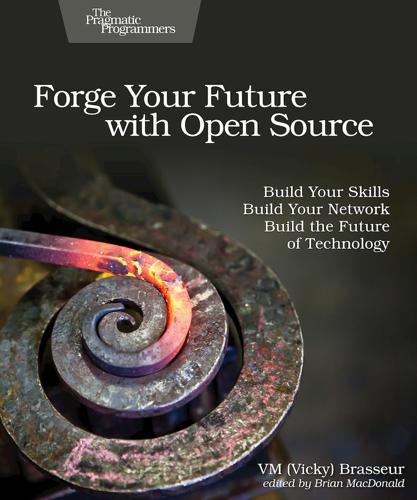
Forge Your Future with Open Source
by
VM (Vicky) Brasseur
And people form organizations dedicated to cultivating and advancing the free and open source software movements. These organizations exist all over the world, in nearly every region. In the USA, you can support the Free Software Foundation,[6] the Software Freedom Conservancy,[7] the Open Source Initiative,[8] or Software in the Public Interest,[9] among others. In Europe, you have Free Software Foundation Europe,[10] Open Source Projects EU OSP),[11] and Open Forum Europe (OFE). Australasia is supported by Linux Australia,[12] Opensource.asia,[13] and FOSSAsia.[14] Groups like Free and Open Source Software For Africa (FOSSFA)[15] and OpenAfrica[16] support, teach, and spread free and open source technologies across many countries in Africa.
…
The freedom to make improvements to the software and then share the improved version however you wish. Any software that does not guarantee these freedoms to its users cannot be considered “free” because it limits the users’ rights in some way. To help guarantee these rights and freedoms, RMS, the GNU Project, and the newly formed Free Software Foundation (FSF)[28] created software licenses that leverage the pre-existing concepts of copyright. The FSF copyleft licenses (a play on the word copyright) provide more than just the permission to use software released under them; they ensure that software can never violate the Four Freedoms. While many people believe that the Four Freedoms are Stallman’s greatest invention, in fact his most far-reaching and brilliant contribution to software is the recognition that copyright can be used in this way, and that careful copyright licensing can enforce software freedom.
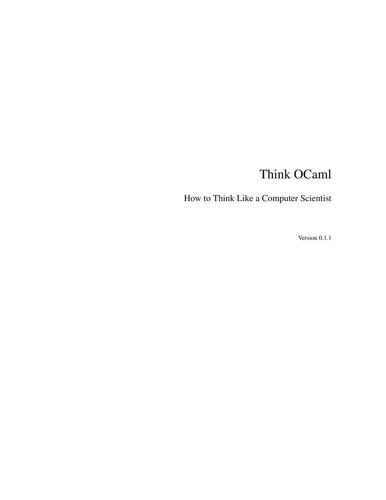
Think OCaml
by
Nicholas Monje, Allen Downey
Green Tea Press 9 Washburn Ave Needham MA 02492 Permission is granted to copy, distribute, and/or modify this document under the terms of the GNU Free Documentation License, Version 1.1 or any later version published by the Free Software Foundation; with no Invariant Sections, no Front-Cover Texts, and with no Back-Cover Texts. The GNU Free Documentation License is available from www.gnu.org or by writing to the Free Software Foundation, Inc., 59 Temple Place, Suite 330, Boston, MA 02111-1307, USA. The original form of this book is LATEX source code. Compiling this LATEX source has the effect of generating a device-independent representation of a textbook, which can be converted to other formats and printed.
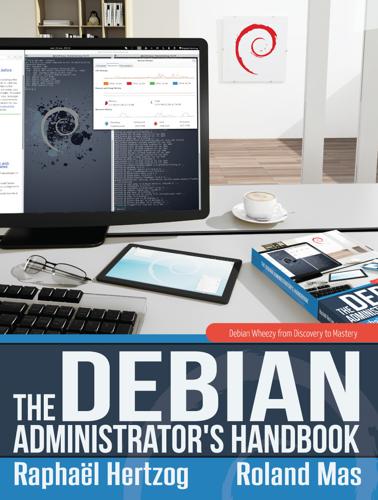
The Debian Administrator's Handbook, Debian Wheezy From Discovery to Mastery
by
Raphaal Hertzog
and
Roland Mas
Published 24 Dec 2013
Creative Commons License Notice: This book is licensed under a Creative Commons Attribution-ShareAlike 3.0 Unported License. → http://creativecommons.org/licenses/by-sa/3.0/ GNU General Public License Notice: This book is free documentation: you can redistribute it and/or modify it under the terms of the GNU General Public License as published by the Free Software Foundation, either version 2 of the License, or (at your option) any later version. This book is distributed in the hope that it will be useful, but WITHOUT ANY WARRANTY; without even the implied warranty of MERCHANTABILITY or FITNESS FOR A PARTICULAR PURPOSE. See the GNU General Public License for more details.
…
This double ambition would, in his eyes, only be achieved by opening the Debian development process just like that of Linux and the GNU project. Thus, peer review would continuously improve the product. CULTURE GNU, the project of the FSF The GNU project is a range of free software developed, or sponsored, by the Free Software Foundation (FSF), originated by its iconic leader, Dr. Richard M. Stallman. GNU is a recursive acronym, standing for “GNU is Not Unix”. CULTURE Richard Stallman FSF's founder and author of the GPL license, Richard M. Stallman (often referred to by his initials, RMS) is a charismatic leader of the Free Software movement.
…
After a first, unfruitful attempt in 2004, the complete removal of the non-free section should not return to the agenda for several years, especially since it contains many useful documents that were moved simply because they did not meet the new requirements for the main section. This is especially the case for certain software documentation files issued by the GNU project (in particular, Emacs and Make). The continued existence of the non-free section is a source of occasional friction with the Free Software Foundation, and is the main reason it refuses to officially recommend Debian as an operating system. 1.2.2. The Debian Free Software Guidelines This reference document defines which software is “free enough” to be included in Debian. If a program's license is in accordance with these principles, it can be included in the main section; on the contrary, and provided that free distribution is permitted, it may be found in the non-free section.
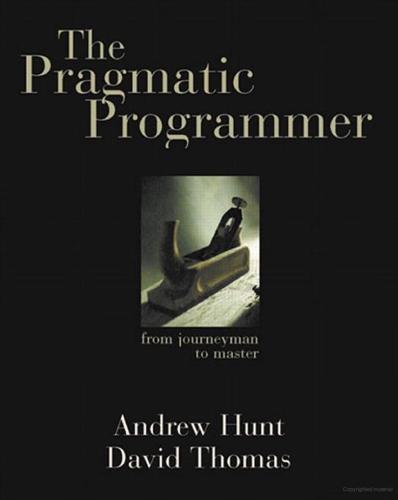
The Pragmatic Programmer
by
Andrew Hunt
and
Dave Thomas
Published 19 Oct 1999
[URL 55] The GNU Image Manipulation Program ⇒ www.gimp.org Gimp is a freely distributed program used for image creation, composition, and retouching. [URL 56] The Demeter Project ⇒ www.ccs.neu.edu/research/demeter Research focused on making software easier to maintain and evolve using Adaptive Programming. Miscellaneous [URL 57] The GNU Project ⇒ www.gnu.org Free Software Foundation, Boston, MA The Free Software Foundation is a tax-exempt charity that raises funds for the GNU project. The GNU project's goal is to produce a complete, free, Unix-like system. Many of the tools they've developed along the way have become industry standards. [URL 58] Web Server Information ⇒ www.netcraft.com/survey/servers.html Links to the home pages of over 50 different web servers.
…
Dobbs Journal, 263 DRY principle, 27, 29, 42 see also Duplication Duck, rubber, see Rubber duck Dumpty, Humpty, xxii, 165 Duplication, 26 code generators avoid, 28 and code reviews, 33 design errors, 30 documentation and code, 29 DRY principle, 27, 29 interdeveloper, 32 in languages, 29 multiple representations, 28 teams, 226 under time pressure, 32 types of, 27 Dynamic configuration, 144 Dynamic data structure, 135 Dynamics of Software Development, 264 E E-mail, 22 address for feedback, xxiii Editor, 82 auto-indenting, 85 cursor movement, 84 features, 83 generating code, 103 how many to learn, 82 template, 84 types of, 266 Windows notepad, 84 Effective C++, 265 Eiffel, 109, 114, 267 EJB, see Enterprise Java Beans elvis editor, 267 Emacs editor, 84, 266 Viper vi emulator, 267 Embedded mini-language, 62, 145 Embellishment, 11 Encapsulation, object, 127, 158 Eno, Brian, 205 Enterprise Java Beans (EJB), 39, 147 Entropy, 4 Error DBC messages, 115 design, 30 domain-specific, 59 early crash, 120 log messages, 196 orthogonality, 41 testing, 240, 247 see also Exception Error handler, 127 Estimating, 64 accuracy, 64 algorithms, 177, 178 iterative, 69 models, 66 problem domain, 66 project schedules, 68 records, 68 testing, 182 Eton College, xxi Event, 157 Event channel, 160 Example code add logging, 40 airline reservations, 164, 296 assert macro, 122 auto_ptr example, 134 bad resource balancing, 129, 130 downloading, xxiii exception error handling, 125 good resource balancing, 131 JavaDoc example, 250 method chaining, 139 normalized class, 31 open password file, 126 open user file, 127 resources and exceptions, 132, 133 side effect, 124 spaghetti error handling, 125 square root, 190 string parsing with StringTokenizer, 156 string parsing with strtok, 155 unnormalized class, 30 Example code by name AOP, 40 Misc.java, 156 assert, 122 bad_balance.c, 129, 130 balance.cc, 134 balance.c, 131–133 class Line, 30, 31 exception, 125 findPeak, 250 interface Flight, 164, 296 misc.c, 155 openpasswd.java, 126 openuserfile.java, 127 plotDate, 139 side_effect, 124 spaghetti, 125 sqrt, 190 Exception, 121 effects of, 127 and error handlers, 127 missing files, 126 resource balancing, 132 when to use, 125 Excuses, 3 Executable document, 251 expect, 269 Expert, see Guru Expiring asset, 12 eXtensible Style Language (XSL), 253 Extinction, 148 eXtreme Programming, 238n, 258, 272 F Feature creep, 10 Feedback, e-mail address, xxiii File exception, 126 header, 29 implementation, 29 log, 196 makefile, 232 source, 103 Final build, 234 Fish, dangers of, 34 Flexibility, 46 Formal methods, 220, 221 Four Posts Puzzle, 213 Fowler, Martin, xxiii, 186, 273 Free Software Foundation, see GNU Project Frog, boiled, see Boiled frog Function accessor, 31 Law of Demeter for ~s, 140 similar, 41 G Gamma, Erich, 194 Garbage collection, 134 Gardening metaphor, 184 Gehrke, Peter, xxiv Glass, Robert, 221, 236 Global variables, 40, 130, 154 Glossary, project, 210 GNU Project, 274 C/C++ compiler, 267 General Public License (GPL), 80 GNU Image Manipulation Program (GIMP), 274 SmallEiffel, 267 “Good-enough software”, see Software, quality Gordian knot, 212 Goto, 127 GUI system vs. command shell, 78 interface, 78 testing, 244 Guru, 17, 198 H Hash, secure, 74 Header file, 29 “Heisenbug”, 124, 289 Helicopter, 34n Hopper, Grace, 8n, 90 “Hot-key” sequence, 196 HTTP Web server, 196 Human factors, 241 Humpty Dumpty, xxii, 165 Hungarian notation, 249 Hungry consumer model, 153 Hypertext document, 210 I iContract, 110, 114, 268 IDE, see Integrated Development Environment IEEE Computer Society, 262 IEEE Computer, 262 IEEE Software, 263 Imperative language, 60 Implementation accidents, 173 coding, 173 specifications, 219 Imposed duplication, 28 Inadvertent duplication, 30 Indentation, automatic, 85 Independence, see Orthogonality Infrastructure, 37 Inheritance, 111 assertions, 113 fan-in/fan-out, 242 Inner tennis, 215 Inspection, code, see Code reviews Insure++, 136 Integrated circuit, 189n Integrated Development Environment (IDE), 72, 232 Integration platform, 50 Integration testing, 239 Interface blackboard system, 168 C/Object Pascal, 101 concurrency, 155 error handler, 128 GUI, 78 prototyping, 55 user, 203 Invariant, 110, 113, 155 loop, 116 semantic, 116, 135 ISO9660 format, 233n Iterative development, 69 J Jacobson, Ivar, 204 Jargon, xxii, 210 Jargon file, 273 Java, 46, 267 code generation, 232 DBC, 114 Enterprise Java Beans, 39, 147 error messages, 115 exceptions, 121 iContract, 110, 114, 268 javaCC, 59, 269 JavaDoc, 248, 251 JavaSpaces, 166, 273 JUnit, 195 multithreaded programming, 154 property access, 100 property files, 145 resource balancing, 134 RMI, 128 string parser, 156 tree view, 161 unit tests, 193 and Windows shells, 81 JavaDoc, see Java K K Desktop Environment, 273 Kaizen, xxi, 14 see also Knowledge portfolio Kernighan, Brian, 99 Keybinding, 82 Kirk, James T., 26 Knowledge producers and consumers, 166 Knowledge portfolio, 12 building, 13 critical thinking, 16 learning and reading, 14 researching, 15 Knuth, Donald, 183, 248 Korn, David, 81 Kramer, Reto, xxiv Kruchten, Phillipe, 227n L Lakos, John, xxiv, 9, 142, 265 Lame excuses, 3 Language, programming conversions, 103, 105 DBC, 114 domain, 57 duplication in, 29 learning, 14 prototypes, 55 scripting, 55, 145 specification, 58, 62 text manipulation, 99 see also Mini-language Large-Scale C++ Software Design, 142, 265 LATEX system, 103 Law of Demeter, 140 Lawns, care of, xxi Layered design, 37 Layered system, see Modular system “lazy” code, 111 Lex and Yacc, 59 Librarian, see Project librarian Library code, 39 Linda model, 167 Linear algorithms, 177 Linux, 15, 254, 265 Liskov Substitution Principle, 111 Listening, 21 Literate programming, 248 Logging, 39, 196 see also Tracing Lookup table, 104 Loop nested, 180 simple, 180 Loop invariant, 116 M Macro, 78, 86 assertions, 122 documentation, 252 error handling, 121 Maintenance, 26 imperative languages, 61 Makefile, 232 recursive, 233 Managing expectations, 256 Mark-up language, 254 Martin, Robert C., 273 McCabe Cyclomatic Complexity Metric, 242 Member variables, see Accessor functions Memory allocation, 135 Metadata, 144, 203 business logic, 146 configuration, 147 controlling transactions, 39 decoupled code, 145 and formal methods, 221 in plain text, 74 Metric, 242 Meyer, Bertrand, 31n, 109, 184, 264 Meyer, Scott, 265 Microsoft Visual C++, 198 Microsoft Windows, 46 Mini-language, 59 data language, 60 embedded, 62 imperative, 60 parsing, 62 stand-alone, 62 Mixing board, 205 MKS Source Integrity, 271 Model, 160 calculations, 67 components and parameters, 66 and estimating, 66 executable documents, 251 view, 162 Model-view-controller (MVC), 38, 160 Modular system, 37 coding, 138 prototyping, 55 resource allocation, 135 reversibility, 45 testing, 41, 190, 244 More Effective C++, 265 Mozilla, 273 Multithreaded programming, 154 MVC, see Model-view-controller The Mythical Man Month, 264 N Name, variable, 249 Nana, 114, 268 Nest allocations, 131 Nested loop, 180 Netscape, 145, 273 Newsgroup, 15, 17, 33 Nonorthogonal system, 34 Normalize, 30 Novobilski, Andrew J., 189n O() notation, 178, 181 Object coupling, 140n destruction, 133, 134 persistence, 39 publish/subscribe protocol, 158 singleton, 41 valid/invalid state, 154 viewer, 163 Object Management Group (OMG), 270 Object Pascal, 29 C interface, 101 Object-Oriented Programming, 189n Object-Oriented Software Construction, 264 Obsolescence, 74 OLTP, see On-Line Transaction Processing system OMG, see Object Management Group On-Line Transaction Processing system (OLTP), 152 Options, providing, 3 Ordering, see Workflow Orthogonality, 34 coding, 34, 36, 40 design, 37 documentation, 42 DRY principle, 42 nonorthogonal system, 34 productivity, 35 project teams, 36, 227 testing, 41 toolkits & libraries, 39 see also Modular system Over embellishment, 11 P Pain management, 185 paint() method, 173 Painting, 11 Papua New Guinea, 16 Parallel programming, 150 Parrots, killer, see Branding Parsing, 59 code generators, 105 log messages, 196 mini-language, 62 strings, 155 Partitioning, 168 Pascal, 29 Passive code generator, 103 Performance testing, 241 Perl, 55, 62, 99 C/Object Pascal interface, 101 database schema generation, 100 home page, 267 Java property access, 100 power tools, 270 test data generation, 100 testing, 197 and typesetting, 100 Unix utilities in, 81 web documentation, 101 Perl Journal, 263 Persistence, 39, 45 Petzold, Charles, 265 Pike, Rob, 99 Pilot landing, handling, etc., 217 who ate fish, 34 Plain text, 73 vs. binary format, 73 drawbacks, 74 executable documents, 251 leverage, 75 obsolescence, 74 and easier testing, 76 Unix, 76 Polymorphism, 111 Post-it note, 53, 55 Powerbuilder, 55 The Practice of Programming, 99 Pragmatic programmer characteristics, xviii e-mail address, xxiii Web site, xxiii Pre- and postcondition, 110, 113, 114 Predicate logic, 110 Preprocessor, 114 Presentation, 20 Problem domain, 58, 66 metadata, 146 Problem solving, 213 checklist for, 214 Productivity, 10, 35 Programming by coincidence, 173 Programming staff expense of, 237 Programming Windows, 265 Project glossary, 210 “heads”, 228 saboteur, 244 schedules, 68 see also Automation; Team, project Project librarian, 33, 226 Prototyping, 53, 216 architecture, 55 disposable code, 56 kinds of, 54 and programming languages, 55 and tracer code, 51 using, 54 Publish/subscribe protocol, 158 Pugh, Greg, 95n Purify, 136 PVCS Configuration Management, 271 Python, 55, 99, 267 Q Quality control, 9 requirements, 11 teams, 225 Quarry worker’s creed, xx Quicksort algorithm, 180 R Rational Unified Process, 227n Raymond, Eric S., 273 RCS, see Revision Control System Real-world data, 243 Refactoring, 5, 185 automatic, 187 and design, 186 testing, 187 time constraints, 185 Refactoring browser, 187, 268 Refinement, excessive, 11 Regression, 76, 197, 232, 242 Relationship has-a, 304 kind-of, 111, 304 Releases, and SCCS, 87 Remote Method Invocation (RMI), 128 exception handling, 39 Remote procedure call (RPC), 29, 39 Repository, 87 Requirement, 11, 202 business problem, 203 changing, 26 creep, 209 DBC, 110 distribution, 211 documenting, 204 in domain language, 58 expressing as invariant, 116 formal methods, 220 glossary, 210 over specifying, 208 and policy, 203 usability testing, 241 user interface, 203 Researching, 15 Resource balancing, 129 C++ exceptions, 132 checking, 135 coupled code, 130 dynamic data structures, 135 encapsulation in class, 132 Java, 134 nest allocations, 131 Response set, 141, 242 Responsibility, 2, 250, 258 Reuse, 33, 36 Reversibility, 44 flexible architecture, 46 Revision Control System (RCS), 250, 271 Risk management, 13 orthogonality, 36 RMI, see Remote Method Invocation Rock-n-roll, 47 RPC, see Remote procedure call Rubber ducking, 3, 95 Rules engine, 169 S Saboteur, 244 Samba, 272 Sample programs, see Example code Sather, 114, 268 SCCS, see Source code control system Schedule, project, 68 Schrödinger, Erwin (and his cat), 47 Scope, requirement, 209 Screen scraping, 61 Scripting language, 55, 145 Secure hash, 74 sed, 99 Sedgewick, Robert, 183 Self-contained components, see Orthogonality; Cohesion Semantic invariant, 116, 135 sendmail program, 60 Sequence diagram, 158 Server code, 196 Services, design using, 154 Shell, command, 77 vs.

Free culture: how big media uses technology and the law to lock down culture and control creativity
by
Lawrence Lessig
Published 15 Nov 2004
The law is changing; that change is altering the way our culture gets made; that change should worry you—whether or not you care about the Internet, and whether you're on Safire's left or on his right. The inspiration for the title and for much of the argument of this book comes from the work of Richard Stallman and the Free Software Foundation. Indeed, as I reread Stallman's own work, especially the essays in Free Software, Free Society, I realize that all of the theoretical insights I develop here are insights Stallman described decades ago. One could thus well argue that this work is "merely" derivative. I accept that criticism, if indeed it is a criticism.
…
Their brief made the argument that became the core claim in the Supreme Court: If Congress can extend the term of existing copyrights, there is no limit to Congress's power to set terms. That strong conservative argument persuaded a strong conservative judge, Judge Sentelle. In the Supreme Court, the briefs on our side were about as diverse as it gets. They included an extraordinary historical brief by the Free Software Foundation (home of the GNU project that made GNU/ Linux possible). They included a powerful brief about the costs of uncertainty by Intel. There were two law professors' briefs, one by copyright scholars and one by First Amendment scholars. There was an exhaustive and uncontroverted brief by the world's experts in the history of the Progress Clause.
…
Therefore, in 1984, Stallman began a project to build a free operating system, so that at least a strain of free software would survive. That was the birth of the GNU project, into which Linus Torvalds's "Linux" kernel was added to produce the GNU/Linux operating system. Stallman's technique was to use copyright law to build a world of software that must be kept free. Software licensed under the Free Software Foundation's GPL cannot be modified and distributed unless the source code for that software is made available as well. Thus, anyone building upon GPL'd software would have to make their buildings free as well. This would assure, Stallman believed, that an ecology of code would develop that remained free for others to build upon.
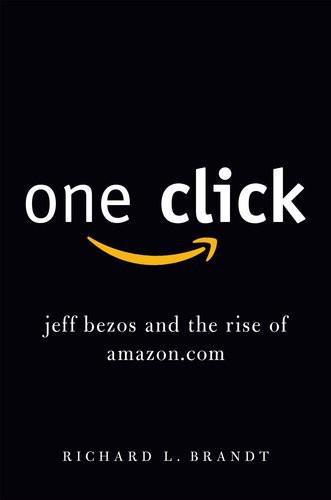
One Click: Jeff Bezos and the Rise of Amazon.com
by
Richard L. Brandt
Published 27 Oct 2011
Barnes & Noble fired back with its own press release, insisting that the suit was a “desperate attempt to retaliate for our growing market share” in online bookselling. It didn’t specify exactly how fast that share of market was growing. (By 2010, Barnes & Noble was suffering, while Amazon.com is as strong as ever.) In response to Amazon.com’s lawsuit against Barnes & Noble, the Free Software Foundation, an advocacy group that promotes open-source software and is staunchly against software patents, called for a boycott against Amazon.com. That didn’t work either. In December 1999, a district court in Washington State upheld Amazon’s patent, issuing a preliminary injunction preventing Barnes & Noble from using Express Lane.
…
See Internet companies DREAM Institute Drugstore.com DVDs, Amazon sale of Dynabook Early adopters E-bay, versus Amazon Auctions E-books agency model and Amazon. see Kindle devices, competitive early readers free future view for Google market, growth of pricing of Edison, Thomas E Ink Corporation Elastic Compute Cloud (EC2) Electronics Ellison, Larry Employees Bezos interaction with compensation and cult of Amazon expansion (1998) firing (2000) hiring practices individualistic “Just Do It” award two-pizza teams Wal-Mart executives, hiring of work environment Endurance (Lansing) E-Niche Equinet Erwise Everybook Express Lane Farsight Financial status cost-cutting decline (2000) first investors growth versus profits strategy investment advisors IPO, Amazon leverage, Bezos approach to losses and debt (1999) pro forma net profit (2002) raising capital, problems of recovery of Amazon revenues in 2010, share price, growth rate stock downgraded valuations of Amazon, initial Web site building, profitability of Fitel, Bezos at Food and grocery items Fortune Frederick, Robert Free Software Foundation Frisbee Frox, Inc. Galli, Joseph Gates, Bill Gear.com General Atlantic Germany, Bertelsmann offer Gifts Conversion Rules Wizard returned, cost of Gise, Lawrence Preston (grandfather) Goddard Goddard, Robert Hutchings Gold Box Google digitized books e-books graphics, minimizing News, linking to source privacy issue and simplicity Graphics, and site speed Hall, Colonel Robert Hanauer, Nicholas J.
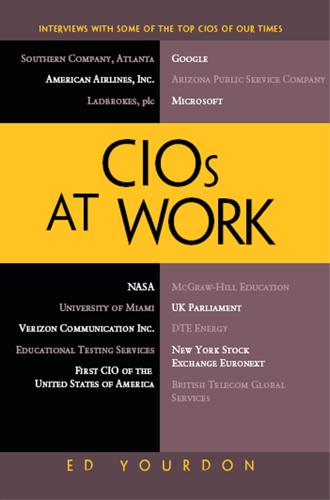
CIOs at Work
by
Ed Yourdon
Published 19 Jul 2011
And as a result now people talk about open-source hardware as well, but this notion that people should be able—if you believe what Levy has in the book, it came out of this belief that computers should be open, that anyone should be able to use them and experiment with them and learn to program. It strikes me as we’re all kind of lucky. Everyone in the industry or affected by the industry is lucky that that ethos took hold there and installed the ability to create the Free Software Foundation. I think you can connect the dots there to open-source software, free software. The Free Software Foundation, open-source software, Linux, a whole bunch of things came from this interesting and unique place and time. Like I said, we’re lucky. If things had been a little different, we might not have had that. Some of that is open funding, Cold War–driven open funding, large, large checks being paid to research universities to support computing, giving great access to people.
…
Index A AdKnow ledge, Inc., 87 Agile development methodology, 62 Amazon, 314, 319 America COMPETES Act, 304 American Airlines, 47, 72 American Defense Department, 84 American Marketing Society, 113 American Production Inventory Control Society, 211 Ames, 320 AMR Corp, 47 Android, 43 Annapolis, 340 Apple, 97, 101, 217, 242, 295 Computer, 35 Genius Bar, 8 Archipelago Holdings Inc., 87 Arizona Public Service (APS) Company, 66, 211, 223 Arizona State University, 227 ARPANET, 19, 117, 135 Art of Computer Programming, 2 Atlanta-based Southern Company, 191 AT&T, 191, 249 B Ballmer, Steve, 39 Bank of Boston, 47 Baylor-Grapevine Board of Trustees, 47 Bedrock foundation, 249 Bell Atlantic Mobile, 231 Bell Labs, 2, 249 BlackBerry, 60, 96, 116, 121, 171, 184, 246, 261, 296, 317 Blalock, Becky, 182, 191, 215 adaptability, 192 Air Force brat, 191, 192 Atlanta-based Southern Company, 191 banking industry, 203 Boucher, Marie, 196 brainstorm, 202 24/7 business, 199 business intelligence, 204 cloud computing, 205 cognitive surplus, 206 cognitive time, 206 Coker, Dave, 196 communication and education, 200 Community and Economic Development, 194 consumer market, 202 cybersecurity, 207, 209 data analytics, 204, 205 disaster recovery, 209 distributed generation, 204 distribution organization, 201 Egypt revolution, 198 farming technology, 206 finance backgrounds/marketing, 200, 209 Franklin, Alan, 193 Georgia Power, 191 Georgia Power Management Council, 193 global society, 206 Google, 198 incredible technology, 195 Industrial Age, 206 Information Age, 206 InformationWeek's, 196 infrastructure, 202 intellectual property, 196 intelligence and redundancy, 207 Internet, 198, 206 leapfrog innovations, 205 mainframe system, 207 marketing and customer service, 193, 200 MBA, finance, 192 microfiche, 207 microwave tower, 207 mobile devices, 203 mobility and business analytics, 205 Moore's Law, 205 new generation digital natives, 197 flexible and adaptable, 199 innovation and creativity, 199 superficial fashion, 198 Olympic sponsor, 193 out pushing technology, 202 reinforcement, 201 sense of integrity, 200 Southern Company, 194, 198, 201, 207 teamwork survey, 201 technology lab, 202 undergraduate degree, marketing, 192 virtualization, 205 VRU, 203 Ward, Eileen, 196 wire business, 201 world-class customer service, 203 Bohlen, Ken, 211 American Production Inventory Control Society, 211 Apple, 217 APS, 211, 223 ASU, 227 benchmarking company, 216 chief innovation officer, 229 Citrix, 217 cloud computing, 218, 219 cognitive surplus, 220 DECnet, 212 Department of Defense, 222 distributed computing, 217 energy industry, 214 gizmo/whiz-bang show, 216 GoodLink, 217 hard-line manufacturing, 218 home computing, 219 home entertainment, 219 Honeywell, 219 HR generalists, 215 information technology department, 211 Intel machines, 217 John Deere, 213 just say yes program, 223 Lean Six Sigma improvement process, 211 Linux, 220 MBA program, 214 mentors, 213 national alerts, 224 North American universities, 228 paradigm shifts, 218, 220 PDP minicomputers, 212 Peopleware, 226 prefigurative culture, 221 R&D companies, 218 Rhode Island, 226 role models, 213 San Diego Fire Department, 224 security/privacy issues, 217 skip levels, 223 smart home concepts, 219 smartphone, 217 social media, 225 Stead, Jerry, 214 Stevie Award, 211 Storefront engineering, 212 traditional management, 219, 226 Twitter, 224 vocabulary, 221 Waterloo operations, 213 Web 2.0 companies, 227 Web infrastructure, 215 wikipedia, 220 Y2K, 222 Botnets, 23 Brian's and Rob Pike's, 2 Bristol-Myers Squibb, 33 Broadband networks, 241 Brown, 227 Bryant, 227 BT Global Services, 253 BT Innovate & Design (BTI&D), 253 Bumblebee tuna, 130 C Career writing technology, 67 CASE tools, 232 Cash, Jim, 50 Christensen, Clyde, 212 Chrome, 14, 18 Chrysler Corporation, 175 Citibank, 337 Citicorp, 313 Citrix, 217 Client-server-type applications, 59 Cloud computing, 218, 219, 239, 240, 261, 262, 310, 311, 313 Cloud technology, 62 CNN, 54 COBOL, 250 Cognitive surplus, 20, 79, 206, 291 College of Engineering, University of Miami, 113 Columbia University, 1 Community and Economic Development, 194 Computer Sciences Corporation, 35 Computerworld magazine, 196 Consumer-oriented technology, 22 Content management system, 133 Corporate information management (CIM) program, 309 Corporate Management Information Systems, 87 Corvus disk drive, 36 Customer Advisory Boards of Oracle, 191 Customer-relationship management (CRM), 56 Cutter Business Technology Council, 173 D Dallas Children's Medical Center Development Board, 48 DARPA, 19 DDoS attacks and security, 81 DECnet, 212 Dell Platinum Council, 113 DeMarco, Tom, 16, 226 Department of Defense, 222, 329, 332 Detroit Energy, 252 Digital books, 30 Digital Equipment, 48 Distributed computing, 217 Dodge, 189 Dogfooding, 11, 37, 38, 236 DTE Energy, 173 DuPont Dow Elastomers, 151 E Educational Testing Service (ETS), 151 E-government, 282, 285 Electrical distribution grid, 182 Elementary and Secondary Education Strategic Business Unit, 151 Elements of Programming Style, 2 Ellyn, Lynne, 173 advanced technology software planning, 175 Amazon, 184 artificial intelligence group, 175 Association for Women in Computing, 173 benchmark, 180, 181 BlackBerries, 184 Burns, Ursula, 175 Chrysler, 176 Cisco, 186 cloud computing, 183, 184 component-based architecture, 186 corporate communications customer service, 185 Crain's Detroit Business, 173 cyber security threats, 177 degree of competence, 187 diversity and sophistication, 182 DTE Energy, 173 energy trading, 176 engineering and science programs, 188 enterprise business systems policy, 186 executive MBA program, 176 Facebook, 185 fresh-out-of-the-university, 187 General Electric, 174 Google, 184 Grace Hopper, 174 grid re-automation, 182 Henry Ford Hospital, 174 internal social media, 185 International Coaching Federation, 178 iPads, 184 IP electrical grids, 182 iPod applications, 182 IT budgets, 186 IT responsibilities, 176 Java, 186 level of sophistication, 179 lobbying efforts, 181 medical computing, 175 Miller, Joan, 174 Mulcahey, Anne, 175 Netscape, 175 neuroscience leadership, 189 object-oriented programming, 186 Oracle, 186 peer-level people, 179 people system, 177 policies and strategies, 180 Radio Shack, 180 remote access capacity, 189 security tool and patch, 183 sense of community, 180 Shipley, Jim, 174 smart grid, 177, 182 smart meters, 182 smart phone applications, 183 swarming, 179 technical competence, 178, 179 Thomas, Marlo, 174 Twitter, 185 UNITE, 181 vendor community, 186 virtualization, 183, 184 Xerox, 175 E-mail, 9 Employee-relationship management (ERM), 56 Encyclopedia, 115 Encyclopedia Britannica, 292 ERP, 123 F Facebook, 244 Ellyn, Lynne, 185 Sridhara, Mittu, 73, 84 Temares, Lewis, 116, 121, 131 Wakeman, Dan, 169 Federal information technology investments, 299 Flex, 236 Ford, 102 Ford, Monte, 47 agile computing, 59 agile development, 62, 66 airplanes, 51 American Airlines, 47 Arizona Public Services, 66 Bank of Boston, 47 Baylor-Grapevine Board of Trustees, 47 BlackBerry, 60 board of Chubb, 51 board of Tandy, 51 business organizations, 63 business school, dean, 50 career writing technology, 67 client-server-type applications, 59 cloud technology, 62 CNN, 54 common-sense functionality, 49 consumer-based technology, 60 CRM, 56 Dallas Children's Medical Center Development Board, 48 Digital Equipment, 48 ERM, 56 financial expert, 69 frequent-flier program, 57 frontal lobotomy, 57 Harvard Business Review, 50 HR policies, 65 IBM, 48 information technology, 47, 52 Internet, 54 Internet-based protocol, 59 iPhone, 52 IT stuff, 58 Knight Ridder, 51 legacy apps, 59 mainframe-like applications, 59 management training program, 64 marketing and technical jobs, 48 Maynard, Massachusetts mill, 48 MBA program, 50 mentors, 49 Microsoft, 50 mobile computing, 62 New York Times, 53 operations center, 54 PDP-5, 49 PDP-6, 49 Radio Shack, 51 revenue management, 57 role models, 49 security paradigms, 62 self-service machine, 57 Silicon Valley companies, 68 smartphones, 54 social networking, 51, 53, 56, 58 stateful applications, 59 techie department, 48 The Associates First Capital Corporation, 47 transmission and distribution companies, 47 wireless network, 59 YouTube, 65 Fort Worth, 226 Free software foundation, 19 Fried, Benjamin, 1, 241 agile development, 25 agile methodologies, 26 Apple Genius Bar, 8 ARPANET, 19 Art of Computer Programming, 2 Bell Labs, 2 books and records, accuracy, 25 botnets, 23 Brian's and Rob Pike's, 2 cash-like principles, 29 CFO, 4 check writers, 18 chrome, 14, 18 classic computer science text, 1 cognitive surplus, 20 Columbia University, 1 compensation management, 7 competitive advantage, 9, 18 computer science degree, 1 computer scientists, 6 consumer-driven computing, 12 consumer-driven software-as-a-service offerings, 12 consumer-driven technology, 12 consumer-oriented technology, 14, 22 corporate leadership, 25 cost centers, 4 DARPA, 19 decision makers, 17 decision making, 13 360-degree performance management, 7 detroit energy, 30 digital books, 30 document workbench, 2 dogfooding, 11 e-books, 29 Elements of Programming Style, 2 e-mail, 9 end-user support, 7 engineering executive group, 4 European vendors, 6 file servers and print servers, 17 Folger Library editions, 30 free software foundation, 19 German company, 13 German engineering, 13 Gmail, 15 Godot, 26 Google, 1 books, 29 products, 5, 10 software engineers, 6 hiring managers, 6 HR processes and technologies, 6 IBM model, 13 instant messaging, 9 Internet age, 6 interviewers, training, 6 iPad, 29 iPhone, 29 IPO, 3 IT, engineering and computer science parts, 4 Knuth's books, 2 Linux machine, 8 Linux software, 19 machine running Windows, 8 Macintosh, 8 Mac OS, 9 macro factors, 11 Managing Director, 1 mentors, 1 microcomputers, 18 Microsoft, 5 Minds for Sale, 20 Morgan Stanley, 1–3, 5, 16 nonacademic UNIX license, 2 nontechnical skills, 5 oil exploration office, 17 open-source phone operating system, 20 outlook, 15 PARC, 19 performance review cycles, 7 personal computer equipment, 15 post-Sarbanes-Oxley world, 25 project manager, 13 quants, 24 rapid-release cycle, 26 R&D cycle, 24 regression testing, 27 role models, 1 shrink-wrapped software, 14 signature-based anti-virus, 22 smartphone, 20, 27 social contract, 8 society trails technology, 21 software engineering tool, 13 software installation, 14 supply chain and inventory and asset management, 10 SVP, 4 telephony, 17 ten things, 13 TMRC, 19 TROFF, 2 typesetter workbench, 2 UI designer, 14 university computing center, 28 videoconferencing, 12 Visicalc, 24 Wall Street, 23 Walmart, 6 waterfall approach, 25 XYZ widget company, 5 YouTube video, 20 G Gates, Bill, 39, 50 General Electric, 134 General Foods, 309, 326–328 General Motors, 33, 321, 329, 332 George Mason School of Information Technology, 309 Georgia Power Company, 191–193, 196 Georgia Power Management Council, 193 German company, 13 German engineering, 13 German manufacturing company, 232 Gizmo/whiz-bang show, 216 Gmail, 15 GoodLink, 217 Google, 1, 84, 85, 117, 217, 219, 220, 222, 235, 241, 263, 302, 319 apps, 314 books, 29 commercial products, 10 model, 293 Government Accountability Office (GAO), 305 4G program, 250 4G smartphone, 235 GTE, 231 Gupta, Ashish aspiration, organization, 256 bandwidth and network infrastructure, 267 BlackBerry, 261 business and customer outcomes, 274 capital investment forums, 269 career progression, 255 cloud-based shared infrastructure model, 263 cloud computing, 261, 262 collaboration, 272 communications infrastructure, 258 compute-utility-based model, 262 control and integrity, 268 core competency, 255 core network infrastructure, 267 core strengths, 256 cost per unit of bandwidth, 267 customer demands, 268 data protection, 261, 262 decision-making bodies, 269 demographics, 272, 273 device convergence, 263 dogfooding, 259 employee flexibility, 260, 264 engagement and governance, 269 enterprise market segment, 261 equipment management, 260 executive MBA, 256 fourth-generation LTE networks, 267 functional service departments, 270 Global Services, distributed organization, 257 Google, 263, 275 Google Apps, 266 handheld devices, 265 hastily formed networks, 258 IMF, 266 innovation and application development, 265 iPad, 257, 260, 261, 266,267 iPhone, 266 Japan, 257, 258 London Business School, 253 management functions, 257 management sales functions, 257 market segments, 259 MBA, General Management, 253 measurements, 271 messaging with voice capability, 264 mini-microcomputer model, 261 mobile communications network, 258 mobile-enabling voice, 259 mobile phone network, 260 mobile traffic explosion, 265 network infrastructures, 265 network IT services, 254 network quality, 257 new generation digital natives, 271 disadvantages, 273 Google, 273 opportunities, 273 Olympics, 263 opportunities, 275 organizational construct, 272 outsourced network IT services, 259 outsourcing, 271 per-use-based model, 262 portfolio and business alignment, 274 Portfolio & Service Design (P&SD), 253 primary marketing thrust, 264 product development thrust, 264 product management team, 259 project and program management, 255 resource balance, 270 scalability, 262 security, 262 Selley, Clive, 254, 255 service delivery organization, 254 single-device model, 264 smart devices, 267 smart phones, 266 telecommunications capability, 259 upward-based apps, 264 virtualization, 261 voice-over-IP connections, 258 Windows platform, 261 Gurnani, Roger, 231 accounting/finance department, 233 analog cellular networks, 250 AT&T, 249 bedrock foundation, 249 Bell Atlantic Mobile, 231 Bell Labs, 249 blogs, 244 broadband networks, 241 business benefits, 237 business device, 240 business executives, 238 business leaders, 248, 249 business relationship management, 248 buzzword, 239 CASE tools, 232 cloud computing, 239, 240 COBOL, 250 consumer and business products, 231 consumer electronics devices, 241 consumer telecom business, 233 customer-engagement channel, 244 customer forums, 244 customer support operations, 251 customer-touching channels, 236 degree of control, 246 distribution channel, 250 dogfooding, 236 ecosystem, 243, 249 enterprise business, 233 ERP systems, 236 face-to-face communications, 244 FiOS product, 235 flex, 236 "follow the sun" model, 239 German manufacturing company, 232 4G program, 250 4G smartphone, 235 hardware/software vendors, 247 information assets, 245 information technology strategy, 231 intellectual property rights, 244 Internet, 235, 239 iPhone, 243 Ivan, 232 Lowell, 232 LTE technology-based smartphone, 235 marketing, 251 MIT, 246 mobile technology, 234 Moore's law, 242 MP3 file, 235 network-based services, 240 Nynex Mobile, 233 P&L responsibility, 251 PDA, 238 personal computing, 235 product development, 234, 251 role models, 232 sales channels, 251 smartphones, 238 state-level regulatory issues, 251 state-of-the-art networks, 243 telecom career, 232 telephone company, Phoenix, 234 Verizon Communication, 231, 232 virtual corporations, 241 Web 2.0, 244 Williams Companies, 232, 233 WillTell, 233 wireless business, 233 H Hackers, 19 Harmon, Jay, 213 Harvard Business Review, 50 Harvard Business School, 331 Heller, Martha, 171 Henry Ford Hospital, 174 Hewlett-Packard piece, 129 Home computing, 219 Honda, 102 Honeywell, 219 Houghton Mifflin, 134, 136 I IBM, 48, 250 manpower, 311 model, 13 Indian IT outsourcing company, 255 Information technology, 52 Intel machines, 217 International Coaching Federation, 178 Internet, 9, 44, 54, 117, 235, 239, 316, 322 Internet-based protocol, 59 Interoperability, 341 iPads, 2, 94, 97, 184, 257, 260, 264, 267, 288, 289, 295, 296 IP electrical grids, 182 iPhones, 43, 52, 96, 101, 170, 181, 260, 264,296 iPod, 101 IT lifecycle management process, 37 Ivan, 232 J John Deere, 213 K Kansas, 226 Kernigan, Brian, 2 Knight Ridder, 51 Knuth, Donald, 2, 29 Kraft Foods Inc, 309 Krist, Nicholas, 28 Kundra, Vivek Clever Commute, 305 cognitive surplus, 303 command and control systems, 301 consumerization, 302 consumption-based model, 300 cyber-warfare, 301 Darwinian pressure, 302 desktop core configuration, 306 digital-borne content, 301 digital oil, 300, 307 digital public square, 304 enterprise software, 303 entrepreneurial startup model, 306 frugal engineering, 306 Google, 302 government business, 302 innovator's dilemma, 307 iPad, 302 IT dashboard, 302 leapfrog technology, 306 massive consumerization, 301 megatrends, 301 parameter security, 302 Patent Office, 305 pharmaceutical industry, 304 phishing attacks, 301 policy and strategic planning, 299 security and privacy, 301 server utilization, 300 social media and technology, 300, 306 storage utilization, 300 Trademark Office, 305 Wikipedia, 303 L LAN, 259 Lean Six Sigma improvement process, 211 Levy, Steven (Hackers), 19 Linux, 220 machine, 8 open-source software, 19 Lister, Tim, 226 London Business School, 73, 253, 256 Long-term evolution (LTE), 235 Lowell, 232 M MacArthur's intelligence officer, 327 Macintosh, 8 Mainframe computers, 118 Mainframe-like applications, 59 Marriott's Great America, 35 McDade, 327 McGraw-Hill Education, 133, 147, 150 Mead, Margaret, 221 Mendel, 311 Microcomputers, 18 Microsoft Corporation, 5, 11, 33, 36, 38, 41, 44, 46, 50, 156, 217, 223, 236, 250, 293 Microsoft Higher Education Advisory Group, 113 Microsoft's operational enterprise risk management, 33 Middlesex University, 189 Miller, Joan Apple products, 295 authority and accuracy, 292 award-winning ICT programs and services, 277 back locked-down information, 289 big-scale text issues, 294 big-time computing, 279 BlackBerry, 296 business management training, 281 business skills, 281 central government, 283 cognitive surplus, 291 community care project, 278 community development programs, 277, 278 computers, constituency office, 294 confidential information, 284 data management, 281 decision making, 286 democratic process, 288 economics degree, 278 e-government, 282, 285 electronic communication, 289 electronic-enabled public voice, 286 electronic information, 288 electronic media, 286 electronic records, 280, 284 electronic services, 294 e-mail, 289, 290, 295 forgiving technology, 296 front-office service, 282, 283 Google, 292 Google's cloud service, 290 Government 2, 287 Health and Social Care, 284 House business, 294 House of Lords, 288 ICT strategy, 289, 290 information management, 278 insurance company, 278 Internet information, 285 iPad, 288, 289, 296 IT data management, 279 management principle, 280 local government, 283 mainframe environment, 289 member-led activity, 287 messages, 289 Microsoft, 293 Microsoft's cloud service, 290 mobile electronic information, 284 mobile technology, 289 national organization, 284 network perimeters, 290 official government information, 285 on-the-job training, 281 organizational planning, 278 Parliamentary ICT, 277 project management, 279 public sector, 282 public transportation, 285 quango-type organizations, 283 representational democracy, 286 security, 290, 291 social care organization, 279 social care services, Essex, 278 social care systems, 284 social networking, 285 sovereignty, 291 sustainability and growth, 293 technical language, 294 technology skills, 281 transactional services, 285 transferability, 291 Web-based services, 285 Wikipedia, 291, 292 X-factor, 286 Minds for Sale, 20 Mitchell & Co, 333 MIT Media Labs, 149 Mobile computing, 62 Mobile technology, 234 Mooney, Mark, 133 artificial intelligence, 134 back-office legacy, 136 balancing standpoint, 145 BBC, 140 Bermuda Triangle, 135 BlackBerry shop, 142 Bureau of National Standards, 136 business model, 140 career spectrum, 144 cloud computing, 148 competitive intelligence and knowledge, 143 Connect, 141 customer-facing and product development, 135 customer-facing product space, 137 customer space and product development, 136 digital products development, 144 digital space and product, 146 educational and reference content, 139 educational products, 141 entrepreneur, 150 General Electric, 134 GradeGuru, 140 handheld devices, 142 hard-core technical standpoint, 146 hardware servers, 142 Houghton Mifflin, 134, 136 HTML, 138 industrial-strength product, 141 intellectual content, 148 Internet, 148 iPad, 138, 139, 142 iPhone, 142, 143 iTunes, 138 Klein, Joel, 147 learning management systems, 137 long-term production system, 141 Marine Corps, 134 McGraw-Hill Education, 133, 147 media development, 144 media space, 138, 142 mobile computing, 139 MOUSE, 150 online technology, 138 open-source capabilities, 142 Oracle quota-management system, 143 people's roles and responsibilities, 137 Phoenix, 149 product development, 149 publishing companies, 142 publishing systems, 137 Reed Elsevier, 133, 136 Salesforce.com, 144, 149 scalability testing, 145 senior business leaders, 146 social network, 148 soft discipline guidelines, 141 solar energy, 149 Strassmann, Paul, 135 technical skill set, 143, 144 testing systems integration, 145 The Shallows, 139 transactional systems, 142 trust and integrity, 145 TTS, QuickPro, and ACL, 144 Vivendi Universal, 134 War and Peace today, 139 Moore's law, 242 Morgan Stanley, 2, 3, 16 N NASA, 309, 333, 334 National Institute of Standards and Technology (NIST), 173 Naval Postgraduate School, 134 Netscape, 175 New Brunswick model, 282 News Corp., 147 New York Stock Exchange (NYSE), 87, 116, 223, 278 New York Times, 53 North American universities, 228 NSA/CIA software, 134 Nynex Mobile, 233 O Oil exploration office, 17 Open-source phone operating system, 20 Outlook, 15 P Pacer Software, 135 Paradigm shifts, 218, 220 Parks and Recreation Department, 126 PDP minicomputers, 212 Peopleware, 226 Personal computing, 235 Personal digital assistant (PDA), 238 Petri dish, 44 Phoenix, 211 Plauger, Bill, 2 Q Quants, 24 R Radio Shack, 51 Reed Elsevier, 133, 136 Reed, John, 335 Rubinow, Steve, 87 AdKnowledge, Inc., 87 agile development, 110 Agile Manifesto, 110 Archipelago Holdings Inc., 87 attributes, 108 capital market community, 91 cash/actual trading business, 88 channel marketing departments, 92 cloud computing, 97 CNBC, 89 collaborative technology, 95 collective intelligence, 95 communication skills, 102, 106 conference organizations, 99 consumer marketplace, 94 data center, 90 decision making, 105, 108 economy standpoint, 100 e-mail, 100 Fidelity Investments, 105 financial services, 92 IEEE, 101 innovative impression, 94 Internet, 98 iPad, 97 iPod device, 91 labor laws, 110 listening skills, 106 logical progression, 104 Mac, 96 mainframe, 104 management and leadership, 104, 105 market data system, 89 micro-second response time, 89 mobile applications, 94 multidisciplinary approach, 103 multimedia, 97 multi-national projects, 110 multiprocessing options, 99 network operating system, 103 NYSE Euronext, 87 open outside system, 88 parallel programming models, 99 personal satisfaction, 109 PR function, 106 proclaimed workaholic, 109 real estate business, 88 regulatory and security standpoint, 96 Rolodex, 94 Rubin, Howard, 99 server department, 97 software development, 89 sophisticated technology, 101 technology business, 88 technology integration, 91 trading engines, 90 typewriter ribbon, 94 virtualization, 98 Windows 7, 96 younger generation video games, 93 visual interfaces, 93 Rumsfeld, Donald, 222 S San Diego Fire Department, 224 Santa Clara University, 36 SAS programs, 131 Scott, Tony, 10, 33, 236 Android, 43 Apple Computer, 35 architectural flaw, 44 BASIC and Pascal, 35 Bristol-Myers Squibb, 33 Bunch, Rick (role model), 34 business groups, 42 COO, 39 Corporate Vice President, 33 Corvus disk drive, 36 CSC, 35 Defense department, 45 dogfooding, 37, 38 games and arcades, 35 General Motors, 33 IBM's role, 37 information systems management, 36 integrity factor, 40 Internet, 44 iPhone, 43 IT lifecycle management process, 37 leadership capability, 40 leisure studies, 34 macro-architectural threats, 44 Marriott's Great America, 35 math models, 36 Microsoft Corporation, 33, 36, 38, 41, 44, 46 Microsoft's operational enterprise risk management, 33 parks and recreation, 34 Petri dish, 44 playground leader, 42 product groups, 42 quality and business excellence team, 33 Santa Clara University, 36 Senior Vice President, 33 smartphone, 43 social computing, 38 Sun Microsystems, 36 theme park industry, 35 University of Illinois, 34 University of San Francisco, 36 value-added business, 33 Walt Disney Company, 33 Senior Leadership Technology and Product Marketing, 71 Shakespeare, 30 Shirky, Clay, 220 Sierra Ventures, 191 Silicon Valley companies, 68 Silicon Valley software factories, 323 Skype, 118 Smart Grid Advisory Committee, 177 Smartphones, 20, 27, 43, 54, 217, 238 Social care computer electronic record system, 279 Social computing, 38, 320 Social networking, 51, 53, 56, 58 Society trails technology, 21 SPSS programs, 131 Sridhara, Mittu, 71 Amazon, 76 American Airlines, 72 back-end computation and presentation, 80 banking, 77 B2B and B2C, 85 business/product departments, 82 business work context, 74 buzzword, 77 career aspiration, 73 career spans, 73 coders, 72 cognitive surplus, 79 competitive differentiation, 74 computing power, 78 contribution and energy, 85 convergence, 75 CPU cycles, 78 cross-channel digital business, 71 cultural and geographic implementation, 72 customer experience, 84, 85 customer profile, 76 data visualization, 79, 80 DDoS protection, 81 economies of scale, 77 elements of technology, 72 encryption, 82 end customer, 83 entertainment, 75 ERP system, 72 Facebook, 84 finance and accounting, 73 foster innovation and open culture, 81 friends/mentors/role models, 74 FSA, 76 gambling acts, 81 games, 79 gaming machines, 80 GDS, 72 global organization, 71 Google, 75, 84, 85 Group CIO, Ladbrokes PLC, 71 industry-standard technologies, 77 integrity and competence, 83 IT, 74, 82 KickOff app, 71 land-based casinos, 79 live streaming, 78 London Business School, 73 mobile computing, 78 multimedia, 84 new generation, 84 on-the-job training, 73 open-source computing, 79 opportunity, 80, 83 PCA-compliant, 81 personalization, 76 real-time systems, 74 re-evaluation, 81 reliability and availability, 77 security threats, 80 smart mobile device, 75 technology-intense customer, 85 top-line revenue, 74 trader apps, 82 true context, 73 underpinning business process, 76 virtualization, 78 Visa/MasterCard transactions, 78 Web 3.0 business, 76 web-emerging web channel, 76 Wikipedia, 79, 85 Word documents and e-mail, 82 work-life balance, 84 young body with high miles, 72 Zuckerberg, Mark, 73 Stead, Jerry, 214 Storefront engineering, 212 Strassmann, Paul, 228, 309 agile development, 340 Amazon EC2, 314 America information processors, 322 Annapolis, 340 AT&T, 332 backstabbing culture, 339 BlackBerry, 317 block houses, 319 CFO/CEO position, 337 CIM program, 309 Citibank, 337 Citicorp, 313, 339 cloud computing, 310, 311, 313 coding infrastructure, 341 communication infrastructure, 341 corporate information management, 329 Corporate Information Officer, 309 counterintelligence, 320 cyber-operations, 338 Dell server, 314 Department of Defense, 329, 332 Director of Defense Information, 309 employee-owned technology, 316 enterprise architecture, 316 exfiltration, 313 financial organizations, 320 firewalls and antiviruses, 312 General Foods, 309, 326–328 General Motors, 321, 329, 332 George Mason School of Information Technology, 309 Google apps, 314 government-supported activities, 326 Harvard Business School, 331 HR-related issues, 331 IBM manpower, 311 infiltration, 313 Internet, 316, 322 interoperability, 315, 317, 341 Kraft Foods Inc, 309 MacArthur's intelligence officer, 327 Machiavellian view, 327 mash-up, 316 military service, 331 NASA, 309, 333, 334 police department, economics, 312 powerpoint slides, 324 Radio Shack, 319 senior executive position, 334 service-oriented architecture, 316 Silicon Valley software factories, 323 social computing, 320 Strassmann's concentration camp, 318 structured methodologies, 342 U.S.
…
Index A AdKnow ledge, Inc., 87 Agile development methodology, 62 Amazon, 314, 319 America COMPETES Act, 304 American Airlines, 47, 72 American Defense Department, 84 American Marketing Society, 113 American Production Inventory Control Society, 211 Ames, 320 AMR Corp, 47 Android, 43 Annapolis, 340 Apple, 97, 101, 217, 242, 295 Computer, 35 Genius Bar, 8 Archipelago Holdings Inc., 87 Arizona Public Service (APS) Company, 66, 211, 223 Arizona State University, 227 ARPANET, 19, 117, 135 Art of Computer Programming, 2 Atlanta-based Southern Company, 191 AT&T, 191, 249 B Ballmer, Steve, 39 Bank of Boston, 47 Baylor-Grapevine Board of Trustees, 47 Bedrock foundation, 249 Bell Atlantic Mobile, 231 Bell Labs, 2, 249 BlackBerry, 60, 96, 116, 121, 171, 184, 246, 261, 296, 317 Blalock, Becky, 182, 191, 215 adaptability, 192 Air Force brat, 191, 192 Atlanta-based Southern Company, 191 banking industry, 203 Boucher, Marie, 196 brainstorm, 202 24/7 business, 199 business intelligence, 204 cloud computing, 205 cognitive surplus, 206 cognitive time, 206 Coker, Dave, 196 communication and education, 200 Community and Economic Development, 194 consumer market, 202 cybersecurity, 207, 209 data analytics, 204, 205 disaster recovery, 209 distributed generation, 204 distribution organization, 201 Egypt revolution, 198 farming technology, 206 finance backgrounds/marketing, 200, 209 Franklin, Alan, 193 Georgia Power, 191 Georgia Power Management Council, 193 global society, 206 Google, 198 incredible technology, 195 Industrial Age, 206 Information Age, 206 InformationWeek's, 196 infrastructure, 202 intellectual property, 196 intelligence and redundancy, 207 Internet, 198, 206 leapfrog innovations, 205 mainframe system, 207 marketing and customer service, 193, 200 MBA, finance, 192 microfiche, 207 microwave tower, 207 mobile devices, 203 mobility and business analytics, 205 Moore's Law, 205 new generation digital natives, 197 flexible and adaptable, 199 innovation and creativity, 199 superficial fashion, 198 Olympic sponsor, 193 out pushing technology, 202 reinforcement, 201 sense of integrity, 200 Southern Company, 194, 198, 201, 207 teamwork survey, 201 technology lab, 202 undergraduate degree, marketing, 192 virtualization, 205 VRU, 203 Ward, Eileen, 196 wire business, 201 world-class customer service, 203 Bohlen, Ken, 211 American Production Inventory Control Society, 211 Apple, 217 APS, 211, 223 ASU, 227 benchmarking company, 216 chief innovation officer, 229 Citrix, 217 cloud computing, 218, 219 cognitive surplus, 220 DECnet, 212 Department of Defense, 222 distributed computing, 217 energy industry, 214 gizmo/whiz-bang show, 216 GoodLink, 217 hard-line manufacturing, 218 home computing, 219 home entertainment, 219 Honeywell, 219 HR generalists, 215 information technology department, 211 Intel machines, 217 John Deere, 213 just say yes program, 223 Lean Six Sigma improvement process, 211 Linux, 220 MBA program, 214 mentors, 213 national alerts, 224 North American universities, 228 paradigm shifts, 218, 220 PDP minicomputers, 212 Peopleware, 226 prefigurative culture, 221 R&D companies, 218 Rhode Island, 226 role models, 213 San Diego Fire Department, 224 security/privacy issues, 217 skip levels, 223 smart home concepts, 219 smartphone, 217 social media, 225 Stead, Jerry, 214 Stevie Award, 211 Storefront engineering, 212 traditional management, 219, 226 Twitter, 224 vocabulary, 221 Waterloo operations, 213 Web 2.0 companies, 227 Web infrastructure, 215 wikipedia, 220 Y2K, 222 Botnets, 23 Brian's and Rob Pike's, 2 Bristol-Myers Squibb, 33 Broadband networks, 241 Brown, 227 Bryant, 227 BT Global Services, 253 BT Innovate & Design (BTI&D), 253 Bumblebee tuna, 130 C Career writing technology, 67 CASE tools, 232 Cash, Jim, 50 Christensen, Clyde, 212 Chrome, 14, 18 Chrysler Corporation, 175 Citibank, 337 Citicorp, 313 Citrix, 217 Client-server-type applications, 59 Cloud computing, 218, 219, 239, 240, 261, 262, 310, 311, 313 Cloud technology, 62 CNN, 54 COBOL, 250 Cognitive surplus, 20, 79, 206, 291 College of Engineering, University of Miami, 113 Columbia University, 1 Community and Economic Development, 194 Computer Sciences Corporation, 35 Computerworld magazine, 196 Consumer-oriented technology, 22 Content management system, 133 Corporate information management (CIM) program, 309 Corporate Management Information Systems, 87 Corvus disk drive, 36 Customer Advisory Boards of Oracle, 191 Customer-relationship management (CRM), 56 Cutter Business Technology Council, 173 D Dallas Children's Medical Center Development Board, 48 DARPA, 19 DDoS attacks and security, 81 DECnet, 212 Dell Platinum Council, 113 DeMarco, Tom, 16, 226 Department of Defense, 222, 329, 332 Detroit Energy, 252 Digital books, 30 Digital Equipment, 48 Distributed computing, 217 Dodge, 189 Dogfooding, 11, 37, 38, 236 DTE Energy, 173 DuPont Dow Elastomers, 151 E Educational Testing Service (ETS), 151 E-government, 282, 285 Electrical distribution grid, 182 Elementary and Secondary Education Strategic Business Unit, 151 Elements of Programming Style, 2 Ellyn, Lynne, 173 advanced technology software planning, 175 Amazon, 184 artificial intelligence group, 175 Association for Women in Computing, 173 benchmark, 180, 181 BlackBerries, 184 Burns, Ursula, 175 Chrysler, 176 Cisco, 186 cloud computing, 183, 184 component-based architecture, 186 corporate communications customer service, 185 Crain's Detroit Business, 173 cyber security threats, 177 degree of competence, 187 diversity and sophistication, 182 DTE Energy, 173 energy trading, 176 engineering and science programs, 188 enterprise business systems policy, 186 executive MBA program, 176 Facebook, 185 fresh-out-of-the-university, 187 General Electric, 174 Google, 184 Grace Hopper, 174 grid re-automation, 182 Henry Ford Hospital, 174 internal social media, 185 International Coaching Federation, 178 iPads, 184 IP electrical grids, 182 iPod applications, 182 IT budgets, 186 IT responsibilities, 176 Java, 186 level of sophistication, 179 lobbying efforts, 181 medical computing, 175 Miller, Joan, 174 Mulcahey, Anne, 175 Netscape, 175 neuroscience leadership, 189 object-oriented programming, 186 Oracle, 186 peer-level people, 179 people system, 177 policies and strategies, 180 Radio Shack, 180 remote access capacity, 189 security tool and patch, 183 sense of community, 180 Shipley, Jim, 174 smart grid, 177, 182 smart meters, 182 smart phone applications, 183 swarming, 179 technical competence, 178, 179 Thomas, Marlo, 174 Twitter, 185 UNITE, 181 vendor community, 186 virtualization, 183, 184 Xerox, 175 E-mail, 9 Employee-relationship management (ERM), 56 Encyclopedia, 115 Encyclopedia Britannica, 292 ERP, 123 F Facebook, 244 Ellyn, Lynne, 185 Sridhara, Mittu, 73, 84 Temares, Lewis, 116, 121, 131 Wakeman, Dan, 169 Federal information technology investments, 299 Flex, 236 Ford, 102 Ford, Monte, 47 agile computing, 59 agile development, 62, 66 airplanes, 51 American Airlines, 47 Arizona Public Services, 66 Bank of Boston, 47 Baylor-Grapevine Board of Trustees, 47 BlackBerry, 60 board of Chubb, 51 board of Tandy, 51 business organizations, 63 business school, dean, 50 career writing technology, 67 client-server-type applications, 59 cloud technology, 62 CNN, 54 common-sense functionality, 49 consumer-based technology, 60 CRM, 56 Dallas Children's Medical Center Development Board, 48 Digital Equipment, 48 ERM, 56 financial expert, 69 frequent-flier program, 57 frontal lobotomy, 57 Harvard Business Review, 50 HR policies, 65 IBM, 48 information technology, 47, 52 Internet, 54 Internet-based protocol, 59 iPhone, 52 IT stuff, 58 Knight Ridder, 51 legacy apps, 59 mainframe-like applications, 59 management training program, 64 marketing and technical jobs, 48 Maynard, Massachusetts mill, 48 MBA program, 50 mentors, 49 Microsoft, 50 mobile computing, 62 New York Times, 53 operations center, 54 PDP-5, 49 PDP-6, 49 Radio Shack, 51 revenue management, 57 role models, 49 security paradigms, 62 self-service machine, 57 Silicon Valley companies, 68 smartphones, 54 social networking, 51, 53, 56, 58 stateful applications, 59 techie department, 48 The Associates First Capital Corporation, 47 transmission and distribution companies, 47 wireless network, 59 YouTube, 65 Fort Worth, 226 Free software foundation, 19 Fried, Benjamin, 1, 241 agile development, 25 agile methodologies, 26 Apple Genius Bar, 8 ARPANET, 19 Art of Computer Programming, 2 Bell Labs, 2 books and records, accuracy, 25 botnets, 23 Brian's and Rob Pike's, 2 cash-like principles, 29 CFO, 4 check writers, 18 chrome, 14, 18 classic computer science text, 1 cognitive surplus, 20 Columbia University, 1 compensation management, 7 competitive advantage, 9, 18 computer science degree, 1 computer scientists, 6 consumer-driven computing, 12 consumer-driven software-as-a-service offerings, 12 consumer-driven technology, 12 consumer-oriented technology, 14, 22 corporate leadership, 25 cost centers, 4 DARPA, 19 decision makers, 17 decision making, 13 360-degree performance management, 7 detroit energy, 30 digital books, 30 document workbench, 2 dogfooding, 11 e-books, 29 Elements of Programming Style, 2 e-mail, 9 end-user support, 7 engineering executive group, 4 European vendors, 6 file servers and print servers, 17 Folger Library editions, 30 free software foundation, 19 German company, 13 German engineering, 13 Gmail, 15 Godot, 26 Google, 1 books, 29 products, 5, 10 software engineers, 6 hiring managers, 6 HR processes and technologies, 6 IBM model, 13 instant messaging, 9 Internet age, 6 interviewers, training, 6 iPad, 29 iPhone, 29 IPO, 3 IT, engineering and computer science parts, 4 Knuth's books, 2 Linux machine, 8 Linux software, 19 machine running Windows, 8 Macintosh, 8 Mac OS, 9 macro factors, 11 Managing Director, 1 mentors, 1 microcomputers, 18 Microsoft, 5 Minds for Sale, 20 Morgan Stanley, 1–3, 5, 16 nonacademic UNIX license, 2 nontechnical skills, 5 oil exploration office, 17 open-source phone operating system, 20 outlook, 15 PARC, 19 performance review cycles, 7 personal computer equipment, 15 post-Sarbanes-Oxley world, 25 project manager, 13 quants, 24 rapid-release cycle, 26 R&D cycle, 24 regression testing, 27 role models, 1 shrink-wrapped software, 14 signature-based anti-virus, 22 smartphone, 20, 27 social contract, 8 society trails technology, 21 software engineering tool, 13 software installation, 14 supply chain and inventory and asset management, 10 SVP, 4 telephony, 17 ten things, 13 TMRC, 19 TROFF, 2 typesetter workbench, 2 UI designer, 14 university computing center, 28 videoconferencing, 12 Visicalc, 24 Wall Street, 23 Walmart, 6 waterfall approach, 25 XYZ widget company, 5 YouTube video, 20 G Gates, Bill, 39, 50 General Electric, 134 General Foods, 309, 326–328 General Motors, 33, 321, 329, 332 George Mason School of Information Technology, 309 Georgia Power Company, 191–193, 196 Georgia Power Management Council, 193 German company, 13 German engineering, 13 German manufacturing company, 232 Gizmo/whiz-bang show, 216 Gmail, 15 GoodLink, 217 Google, 1, 84, 85, 117, 217, 219, 220, 222, 235, 241, 263, 302, 319 apps, 314 books, 29 commercial products, 10 model, 293 Government Accountability Office (GAO), 305 4G program, 250 4G smartphone, 235 GTE, 231 Gupta, Ashish aspiration, organization, 256 bandwidth and network infrastructure, 267 BlackBerry, 261 business and customer outcomes, 274 capital investment forums, 269 career progression, 255 cloud-based shared infrastructure model, 263 cloud computing, 261, 262 collaboration, 272 communications infrastructure, 258 compute-utility-based model, 262 control and integrity, 268 core competency, 255 core network infrastructure, 267 core strengths, 256 cost per unit of bandwidth, 267 customer demands, 268 data protection, 261, 262 decision-making bodies, 269 demographics, 272, 273 device convergence, 263 dogfooding, 259 employee flexibility, 260, 264 engagement and governance, 269 enterprise market segment, 261 equipment management, 260 executive MBA, 256 fourth-generation LTE networks, 267 functional service departments, 270 Global Services, distributed organization, 257 Google, 263, 275 Google Apps, 266 handheld devices, 265 hastily formed networks, 258 IMF, 266 innovation and application development, 265 iPad, 257, 260, 261, 266,267 iPhone, 266 Japan, 257, 258 London Business School, 253 management functions, 257 management sales functions, 257 market segments, 259 MBA, General Management, 253 measurements, 271 messaging with voice capability, 264 mini-microcomputer model, 261 mobile communications network, 258 mobile-enabling voice, 259 mobile phone network, 260 mobile traffic explosion, 265 network infrastructures, 265 network IT services, 254 network quality, 257 new generation digital natives, 271 disadvantages, 273 Google, 273 opportunities, 273 Olympics, 263 opportunities, 275 organizational construct, 272 outsourced network IT services, 259 outsourcing, 271 per-use-based model, 262 portfolio and business alignment, 274 Portfolio & Service Design (P&SD), 253 primary marketing thrust, 264 product development thrust, 264 product management team, 259 project and program management, 255 resource balance, 270 scalability, 262 security, 262 Selley, Clive, 254, 255 service delivery organization, 254 single-device model, 264 smart devices, 267 smart phones, 266 telecommunications capability, 259 upward-based apps, 264 virtualization, 261 voice-over-IP connections, 258 Windows platform, 261 Gurnani, Roger, 231 accounting/finance department, 233 analog cellular networks, 250 AT&T, 249 bedrock foundation, 249 Bell Atlantic Mobile, 231 Bell Labs, 249 blogs, 244 broadband networks, 241 business benefits, 237 business device, 240 business executives, 238 business leaders, 248, 249 business relationship management, 248 buzzword, 239 CASE tools, 232 cloud computing, 239, 240 COBOL, 250 consumer and business products, 231 consumer electronics devices, 241 consumer telecom business, 233 customer-engagement channel, 244 customer forums, 244 customer support operations, 251 customer-touching channels, 236 degree of control, 246 distribution channel, 250 dogfooding, 236 ecosystem, 243, 249 enterprise business, 233 ERP systems, 236 face-to-face communications, 244 FiOS product, 235 flex, 236 "follow the sun" model, 239 German manufacturing company, 232 4G program, 250 4G smartphone, 235 hardware/software vendors, 247 information assets, 245 information technology strategy, 231 intellectual property rights, 244 Internet, 235, 239 iPhone, 243 Ivan, 232 Lowell, 232 LTE technology-based smartphone, 235 marketing, 251 MIT, 246 mobile technology, 234 Moore's law, 242 MP3 file, 235 network-based services, 240 Nynex Mobile, 233 P&L responsibility, 251 PDA, 238 personal computing, 235 product development, 234, 251 role models, 232 sales channels, 251 smartphones, 238 state-level regulatory issues, 251 state-of-the-art networks, 243 telecom career, 232 telephone company, Phoenix, 234 Verizon Communication, 231, 232 virtual corporations, 241 Web 2.0, 244 Williams Companies, 232, 233 WillTell, 233 wireless business, 233 H Hackers, 19 Harmon, Jay, 213 Harvard Business Review, 50 Harvard Business School, 331 Heller, Martha, 171 Henry Ford Hospital, 174 Hewlett-Packard piece, 129 Home computing, 219 Honda, 102 Honeywell, 219 Houghton Mifflin, 134, 136 I IBM, 48, 250 manpower, 311 model, 13 Indian IT outsourcing company, 255 Information technology, 52 Intel machines, 217 International Coaching Federation, 178 Internet, 9, 44, 54, 117, 235, 239, 316, 322 Internet-based protocol, 59 Interoperability, 341 iPads, 2, 94, 97, 184, 257, 260, 264, 267, 288, 289, 295, 296 IP electrical grids, 182 iPhones, 43, 52, 96, 101, 170, 181, 260, 264,296 iPod, 101 IT lifecycle management process, 37 Ivan, 232 J John Deere, 213 K Kansas, 226 Kernigan, Brian, 2 Knight Ridder, 51 Knuth, Donald, 2, 29 Kraft Foods Inc, 309 Krist, Nicholas, 28 Kundra, Vivek Clever Commute, 305 cognitive surplus, 303 command and control systems, 301 consumerization, 302 consumption-based model, 300 cyber-warfare, 301 Darwinian pressure, 302 desktop core configuration, 306 digital-borne content, 301 digital oil, 300, 307 digital public square, 304 enterprise software, 303 entrepreneurial startup model, 306 frugal engineering, 306 Google, 302 government business, 302 innovator's dilemma, 307 iPad, 302 IT dashboard, 302 leapfrog technology, 306 massive consumerization, 301 megatrends, 301 parameter security, 302 Patent Office, 305 pharmaceutical industry, 304 phishing attacks, 301 policy and strategic planning, 299 security and privacy, 301 server utilization, 300 social media and technology, 300, 306 storage utilization, 300 Trademark Office, 305 Wikipedia, 303 L LAN, 259 Lean Six Sigma improvement process, 211 Levy, Steven (Hackers), 19 Linux, 220 machine, 8 open-source software, 19 Lister, Tim, 226 London Business School, 73, 253, 256 Long-term evolution (LTE), 235 Lowell, 232 M MacArthur's intelligence officer, 327 Macintosh, 8 Mainframe computers, 118 Mainframe-like applications, 59 Marriott's Great America, 35 McDade, 327 McGraw-Hill Education, 133, 147, 150 Mead, Margaret, 221 Mendel, 311 Microcomputers, 18 Microsoft Corporation, 5, 11, 33, 36, 38, 41, 44, 46, 50, 156, 217, 223, 236, 250, 293 Microsoft Higher Education Advisory Group, 113 Microsoft's operational enterprise risk management, 33 Middlesex University, 189 Miller, Joan Apple products, 295 authority and accuracy, 292 award-winning ICT programs and services, 277 back locked-down information, 289 big-scale text issues, 294 big-time computing, 279 BlackBerry, 296 business management training, 281 business skills, 281 central government, 283 cognitive surplus, 291 community care project, 278 community development programs, 277, 278 computers, constituency office, 294 confidential information, 284 data management, 281 decision making, 286 democratic process, 288 economics degree, 278 e-government, 282, 285 electronic communication, 289 electronic-enabled public voice, 286 electronic information, 288 electronic media, 286 electronic records, 280, 284 electronic services, 294 e-mail, 289, 290, 295 forgiving technology, 296 front-office service, 282, 283 Google, 292 Google's cloud service, 290 Government 2, 287 Health and Social Care, 284 House business, 294 House of Lords, 288 ICT strategy, 289, 290 information management, 278 insurance company, 278 Internet information, 285 iPad, 288, 289, 296 IT data management, 279 management principle, 280 local government, 283 mainframe environment, 289 member-led activity, 287 messages, 289 Microsoft, 293 Microsoft's cloud service, 290 mobile electronic information, 284 mobile technology, 289 national organization, 284 network perimeters, 290 official government information, 285 on-the-job training, 281 organizational planning, 278 Parliamentary ICT, 277 project management, 279 public sector, 282 public transportation, 285 quango-type organizations, 283 representational democracy, 286 security, 290, 291 social care organization, 279 social care services, Essex, 278 social care systems, 284 social networking, 285 sovereignty, 291 sustainability and growth, 293 technical language, 294 technology skills, 281 transactional services, 285 transferability, 291 Web-based services, 285 Wikipedia, 291, 292 X-factor, 286 Minds for Sale, 20 Mitchell & Co, 333 MIT Media Labs, 149 Mobile computing, 62 Mobile technology, 234 Mooney, Mark, 133 artificial intelligence, 134 back-office legacy, 136 balancing standpoint, 145 BBC, 140 Bermuda Triangle, 135 BlackBerry shop, 142 Bureau of National Standards, 136 business model, 140 career spectrum, 144 cloud computing, 148 competitive intelligence and knowledge, 143 Connect, 141 customer-facing and product development, 135 customer-facing product space, 137 customer space and product development, 136 digital products development, 144 digital space and product, 146 educational and reference content, 139 educational products, 141 entrepreneur, 150 General Electric, 134 GradeGuru, 140 handheld devices, 142 hard-core technical standpoint, 146 hardware servers, 142 Houghton Mifflin, 134, 136 HTML, 138 industrial-strength product, 141 intellectual content, 148 Internet, 148 iPad, 138, 139, 142 iPhone, 142, 143 iTunes, 138 Klein, Joel, 147 learning management systems, 137 long-term production system, 141 Marine Corps, 134 McGraw-Hill Education, 133, 147 media development, 144 media space, 138, 142 mobile computing, 139 MOUSE, 150 online technology, 138 open-source capabilities, 142 Oracle quota-management system, 143 people's roles and responsibilities, 137 Phoenix, 149 product development, 149 publishing companies, 142 publishing systems, 137 Reed Elsevier, 133, 136 Salesforce.com, 144, 149 scalability testing, 145 senior business leaders, 146 social network, 148 soft discipline guidelines, 141 solar energy, 149 Strassmann, Paul, 135 technical skill set, 143, 144 testing systems integration, 145 The Shallows, 139 transactional systems, 142 trust and integrity, 145 TTS, QuickPro, and ACL, 144 Vivendi Universal, 134 War and Peace today, 139 Moore's law, 242 Morgan Stanley, 2, 3, 16 N NASA, 309, 333, 334 National Institute of Standards and Technology (NIST), 173 Naval Postgraduate School, 134 Netscape, 175 New Brunswick model, 282 News Corp., 147 New York Stock Exchange (NYSE), 87, 116, 223, 278 New York Times, 53 North American universities, 228 NSA/CIA software, 134 Nynex Mobile, 233 O Oil exploration office, 17 Open-source phone operating system, 20 Outlook, 15 P Pacer Software, 135 Paradigm shifts, 218, 220 Parks and Recreation Department, 126 PDP minicomputers, 212 Peopleware, 226 Personal computing, 235 Personal digital assistant (PDA), 238 Petri dish, 44 Phoenix, 211 Plauger, Bill, 2 Q Quants, 24 R Radio Shack, 51 Reed Elsevier, 133, 136 Reed, John, 335 Rubinow, Steve, 87 AdKnowledge, Inc., 87 agile development, 110 Agile Manifesto, 110 Archipelago Holdings Inc., 87 attributes, 108 capital market community, 91 cash/actual trading business, 88 channel marketing departments, 92 cloud computing, 97 CNBC, 89 collaborative technology, 95 collective intelligence, 95 communication skills, 102, 106 conference organizations, 99 consumer marketplace, 94 data center, 90 decision making, 105, 108 economy standpoint, 100 e-mail, 100 Fidelity Investments, 105 financial services, 92 IEEE, 101 innovative impression, 94 Internet, 98 iPad, 97 iPod device, 91 labor laws, 110 listening skills, 106 logical progression, 104 Mac, 96 mainframe, 104 management and leadership, 104, 105 market data system, 89 micro-second response time, 89 mobile applications, 94 multidisciplinary approach, 103 multimedia, 97 multi-national projects, 110 multiprocessing options, 99 network operating system, 103 NYSE Euronext, 87 open outside system, 88 parallel programming models, 99 personal satisfaction, 109 PR function, 106 proclaimed workaholic, 109 real estate business, 88 regulatory and security standpoint, 96 Rolodex, 94 Rubin, Howard, 99 server department, 97 software development, 89 sophisticated technology, 101 technology business, 88 technology integration, 91 trading engines, 90 typewriter ribbon, 94 virtualization, 98 Windows 7, 96 younger generation video games, 93 visual interfaces, 93 Rumsfeld, Donald, 222 S San Diego Fire Department, 224 Santa Clara University, 36 SAS programs, 131 Scott, Tony, 10, 33, 236 Android, 43 Apple Computer, 35 architectural flaw, 44 BASIC and Pascal, 35 Bristol-Myers Squibb, 33 Bunch, Rick (role model), 34 business groups, 42 COO, 39 Corporate Vice President, 33 Corvus disk drive, 36 CSC, 35 Defense department, 45 dogfooding, 37, 38 games and arcades, 35 General Motors, 33 IBM's role, 37 information systems management, 36 integrity factor, 40 Internet, 44 iPhone, 43 IT lifecycle management process, 37 leadership capability, 40 leisure studies, 34 macro-architectural threats, 44 Marriott's Great America, 35 math models, 36 Microsoft Corporation, 33, 36, 38, 41, 44, 46 Microsoft's operational enterprise risk management, 33 parks and recreation, 34 Petri dish, 44 playground leader, 42 product groups, 42 quality and business excellence team, 33 Santa Clara University, 36 Senior Vice President, 33 smartphone, 43 social computing, 38 Sun Microsystems, 36 theme park industry, 35 University of Illinois, 34 University of San Francisco, 36 value-added business, 33 Walt Disney Company, 33 Senior Leadership Technology and Product Marketing, 71 Shakespeare, 30 Shirky, Clay, 220 Sierra Ventures, 191 Silicon Valley companies, 68 Silicon Valley software factories, 323 Skype, 118 Smart Grid Advisory Committee, 177 Smartphones, 20, 27, 43, 54, 217, 238 Social care computer electronic record system, 279 Social computing, 38, 320 Social networking, 51, 53, 56, 58 Society trails technology, 21 SPSS programs, 131 Sridhara, Mittu, 71 Amazon, 76 American Airlines, 72 back-end computation and presentation, 80 banking, 77 B2B and B2C, 85 business/product departments, 82 business work context, 74 buzzword, 77 career aspiration, 73 career spans, 73 coders, 72 cognitive surplus, 79 competitive differentiation, 74 computing power, 78 contribution and energy, 85 convergence, 75 CPU cycles, 78 cross-channel digital business, 71 cultural and geographic implementation, 72 customer experience, 84, 85 customer profile, 76 data visualization, 79, 80 DDoS protection, 81 economies of scale, 77 elements of technology, 72 encryption, 82 end customer, 83 entertainment, 75 ERP system, 72 Facebook, 84 finance and accounting, 73 foster innovation and open culture, 81 friends/mentors/role models, 74 FSA, 76 gambling acts, 81 games, 79 gaming machines, 80 GDS, 72 global organization, 71 Google, 75, 84, 85 Group CIO, Ladbrokes PLC, 71 industry-standard technologies, 77 integrity and competence, 83 IT, 74, 82 KickOff app, 71 land-based casinos, 79 live streaming, 78 London Business School, 73 mobile computing, 78 multimedia, 84 new generation, 84 on-the-job training, 73 open-source computing, 79 opportunity, 80, 83 PCA-compliant, 81 personalization, 76 real-time systems, 74 re-evaluation, 81 reliability and availability, 77 security threats, 80 smart mobile device, 75 technology-intense customer, 85 top-line revenue, 74 trader apps, 82 true context, 73 underpinning business process, 76 virtualization, 78 Visa/MasterCard transactions, 78 Web 3.0 business, 76 web-emerging web channel, 76 Wikipedia, 79, 85 Word documents and e-mail, 82 work-life balance, 84 young body with high miles, 72 Zuckerberg, Mark, 73 Stead, Jerry, 214 Storefront engineering, 212 Strassmann, Paul, 228, 309 agile development, 340 Amazon EC2, 314 America information processors, 322 Annapolis, 340 AT&T, 332 backstabbing culture, 339 BlackBerry, 317 block houses, 319 CFO/CEO position, 337 CIM program, 309 Citibank, 337 Citicorp, 313, 339 cloud computing, 310, 311, 313 coding infrastructure, 341 communication infrastructure, 341 corporate information management, 329 Corporate Information Officer, 309 counterintelligence, 320 cyber-operations, 338 Dell server, 314 Department of Defense, 329, 332 Director of Defense Information, 309 employee-owned technology, 316 enterprise architecture, 316 exfiltration, 313 financial organizations, 320 firewalls and antiviruses, 312 General Foods, 309, 326–328 General Motors, 321, 329, 332 George Mason School of Information Technology, 309 Google apps, 314 government-supported activities, 326 Harvard Business School, 331 HR-related issues, 331 IBM manpower, 311 infiltration, 313 Internet, 316, 322 interoperability, 315, 317, 341 Kraft Foods Inc, 309 MacArthur's intelligence officer, 327 Machiavellian view, 327 mash-up, 316 military service, 331 NASA, 309, 333, 334 police department, economics, 312 powerpoint slides, 324 Radio Shack, 319 senior executive position, 334 service-oriented architecture, 316 Silicon Valley software factories, 323 social computing, 320 Strassmann's concentration camp, 318 structured methodologies, 342 U.S.
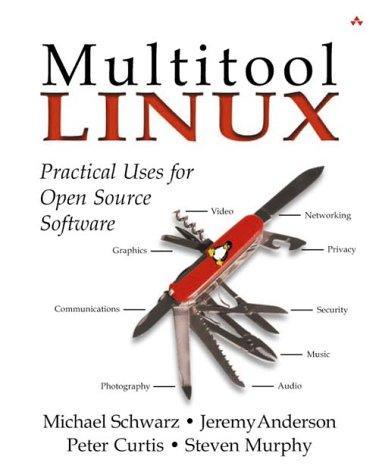
Multitool Linux: Practical Uses for Open Source Software
by
Michael Schwarz
,
Jeremy Anderson
and
Peter Curtis
Published 7 May 2002
It turns out, however, that those of us who write software also would like to get software for free. So some of us started writing code and giving it away. We get paid back in the form of the other free software written by other programmers. At this point, thanks to people like Richard Stallman of the Free Software Foundation and Linus Torvalds (author of the Linux kernel), you can now have a complete multiuser network server operating system and a whole slew of applications for free. You can also, if you are a programmer, get all the source code for all of it and add features or fix bugs yourself, if you are so inclined.
…
All of the licenses we cover here give you at least those rights. If you plan to use the source code in a program of your own, be more alert. This is where these licenses differ wildly. The GPL GPL stands for GNU Public License. GNU stands for "GNU's not Unix." GNU is a project launched by the founder of the Free Software Foundation (FSF), one Richard M. Stallman, or RMS, as he is often called. He believes that all software should be free. He does not mean that all software should be gratis, but rather that all software should be "liberated." The phrase Stallman uses is "Think free speech, not free beer." Stallman is often denounced as at best naive, at worst communist.
…
These descriptions are somewhat simplified—there are some additional complexities in the actual implementation. We'll address those as we come to them. Generating Keys Before you can use GPG, you must generate a key. The first time you ever run GPG, it will probably say this: [bubba@mars bubba]$ gpg —gen-key gpg (GnuPG) 1.0.1; Copyright (C) 1999 Free Software Foundation, Inc. This program comes with ABSOLUTELY NO WARRANTY. This is free software, and you are welcome to redistribute it under certain conditions. See the file COPYING for details. gpg: /home/bubba/.gnupg: directory created gpg: /home/bubba/.gnupg/options: new options file created gpg: you have to start GnuPG again, so it can read the new options file Unless your system administrator has a .gnupg directory set up for new accounts automatically, GPG must create a .gnupg directory and set it up with default configurations and empty private and public keyrings.

Smart Mobs: The Next Social Revolution
by
Howard Rheingold
Published 24 Dec 2011
One holdout at MIT, deprived of his beloved programming environment, resistant to the commercialization of what he considered public property by AT&T and Microsoft, was Richard Stallman. Stallman vowed to write an OS that would be as portable and open as Unix, but which would be licensed in a way that would maintain its status as public goods. Stallman, founder of the Free Software Foundation, started creating GNU—a recursive acronym that stands for “GNU’s Not Unix.” Stallman, who owns little property and has no home other than his office, devoted himself thereafter to what he called “free software” (and emphasized that he meant “free as in free speech, not free beer”).57 Stallman hacked the legalities of the copyright system as well as created the first source code for a free OS.
…
Ritchie, “The Evolution of the Unix Time-Sharing System,” AT&TBell Laboratories Technical Journal 63 (October 1984): 15771593. 54. Nick Moffit, “Nick Moffit’s $7 History of Unix,” <http://crackmonkey.org/unix.html > (29 January 2002). 55. Ritchie, “The Evolution of the Unix Time-Sharing System.” 56. Moffit, “Nick Moffit’s $7 History of Unix.” 57. Richard Stallman, “The Free Software Definition,” The GNU Project, Free Software Foundation, 2000, <http://www.gnu.org/philosophy/free-sw.html> (17 June 2001). 58. Ibid. See also: Michael Stutz, “Freed Software Winning Support, Making Waves,” Wired News, 30 January 1998, <http://www.wired.com/news/technology/0,1282,9966,00.html > (5 February 2002). 59. Eric Raymond, The Cathedral and the Bazaar: Musings on Linux and Open Source by an Accidental Revolutionary (Sebastopol, Calif.: O’Reilly and Associates, 1997).
…
Dre (rap artist) Dresher, Melvin. 42 Dubai Duke University Dunbar, Robin Dyson, Esther EarthLink eBay Web site and Reed's Law and reputation systems See also Auctions Economic theory Ego strokes Einstein, Albert Electronic cottage, notion of Electronic Frontier Foundation Elektrosmog Ellis, Jim Ellul, Jacques E-mail junk (spam) origins of and reputation systems See also Texting Emergence (Johnson) Emergency communications Encryption algorithms and number theory and reputation systems and smart objects Encyclopedia of Everything End-to-end principle Engelbart, Douglas Engestrom, Jyri ENGwear Enlightenment Enoki, Keiichi Entropia Epinions Web site Ericsson (company) Ericsson, Richard Erlangen University Escape Velocity: Cyberculture at the End of the Century (Dery) Estrada, Joseph Ethernet Ethics Ethnography European Central Bank Evolutionary theory and Darwin and extinction and non-zero-sum games and reputation systems Evolution@home Evolution of Cooperation, The (Axelrod) ExpertCentral Web site Experts-Exchange Extinction, of species Extraterrestrial intelligence See also SETI(Search for Extraterrestrial Intelligence) project Exxon Eye contact, human discourse without EyeTaps Facial recognition systems Fanning, Shawn FAQs (Frequently Asked Questions) FARC guerrillas Federal Communications Commission (FCC) and interference problems and open-spectrum advocates and MeshNetworks Project 802 committee Federal Express Federal Radio Commission (FRC) Feedback Forum Fehr, Ernst Feiner, Steven Feudalism File sharing Finland Firefly First Amendment See also Constitution (United States) Fish, research on Fisher, Scott Flamers Flame wars Flocking behavior Flood, Merill. Folderol Folding@home Food sharing, emergence of Forestry resources Fortunati, Leopoldina Forums Foucault, Michel France France Telecom Frankel, Justin Frankfurt School Fraud Frauenfelder, Mark FRC (Federal Radio Commission) Free riders, dilemma of Free Software Foundation Freitas, Nathaniel Frequency hopping Fukuyama, Francis Furniture, computer chips in, See also Smart rooms Future, "shadow" of Future of Ideas, The (Lessig) Gachter, Simon Game theory and Botfighters and the Chicken game and the Deadlock game and economic theory location-based and non-zero sum games and the Prisoner's Dilemma game and the Public Goods Game and reputation systems and the Stag Hunt game and the Ultimatum Game and zero-sum games Gartner Consulting Gates, Bill Gedye, David Gelernter, David General Motors "Generation Txt," Genetics Genome research GeoNote system Georgia Institute of Technology German National Research Center for Information Technology Germany Gershenfeld, Neil GFNs (group-forming networks) Gigabit wireless Gillette Gilliat, Bruce Glance, Natalie Glaxo Global positioning system (GPS) devices in automobiles development of military uses of and spread-spectrum technology and the WorldBoard infrastructure Global System for Mobile Communications (GSM) networks "Gnomes of San Jose, The" (Doctorow) Gnutella GnutellaNet Godell, Lars Goffman, Erving Google Gordon, H.
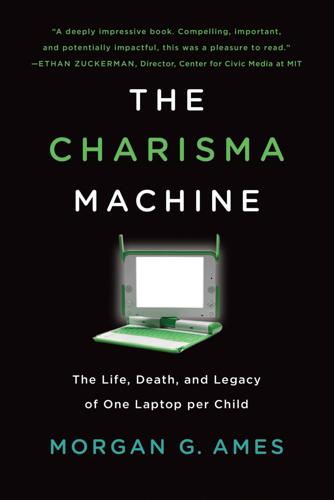
The Charisma Machine: The Life, Death, and Legacy of One Laptop Per Child
by
Morgan G. Ames
Published 19 Nov 2019
In an interview on National Public Radio’s Radio Open Source program in February 2007—in which the XO laptop was described by the commentator as “a hacker’s paradise, a real open-source playing field”—Bender elaborated that an open-source laptop allows for deep exploration: “We want the children to be able to reach inside the machine, ... and a closed system does not allow that.”52 Chris Blizzard articulated the connection to free and open-source software more directly by stating that it is necessary for learning: “The commitment to open source and free software is still one of the main [principles] of the project. Learning requires the transparency that free and open source software provides.”53 The connection between this commitment and the ethos of MIT’s hacker community is straightforward; indeed, a number of this community’s members, such as Free Software Foundation founder Richard Stallman, built their careers and lives around it. This group’s passion for free and open-source software is central enough that it appears in the hacker ethic as Steven Levy articulated it: “all information should be free” and access to computers should be “unlimited and total.”54 The primary and easiest target of this commitment was the laptop’s interface, Sugar, which was built on top of the Red Hat version of the (open-source) Linux operating system and was all open source itself.
…
They also connected with many of the core values of hacker culture at MIT and beyond. With the XO, Papert’s ideas for a constructionism-based “children’s machine,” which he first articulated in the 1960s, were finally realized. Benjamin “Mako” Hill, who was then an advisor to OLPC and a board member at the Free Software Foundation during his graduate work at MIT, articulated the connections between constructionism and open-source software more explicitly: “Constructionist principles bear no small similarity to free software principles. Indeed, OLPC’s stated commitment to free software did not happen by accident. OLPC convincingly argued that a free system was essential for creating a learning environment that could be used, tweaked, reinvented, and reapplied by its young users.”
…
See World Economic Forum Debugging, 31 Design masculine, in OLPC, 71 nostalgic, 15–18, 51–55, 58–60, 62, 71, 131–132, 233n15 of XO laptop, flaws in, 89–90, 99, 244nn55–56 Development disruption and, 183 performativity in, 173, 178–183, 250n12 Silicon Valley model of, 178–179 technological utopianism in, problems of, 195, 254n37 United Nations program for, 3 Digital native, 228n47 Disruption of classroom, OLPC expectations of, 83, 92, 106–107 performing development and, 183 Silicon Valley culture of, 189 by XO laptop, 85, 106–107 Doom, 57, 122, 129, 143 DOTA 2, 151 Dourish, Paul, 6 Drake, Daniel, 239n17, 240n23 Educational reform charisma and, 187, 196–198 techno-utopian, 187–189 Electronic Frontier Foundation, 127 English, 169 Futuro teaching, 153, 156 over Guaraní, privileging of, 158, 160 learning, focus on, 156–160 Paraguay Educa arranging lessons in, 145, 151–152, 156 Ensmenger, Nathan, 39 Ethiopia, 176, 185–186 Ethnography, 16, 107 methods of, 214, 224n60 performance and, 174–175 thick description in, 217 Etoys, 148–152 Etoysera, 148 Europe and the People without History (Wolf, E.), 161 Exceptionalism, 10, 69–70 Factory model, of education, 36–37, 60, 229n69, 230n73 Fail Festival, 178–179 Ferguson, James, 161–162, 250n12 Fetishism, 223n42, 234n31 Fieldwork Guaraní in, 214 with Paraguay Educa, 16, 210–214, 216–218 quantitative data supplementing, 16, 214–216 thick description in, 217 Fisher, Allan, 69–70 Formadores, 95–97 Fortunati, Leopoldina, 221n35 Foucault, Michel, 222n37 Fouché, Rayvon, 132–133 Freedom Levy on, 62 in OLPC core principles, 50, 61 Papert on, 65–66 self-taught learner and, 64–66, 236n67 in XO laptop, 61–67, 71–72, 236n59 Free Software Foundation, 62, 64 Freire, Paulo, 76, 229n67, 239n15 Futuro, 153, 156 García, Alan, 245n73 Geertz, Clifford, 194, 217 Gender boy as default, 43, 232n97 hacker ethic and, 38–40 internet and, 43 laptop breakage and, 117 masculine design, 71 motivation and, 70 OLPC and, 39–40, 43–44, 46, 71 Papert and, 43–44 in Paraguay Educa, 117–118, 144–147, 151–152, 155, 159, 163 rebellion and, 38–40 Scratch and, 145–147 technically precocious boy, 15–16, 29, 33, 41–45, 111, 145–146, 152, 155, 187–188, 231n90, 231n92 toys and, 41–43 in video games, 42–44, 57 Gettys, Jim, 51–53 Gibson, William, 39, 53 Globalization, 221n35 Global South, 219n1 imperialism and, 195–196 Logo projects in, 25–27, 225n15 OLPC for, 1–3, 5, 49, 219n9, 220n12 OLPC imaginary and, 7 teachers in, 60 The Gods Must Be Crazy, 107, 246n80 Goffman, Erving, 173 Great Britain, 187 Green machine, laptop as, 2–3, 55 Guaraní English privileged over, 158, 160 in fieldwork, 214 in Paraguay, 77, 81, 157–158, 160, 214, 224n60 rurality and, 157 Gutiérrez, Raúl, 73–74, 77–78, 238n5, 239n18 Hackathons, 250n12 Hacker ethic, 226n31 masculinity and, 39–40 open-source software promoted by, 62 rebellion in, 37–41, 46 Hackers constructionism and, 28–31, 38, 46 infrastructure and identity of, 163 at MIT, culture of, 14–15, 23, 28–31, 38, 54, 58, 226n31 OLPC architects as, 15, 23 Papert and MIT culture of, 29–31, 54 Papert and social imaginary of, 38, 44–45 in Paraguay Educa, culture of, 77, 144, 163 self-taught, social imaginary of, 44–46 as yearners, 44–45 Hackers (Levy), 38–39 freedom in, 62 MIT in, 30, 60, 226n31 as symbol, hacker in, 226n31 Hall, Stuart, 7–8, 45 Haraway, Donna, 14, 199 Harvey, David, 223n42 Heterogeneous networks, 19 Hill, Benjamin Mako, 40, 64–67 Himanen, Pekka, 226n31 Historical Determinism, 191–192 Hodzic, Saida, 250n12 Hole in the Wall, 194 Holmes, Christina, 195 Hour of Code, 187–188 Hoyles, Celia, 27 Humala, Ollanta, 245n73 Hundred-dollar laptop.

The Secret War Between Downloading and Uploading: Tales of the Computer as Culture Machine
by
Peter Lunenfeld
Published 31 Mar 2011
So he developed a new operating system compatible with the UNIX family, 170 HOW THE COMPUTER BECAME OUR CULTURE MACHINE but distinct from it, and made it available to other like-minded programmers. In hackerish fashion, he christened it GNU (an acronym for the recursive phrase “Gnu’s Not Unix”), and in 1985, he started the Free Software Foundation to support his work and that of his growing community of collaborators. In the “GNU Manifesto,” Stallman defined the ethos of free, or open, software: 1. You have the freedom to run the program, for any purpose. 2. You have freedom to modify the program to suit your needs. (To make this freedom effective in practice, you must have access to the source code, since making changes in a program without having the source code is exceedingly difficult.) 3.
…
The full text of the jury’s statement is archived on the Ars Electronica site, available at <http://90.146.8.18/en/archives/prix_archive/prix_projekt.asp?iProjectID=2183>. 25 . See <http://www.gnu.org/gnu/thegnuproject.html>. See also Richard M. Stallman, Free Software, Free Society: Selected Essays of Richard M. Stallman 196 NOTES (Boston: Free Software Foundation, 2002); Sam Williams, Free as in Freedom: Richard Stallman’s Crusade for Free Software (Boston: O’Reilly, 2002). 26 . See Linus Torvalds and David Diamond, Just for Fun: The Story of an Accidental Revolutionary (New York: HarperCollins, 2001). 27 . Computer and social scientist Paul Dourish was the first to tell me the joke that “Linux is free only if the value of your time is zero.” 28 .
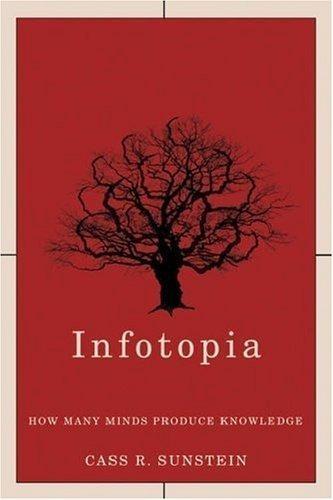
Infotopia: How Many Minds Produce Knowledge
by
Cass R. Sunstein
Published 23 Aug 2006
Those who celebrate open source software, and believe that it has major advantages over alternative methods, emphasize this point above all. Note here Eric Raymond’s suggestion: “Given enough eyeballs, all bugs are shallow.”26 A Movement / Open source software has an extremely colorful history; it even involves a kind of social movement, with vivid personalities and a great deal of passion and commitment.27 The Free Software Foundation, a nonprofit organization, was started by Richard Stallman in 1985, the same year that Stallman invented the copyleft license; and Stallman, to 168 / Infotopia whom I shall return, has been a foundational figure for over two decades. An important moment in the movement occurred in 1991, when Linus Torvalds, a computer science graduate student at the University of Helsinki, started to do some interesting work on his personal computer.
…
See also Wikipedia Enron, 79 entertainment industry, 111–12, 161 Environmental Protection Agency, 214 errors, 19, 28–43, 199, 218 amplification of, 14, 17, 75–81, 101, 163, 220, 223, 224 bias factor in, 33–36, 41, 75, 78, 80–81, 96, 219 blogs and, 16, 184, 185, 186–88, 191, 223 Condorcet Jury Theorem and, 28–29, 33–36, 78, 80, 105, 219 of conjunction, 77, 79 deliberating groups and, 17, 35, 48, 54, 56, 58, 70–71, 75–81, 96, 201, 220, 221 by experts, 39 group polarization and, 96 markets and, 104 morality issues and, 101 political, 38 prediction markets and, 106, 134–43 random, 30–31, 32, 42 statistical groups and, 28–29, 33–38, 78 wikis and, 154–55, 158, 195 worse than random, 33, 36–38, 41, 48 Index / 263 Esquire (magazine), 160 eureka-type problems, 60–64, 175, 195, 200 exclusion, from groups, 68 experts, 236n.35 deliberating groups and, 53–54, 65, 207, 211–12 statistical averages/answers vs., 38–41, 43, 220 external markets, 131–33, 198 extremism, 8, 19 blogs and, 191, 223 deliberation and, 12, 45–46 group polarization and, 93, 95, 220–21 fads, 15, 128, 141, 221 falsehoods blogs and, 16, 18, 186–88 conventional wisdom and, 29 deliberating groups and, 12, 58 wikis and, 154 familiarity, availability heuristic and, 76 fanaticism, 93 fascism, 202 fashions, 15, 128, 221 favorite-long shot bias, 139–40 fear, deliberating group members and, 67–68 feasibility, prediction markets and, 143–45 Federal Communications Commission, 214 federal judges, 14, 70–71, 93 Federal Reserve, 109 File 05 (wiki), 6–7 264 / Index filters blogs’ lack of, 189 collaborative, 147–48 for open source software, 174– 77, 195 Fishkin, James, 11–12 Fitzgerald, Patrick, 136 Flu Wiki, 161–62 FOSS. See open source software Fox News, 182 framing effects, 76–77, 78 France, 92–93 Free Culture (Lessig), 180 free market, 119, 128 free and open source software. See open source software free software, 170–71 Free Software Foundation, 168 futarchy, 104 futures, 107–9, 138–43. See also prediction markets futures trading, 117–18 Gallo, Jason, 190 Gallup polls, 110 Galton, Francis, 24 gambling laws, 117 “Garbage in, garbage out” principle, 78 Gates, Bill, 170 General Public License, 167 Genghis Khan, 217, 218 geopolitics, prediction markets and, 107–8 GNU (operating system), 170 GNU Free Documentation License, 153–54, 170, 180 Goldman Sachs, 117 Google, 23, 97, 109, 165 prediction markets and, 5–6, 113–16, 117, 131, 198, 222 government accountability of, 49, 50 market’s role in, 104 prediction markets and, 132–33, 144, 198 structure of, 50–52 See also politics government agencies, 12–13, 67, 203, 213–15.

The Innovators: How a Group of Inventors, Hackers, Geniuses and Geeks Created the Digital Revolution
by
Walter Isaacson
Published 6 Oct 2014
The central module of an operating system, a kernel manages the requests from software programs and turns them into instructions for the computer’s central processing unit. “I’m finishing the compiler before I go to work on the kernel,” Stallman answered. “I am also going to have to rewrite the file system.”126 For a variety of reasons, he found it difficult to complete a kernel for GNU. Then, in 1991, one became available not from Stallman or his Free Software Foundation, but from a most unexpected source: a twenty-one-year-old toothy and boyish Swedish-speaking Finn at the University of Helsinki named Linus Torvalds. Linus Torvalds’s father was a Communist Party member and TV journalist, his mother a student radical and then print journalist, but as a child in Helsinki he became more interested in technology than in politics.127 He described himself as “good at math, good at physics, and with no social graces whatsoever, and this was before being a nerd was considered a good thing.”128 Especially in Finland.
…
No recounts.”140 The combination of GNU with Linux represented, at least in concept, the triumph of Richard Stallman’s crusade. But moral prophets rarely indulge in victory celebrations. Stallman was a purist. Torvalds wasn’t. The Linux kernel he eventually distributed contained some binary blobs with proprietary features. That could be remedied; indeed Stallman’s Free Software Foundation created a version that was completely free and nonproprietary. But there was a deeper and more emotional issue for Stallman. He complained that referring to the operating system as “Linux,” which almost everybody did, was misleading. Linux was the name of the kernel. The system as a whole should be called GNU/Linux, he insisted, sometimes angrily.
…
In addition to the sources cited below, this section is based on my interview with Richard Stallman; Richard Stallman, essays and philosophy, on http://www.gnu.org/gnu/gnu.html; Sam Williams, with revisions by Richard M. Stallman, Free as in Freedom (2.0): Richard Stallman and the Free Software Revolution (Free Software Foundation, 2010). An earlier edition of the Williams book was published by O’Reilly Media in 2002. As that edition was being completed, Stallman and Williams “parted on less than cordial terms” based on Stallman’s objections and requests for corrections. Version 2.0 incorporated Stallman’s objections and a significant rewriting of some segments of the book.
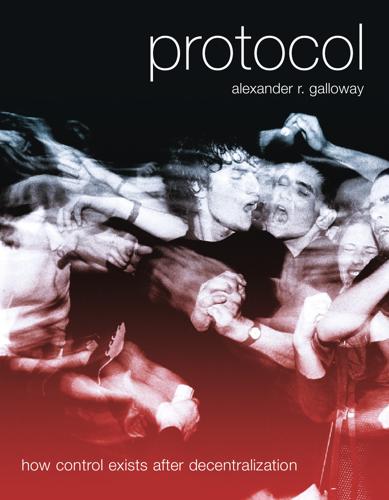
Protocol: how control exists after decentralization
by
Alexander R. Galloway
Published 1 Apr 2004
For more details on the Mitnick story, see the following texts: Katie Hafner and John Markoff, Cyberpunk: Outlaws and Hackers on the Computer Frontier (New York: Touchstone, 1991); Tsu- Chapter 5 170 A British hacker named Dr-K hardens this sentiment into an explicit anticommercialism when he writes that “[c]orporations and government cannot be trusted to use computer technology for the benefit of ordinary people.”59 It is for this reason that the Free Software Foundation was established in 1985. It is for this reason that so much of the non-PC computer community is dominated by free, or otherwise de-commercialized software.60 The hacker ethic thus begets utopia simply through its rejection of all commercial mandates. However, greater than this anti-commercialism is a pro-protocolism.
…
See Cyberfeminism Feng, Patrick, 245 Fetishism, 99, 100n65 Feuerback, Ludwig, 87, 91 Index 252 Film, 19, 210, 212 First Cyberfeminist International, 187 Flash, 219 Flexibility, 30, 42, 46, 128, 142, 159, 201, 243 Floodnet, 214 Flusser, Vilém, 72–73, 83, 104 Fluxus, 195, 235 Formalism, 209, 216 Form art, 219, 225 Form of appearance, 100–102 Fortran, 68 Font, protocol of, 77–78 Foucault (Deleuze), 16, 21 Foucault, Michel, 3, 12, 21, 31, 69, 81–87, 190, 244 Fragmentation, 44–46 Frankenstein (Shelley), 102 Frankfurt School, 23, 56 Free Software Foundation, 171 French Revolution, 21 Frye, Northrop, 165 Fuller, Matthew, 218 Future Combat Systems (FCS), 200n65 FYI, 136 Guattari, Félix, 33–34, 219, 242 Guggenheim Museum, 227 Gulf War (1991), 27, 204 Hacker/hacking, 151–164, 167–172, 213–214 allegory of, 157 ethic, 152, 171 etymology of, 151n7 as libertarian, 151 as terrorist, 151, 157, 180 “Hacker Manifesto” (The Mentor), 156, 213 Hackers for Electronic Arts (HEART), 214 Hafner, Katie, 122 Haifa, 179 Hale, Thomas, 201 Hall, Stuart, 88 Handshake, TCP, 42–43.

Beautiful Solutions: A Toolbox for Liberation
by
Elandria Williams, Eli Feghali, Rachel Plattus
and
Nathan Schneider
Published 15 Dec 2024
Increasingly, software companies are also paying their employees to contribute to FLOSS projects that their products rely on. “FREE SOFTWARE MEANS THAT THE USERS HAVE THE FREEDOM TO RUN, EDIT, CONTRIBUTE TO, AND SHARE THE SOFTWARE. THUS, FREE SOFTWARE IS A MATTER OF LIBERTY, NOT PRICE.” —FREE SOFTWARE FOUNDATION Still, many FLOSS projects experience challenges with sustainability over the long term. Although the FLOSS movement is well established, corporations undermine FLOSS projects in many ways, such as by encouraging features and improvements that suit their own needs and preventing efforts that could compete with their proprietary products.
…
FLOSS has many layers. It is a legal definition that challenges copyright. It is a method of open, transparent, and collaborative innovation. Most importantly, it is a culture for creating trustworthy software that respects its users and contributes to a digital commons for all. LEARN MORE WEBSITE Free Software Foundation. fsf.org WEBSITE Ethical Source Movement. ethicalsource.dev VIDEO “The Rise Of Open-Source Software” by CNBC. (2019) youtu.be/SpeDK1TPbew ORGANIZING PRINCIPLE CHOOSE COLLECTIVE COURAGE Our strength lies in what we can do together. THERE ARE PEOPLE AND INSTITUTIONS WHOSE drive for profit threatens to destroy everything we have.

Here Comes Everybody: The Power of Organizing Without Organizations
by
Clay Shirky
Published 28 Feb 2008
The lab wanted to modify the printer to send a message to users when their document had finished printing. Xerox, however, had not sent the source code for the 9700, so no one at MIT could make the improvement. Recognizing a broader trend in the industry, Stallman started advocating for free software (“free as in speech,” as he puts it). He founded the Free Software Foundation (FSF) in 1983, with a twofold mission. First, he wanted to produce high-quality free software that was compatible with an operating system called Unix. (This project was playfully named GNU, for “GNU’s Not Unix.”) The second part of the FSF mission was to create a legal framework for ensuring that software stayed free.
…
Egyptian activists 80/20 rule elections, and blogging Encarta Enron Episcopalian Church Estrada, Joseph Facebook Fake, Caterina Falun Gong fame FAQs filtering Fiske, Alan Page fitness landscape flash mobs Flickr acquired by Yahoo Belarus flash mob pictures Black and White Maniacs high dynamic range (HDR) photos how it works participation imbalance power law distribution and promise concept role in breaking news stories role in Coney Island Mermaid Parade as sharing platform significance user-generated content and Flyers Rights group. See also airline passengers former audience Free Software Foundation (FSF) freedom friend-of-a-friend (FOAF) networking Friends of O’Reilly (FOO) Camp Gabriel, Richard Genbank Genome Sciences Centre (GSC) Geoghan, Father John Gibson, William Gillmor, Dan Gladwell, Malcolm GNU Public License (GPL) Goldcorp mining good ideas Google Groklaw group action collapse of institutional barriers to collective action as cooperation as coordinating sharing as stolen Sidekick and groups advantage of “ridiculously easy group-forming,” complexity ease of formation large vs. small latent net value argument paradox political value role of bargain role of promise role of social tool Gutenberg, Johannes Guttman, Evan Hackman, Richard Hammer, Jessica Hanni, Kate Hardin, Garrett Heiferman, Scott heralding Hewlett-Packard hierarchical organizations high dynamic range (HDR) photos Holmes, Oliver Wendell homeostasis homophily Honecker, Erich Howard Forums Howe, Jeff HSBC bank Huanming, Yang Huberman, Bernardo A.
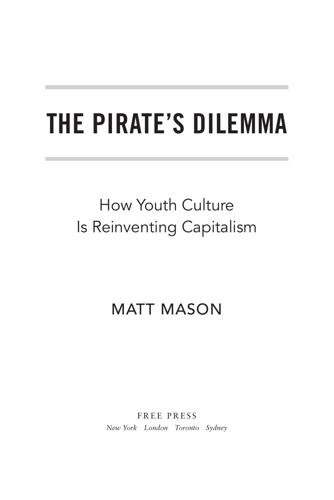
The Pirate's Dilemma: How Youth Culture Is Reinventing Capitalism
by
Matt Mason
It's no accident that one of the richest veins of rave culture in America, an anything-goes culture also based on the idea of giving people options instead of rules, is in Silicon Valley. The Homebrew Computer Club's revenge on Microsoft was the open-source movement. While many agreed with Gates and saw software as intellectual property, others didn't, and continued to develop their own free software. In 1983, a hacker/activist named Richard Stallman founded the Free Software Foundation, writing a new operating system that was as open as possible, arguing, “Free software is a matter of liberty, not price. To understand the concept, you should think of ‘free’ as in ‘free speech,’ not as in ‘free beer.’” [FN: Open-source culture has since developed free beer, too. A group of students and artists in Copenhagen created VoresØl, the world's first open-source beer, to demonstrate how open source can be applied outside the digital world.
…
John Markoff, What the Dormouse Said (New York: Penguin, reprint edition 2006). Bill Gates, “An Open Letter to Hobbyists,” February 3, 1976. http://www.blinkenlights.com/classiccmp/gateswhine.html. R. U. Sirius (aka Ken Goffman) and Dan Joy, Counterculture Through the Ages (New York: Villard, 2004), p. 353. Richard Stallman, “The Free Software Definition,” Free Software Foundation. http://www.gnu.org/philosophy/free-sw.html. For more on Vores Ø1 and other free beers, visit freebeer.org. Brian Bergstein, “Microsoft Offers Cash for Wikipedia Edit,” Newsvine.com, January 23, 2007. http://www.newsvine.com/_news/2007/01/23/534218-microsoft-offers-cash-for-wikipedia-edit.

The End of Ownership: Personal Property in the Digital Economy
by
Aaron Perzanowski
and
Jason Schultz
Published 4 Nov 2016
Tim Cushing, “Ferrari ‘DRM:’ Don’t Screw with Our Logos and We’ll Let You Know If It’s OK to Sell Your Car,” Techdirt, September 3, 2014, https://www.techdirt.com/articles/20140902/11491828395/ferrari-drm-dont-screw-with-our-logos-well-let-you-know-if-its-ok-to-sell-your-car.shtml, accessed September 7, 2015. 42. See “What Is Free Software?” Free Software Foundation, Inc., last modified September 1, 2015, http://www.gnu.org/philosophy/free-sw.en.html, accessed September 7, 2015. 43. “Oops Landing Page,” Keurig Green Mountain, Inc., http://www.keurig.com/content/oops, accessed September 7, 2015. 44. Brian Barrett, “Keurig’s My K-Cup Retreat Shows We Can Beat DRM,” Wired, May 8, 2015, http://www.wired.com/2015/05/keurig-k-cup-drm/, accessed September 7, 2015. 45.
…
Co., 199 Feldman, Lauren, 211 Felten, Ed, 133, 135 Ferrari, 146, 148 Ferris v. Frohman, 203 Firestone Tire & Rubber Co. v. FTC First sale doctrine. See Exhaustion Fitbit, 4, 153, 231 Fixation, 18, 37, 40 Ford Motor Company, 146–148, 235 Forward and delete technology, 186, 188 Franklin, Benjamin, 95, 103 Free software, 71, 149 Free Software Foundation, 230 Freeman, Andrea, 211 French, Brian, 217 Fry, Richard, 234 GameStop, 31 Garage door openers, 137–143 Gasser, Urs, 218–219 Gates, Bill, 124 General Motors (GM), 71, 146, 229 General Talking Pictures v. Western Electric, 160 Gifts, 75, 94, 98, 180–181, 183 GNU General Public License (GPL), 71 Goblin property, 17, 187 Godwin, Mike, 125, 130 Good, Nathaniel, 217 Google, 61, 78, 95, 117–118, 140–141, 151 Gordon, Wendy, 211 Grannis, Amanda, 217 Grassley, Chuck, 236 Greenberg, Joshua M., 201 Greenwald, Glenn, 197 Grimmelmann, James, 238 Grossklags, Jens, 217 Grove Press v.

Who Owns This Sentence?: A History of Copyrights and Wrongs
by
David Bellos
and
Alexandre Montagu
Published 23 Jan 2024
Programmers had long been accustomed to sharing their work and tinkering with the work of others; many of them had no wish to see their culture of collaborative invention hampered or shut down. From hazy beginnings, the movement for keeping software free came to the fore in 1983 with the launch of Richard Stallman’s GNU Manifesto, followed in quick succession by the Free Software Foundation, the drafting of a General Public License, then the release of Linux, a free operating system. Arguments over models and approaches raged in the global community of hackers, inventors and computer scientists, but the broad idea of free software gained further traction in 1999 when Netscape Communications Corporation decided to release its Communicator search engine as “open source”, free for all to use.
…
Fine Art Copyright Act (1862) 153, 154–5, 156, 218 Fitzgerald, Scott (1896–1940) 253–4 Flaubert, Gustave (1821–80) 133 Fleming, Alexander (1881–1955) 77, 78 Fletcher, Susan: A Little in Love 237 Foley, Charles 134 forgery 27, 28, 153 Foucault, Michel (1926–84) 44, 46 Fournel, Paul 119 France 14, 38, 42, 83–7, 122, 145, 147, 189, 194 and authors’ income 74 and Belgian reprints 144–6 and Berne Convention 158, 164 and Exposition Universelle 149–50 and genius 60–1 and libraries 173–4 and literary estates 123–6 and Minitel 267 and moral rights 234, 235–8 and Pamela rip-offs 107 and patent law 168–9 and photocopiers 278 and post-mortem terms 122, 184, 338–9 and printing press 38 and privacy rights 224, 230, 231–2 and sedition/libel laws 113–14 and theatre 130–2, 133 and translations 161–2, 163 see also French Revolution; Paris Free Software Foundation 320 free software movement 57, 319–21 free speech 211, 229, 240, 254, 261, 268 free trade 173–5 French Revolution 87, 111–12, 114, 115–16 Gaius: Institutiones 90 Galen of Pergamon 24 Galignani 145 Galileo Galilei (1564–1642) 88 Garrard, George (1760–1826) 109 Gauss, Carl Friedrich (1777–1855) 81 General Public License 320 Geneva 84, 147 Geneva Convention 148 Geneva Convention for the Protection of Producers of Phonograms against Unauthorized Duplication of their Phonograms 15, 245 genius 58–61, 115 Germany 38, 60, 146, 152, 173, 189, 194 and Berne Convention 157–8, 164 and engravings 100 and Pamela rip-offs 107 and privacy rights 230, 231 and translations 163 Getty Images 303 Giffard, Henry (1694–1772): Pamela (play) 107 Gilbert, Herschel Burke 235 Girardin, Émile de (1802–81) 332 Gladstone, William (1809–98) 151 GlaxoSmithKline 79 “God Bless America” (song) 105 Goethe, Johann Wolfgang von (1749–1832) 60 The Sorrows of Young Werther 117 Goldsmith, Kenneth 310, 311 Goldsmith, Lynn 316–17 Goldsmith, Oliver (1728–74) 96 Goncharov, Ivan (1812–91): Oblomov 179 Google 18, 77, 271–2, 313–14, 320 Gould, Benjamin: Adam’s Latin Grammar 139–40 Graves, Peter 313 Grew, Nehemiah (1641–1712) 167–8 Griffith, D.W. (1875–1948) 134–5 Griffiths, Jonathan 262 Guatemala 192 Guernsey 147, 221–3, 232 guilds 50–1, 84, 85, 86–7 Gutenberg, Johannes (1400–68) 36, 49 Gyles v.
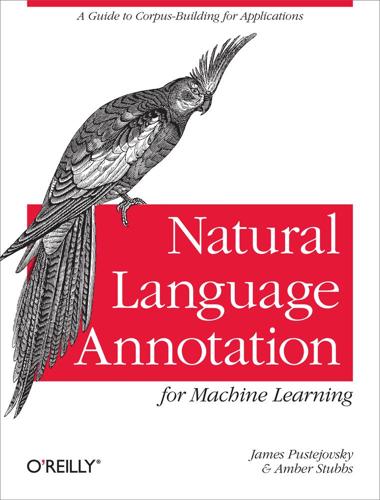
Natural Language Annotation for Machine Learning
by
James Pustejovsky
and
Amber Stubbs
Published 14 Oct 2012
MAE was written in Java on an Ubuntu Linux system, and has been tested on Windows XP, Windows 7, and Mac OS X. It uses the SQLiteJDBC Java driver (more information is available at https://github.com/crawshaw/sqlitejdbc). MAE is free software: you can redistribute it and/or modify it under the terms of the GNU General Public License as published by the Free Software Foundation, either version 3 of the License, or (at your option) any later version. This program is distributed in the hope that it will be useful, but without any warranty; without even the implied warranty of merchantability or fitness for a particular purpose. See the GNU General Public License for more details (http://www.gnu.org/licenses/).
…
MAI was written in Java on an Ubuntu Linux system, and has been tested on Windows XP, Windows 7, and Mac OS X. It uses the SQLiteJDBC Java driver (more information is available at https://github.com/crawshaw/sqlitejdbc). MAI is free software: you can redistribute it and/or modify it under the terms of the GNU General Public License as published by the Free Software Foundation, either version 3 of the License, or (at your option) any later version. This program is distributed in the hope that it will be useful, but without any warranty; without even the implied warranty of merchantability or fitness for a particular purpose. See the GNU General Public License for more details (http://www.gnu.org/licenses/).

Remix: Making Art and Commerce Thrive in the Hybrid Economy
by
Lawrence Lessig
Published 2 Jan 2009
Linden Lab will, if successful, make money by giving its customers just what they want: more than just a service, an experience that gives at least some of the rewards of any sharing economy. So far, the description of this hybrid has been at the content layer of Second Life. In 2007 Linden Lab took one further step down the hybrid path, by “open-sourcing” the client with which one interacts with Second Life. The code for that client was placed under the Free Software Foundation’s General Public License (GPL), meaning the source was free for anyone to tinker with, and modifications of the source when distributed had to be distributed openly as well. Rosedale’s motivations for this change are mixed. One part is the belief in his company, and the belief that it should grow as fast as possible.
…
The only difference is the significance of these hybrids. The Internet will enable a much wider range of hybridization, with a much greater economic and social value. I am grateful to Oliver Baker for reminding me of this point. 2. Benkler, The Wealth of Networks, 55. 3. “GNU Free Documentation License,” Free Software Foundation, available at link #92 (last visited August 20, 2007). 4. All quotes from Brian Behlendorf taken from an interview conducted May 11, 2007, by telephone. 5. Red Hat employed 50 percent of Linux’s core team. Telephone interview with Robert Young, April 26, 2007. 6. Red Hat and VA Linux gave stock options to Torvalds.
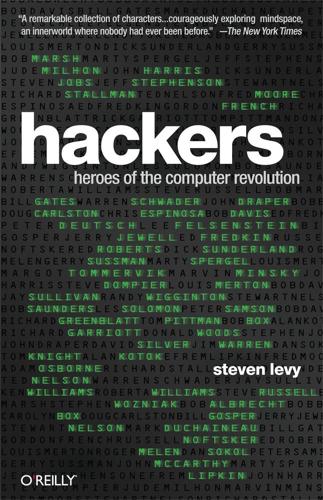
Hackers: Heroes of the Computer Revolution - 25th Anniversary Edition
by
Steven Levy
Published 18 May 2010
According to Williams, John Harris is still writing his software for the long discontinued Atari 800 computer. • • • • • • • • As one might expect of the last true hacker, Richard Stallman has most emphatically remained true to the ideals of the MIT Artificial Intelligence lab. His company, the Free Software Foundation, is, according to Wired, “the world’s only charitable organization with the mission of developing free software.” Stallman has also been an instrumental force in the League for Software Freedom, a group reflecting his belief that proprietary software is a pox upon the digital landscape. In 1991, his efforts came to the attention of those in charge of parceling out the coveted McArthur Fellowship “genius grants.”
…
Even when I first interviewed Richard Stallman in 1983, he was bemoaning the sad decline of hacker culture and felt that the commercialization of software was a crime. I’d assumed the world would soon squash “The Last of the True Hackers” like a bug. Was I ever wrong. Stallman’s crusade for free software has continued to inform the ongoing struggles over intellectual property, and won him a MacArthur Foundation “genius” grant. He founded the Free Software Foundation and wrote the GNU operating system, which found widespread adoption after Linus Torvalds wrote Linux to run it; the combination is used in millions of devices. More important perhaps is that Stallman provided the intellectual framework that led to the open source movement, a critical element of modern software and the Internet itself.
…
Dobbs Journal (DDJ), Tiny BASIC, Woz, Woz Draper, John, Woz, Secrets, The Brotherhood, Applefest Dreyfus, Herbert, Greenblatt and Gosper Duchaineau, Mark, Applefest, Applefest Dungeons and Dragons, Summer Camp, Applefest Dymax, Revolt in 2100 E E-Z-Draw program, The Brotherhood EAM room, The Tech Model Railroad Club, The Tech Model Railroad Club Earth Dies Screaming game, Frogger Eastlake, Don, Winners and Losers Easy Writer program, The Brotherhood, Applefest Edwards, Dan, Spacewar, The Midnight Computer Wiring Society Electrical engineering course No. 641, The Tech Model Railroad Club Electronic Accounting Machinery (EAM), The Tech Model Railroad Club Electronic Arts, Applefest ELlZA program, Life, Every Man a God EMACS editing program, The Last of the True Hackers Erhard, Werner, Tiny BASIC Espinosa, Chris, Woz, Woz, Secrets Esquire magazine, Woz, Applefest Est training, Tiny BASIC Expensive Desk Calculator program, The Hacker Ethic Expensive Typewriter program, The Hacker Ethic, Frogger F F&T Diner, Greenblatt and Gosper Facebook, Afterword: 2010 Felsenstein, Joe, Revolt in 2100, Revolt in 2100 Felsenstein, Lee, Revolt in 2100, Every Man a God, Every Man a God, Every Man a God, The Homebrew Computer Club, The Homebrew Computer Club, The Homebrew Computer Club, The Homebrew Computer Club, The Homebrew Computer Club, Tiny BASIC, Woz, Secrets, Secrets, Secrets, Afterword: 2010 FIND (command), Revolt in 2100 Finkel, LeRoy, Revolt in 2100 Flexowriter, The Tech Model Railroad Club, The Tech Model Railroad Club FLIT, The Tech Model Railroad Club, Spacewar Micro-FLIT, Spacewar Foo, Winners and Losers Foo Camp, Afterword: 2010 Fool on the Hill (Beatles ballad), The Homebrew Computer Club Forbin Project (movie), Every Man a God Form Master (disk-copying machine), Applefest FORTRAN computer language, The Hacker Ethic, Greenblatt and Gosper, Revolt in 2100, The Wizard and the Princess, The Wizard and the Princess Fountainhead, The (Rand), Winners and Losers Franklin, Benjamin, Afterword: 2010 Fredkin, Ed, The Midnight Computer Wiring Society, Winners and Losers, Life, Life, Life, Life Free Software Foundation, Afterword: 2010 Free Speech Movement, Revolt in 2100 French, Gordon, Every Man a God, The Homebrew Computer Club, The Homebrew Computer Club Fresno County jail, Wizard vs. Wizards Fried, Ben, Afterword: 2010 Friedman, Barry, Wizard vs. Wizards Frogger game, Frogger, Applefest, Wizard vs.
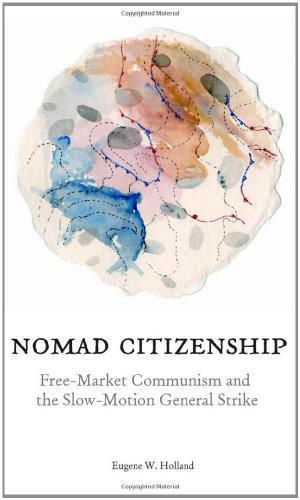
Nomad Citizenship: Free-Market Communism and the Slow-Motion General Strike
by
Eugene W. Holland
Published 1 Jan 2009
In the first three years of the twenty-first century, com puting giant IBM saw its GNU-Linux-related revenues rise from almost nothing to more than double the revenues generated by its own patented software applications; it now invests billions of dollars in FOSS develop ment and donates patents to the Free Software Foundation. Equally re markable as this level of success (especially since the GNU-Linux operat ing system competes head-to-head with monopolistic Microsoft’s Windows operating system) is that FOSS is not only available for free, it is produced for free. In this respect, it resembles other experiments in Internet-mediated peer production such as the NASA Clickworkers Project and Project Gutenberg’s Distributed Proofreaders (DPs).
…
The third distinctive feature of the new system of production follows directly from the second: FOSS peer production is commons based, meaning that FOSS products cannot be privately owned; anyone can use then, and anyone can improve them. The General Public License (also known colloquially as copyleft), which was developed for the Free Software Foundation by Richard Stallman and Eben Moglen, assures that FOSS cannot become private property and remains instead a Common Good from which anyone may benefit and to which anyone may contribute (if she is able). This Internet-mediated intellectual commons is a key feature of the peer-production system, and we will return to it later.

Dreaming in Code: Two Dozen Programmers, Three Years, 4,732 Bugs, and One Quest for Transcendent Software
by
Scott Rosenberg
Published 2 Jan 2006
Programmers looked at one another across the network they had built, blinked, and realized that they shared a set of practices and philosophies different from those of the Microsoft-dominated personal-computing mainstream. They took their inspiration and tools from two central figures: Richard Stallman and Linus Torvalds. In 1985, Stallman, an eccentric MIT genius who was irate about the commercial software industry’s habit of locking up code, established the Free Software Foundation. It developed a special kind of software license that said you could have all the code you wanted, and reuse it, and incorporate it into new products—but anything you created with that code had to be covered, in turn, by the same licensing terms. This license, called the GPL (for GNU Public License), was explicitly designed to limit the privatization of free programs, and its critics came to view it as a sort of nasty infectious virus; Bill Gates derided it as anticapitalist and compared it to Pac-Man, the video game critter with the vast appetite.
…
In the Unix world, programmers had long been accustomed to freely sharing their source code. But for important work, cathedral mode had long remained the default, for both free and commercial software. The most important predecessor to Linux, BSD Unix, was largely the work of one man, Bill Joy, who went on to cofound Sun Microsystems. And Stallman’s Free Software Foundation produced its popular GNU software tools—like the emacs editor found on so many programmers’ desktops to this day—under a cathedral approach, too. Torvalds and Linux changed that, demonstrating that a “promiscuous,” bazaar-style approach could produce big, useful software that kept getting better.

The Wealth of Networks: How Social Production Transforms Markets and Freedom
by
Yochai Benkler
Published 14 May 2006
Within a span of four years, the Linux-related services category moved from accounting for practically no revenues, to providing double the revenues from all patent-related sources, of the firm that has been the most patent-productive in the United States. IBM has described itself as investing more than a billion dollars in free software developers, hired programmers to help develop the Linux kernel and other free software; and donated patents to the Free Software Foundation. What this does for the firm is provide it with a better operating system for its server business-- making the servers better, faster, more reliable, and therefore more valuable to consumers. Participating in free software development has also allowed IBM to develop service relationships with its customers, building on free software to offer customer-specific solutions.
…
The firms must do so without seeking to, or even seeming to seek to, take over the project; for to take over the project in order to steer it more "predictably" toward the firm's needs is to kill the goose that lays the golden eggs. For IBM and more recently Nokia, supporting [pg 125] the social processes on which they rely has also meant contributing hundreds of patents to the Free Software Foundation, or openly licensing them to the software development community, so as to extend the protective umbrella created by these patents against suits by competitors. As the companies that adopt this strategic reorientation become more integrated into the peer-production process itself, the boundary of the firm becomes more porous.
…
When Hollywood sued Grokster, the file-sharing company, and asked the Supreme Court to expand contributory liability of the makers of technologies that are used to infringe copyrights, it found itself arrayed against amicus briefs filed by Intel, the Consumer Electronics Association, and Verizon, SBC, AT&T, MCI, and Sun Microsystems, alongside briefs from the Free Software Foundation, and the Consumer Federation of America, Consumers Union, and Public Knowledge. 827 Even if laws that favor enclosure do pass in one, or even many jurisdictions, it is not entirely clear that law can unilaterally turn back a trend that combines powerful technological, social, and economic drivers.
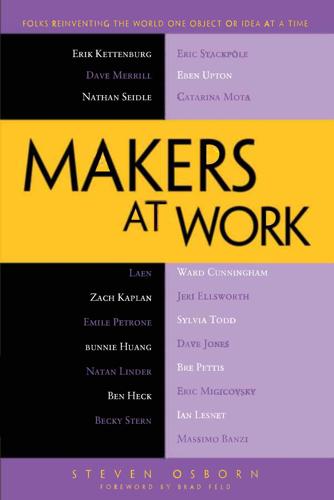
Makers at Work: Folks Reinventing the World One Object or Idea at a Time
by
Steven Osborn
Published 17 Sep 2013
Obviously, there’s a whole set of procedures we have signed with all the distributors where they will not screw customers. And that’s important to me. This year, Arduino started to give back to the community. We donated a few thousand dollars to a bunch of open-source projects that are important for us, like Creative Commons. We donated money to the Free Software Foundation, to Processing. We use a wiki to run the web site, which is made by one guy in Canada. We gave him $2,500. So in a way, we spent about $25,000 at the beginning of the year to donate back to projects, and we’re going to spend another $25K the second part of the year to donate equipment to schools and to people who request it.
…
See Jones, Dave Ellsworth, Jeri abuse components Adafruit line CastAR in Technical Illusions childhood ham radios, working with homemade computers phones, fascinated with toys video descrambling Commodore 64 joystick toy computer store dirt-track racing home chip lab jobs mentors microcontrollers TSA scanner clone video streaming virtual reality and augmented reality Expancel F FLORA project Ford, Henry Form 1 Formlabs. See Linder, Natan Forward-reaching approach Free Art and Technology (FAT) Free Software Foundation Full Spectrum 40-watt hobby laser G Gadget factory GPS dog collar Graffiti Research Lab H Hall City Cave Heck, Ben Apple stock Atari video game console atomic bomb, destructive technology Brittany Spears effect bullshit buying and modding buying, equipment design and manufacture pinball machines design circuit board systems 3D printing and technology expensive to make controller Geocities web site graphics artist MakerBot/3D scanner making independent films N64 Oculus Rift guy Palmer Lucky physical capability and dexterity Power Glove prototypes video editing experience video producer (Herreid, Alyson) Xbox 360 laptop Huang, bunnie ARM CPUs, 64-bit artificial barriers billion-dollar company chumby electronic stickers FedEx charges foster hardware engineering hardware ecosystem hardware hacker innovation ecosystem Kickstarter projects legal defense fund media lab Microsoft Xbox Mims, Forrest (books) open-source laptop own projects reconfigurable hardware image-processing solution Safecast Sifteo cubes small entrepreneur smartphones speech synthesizer US vs.
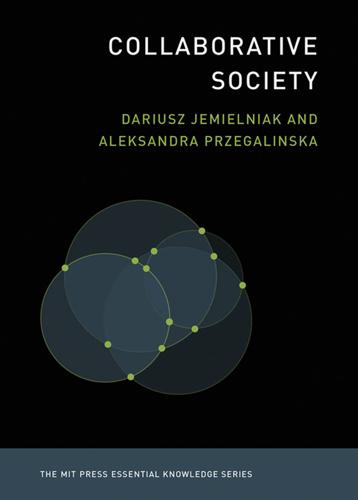
Collaborative Society
by
Dariusz Jemielniak
and
Aleksandra Przegalinska
Published 18 Feb 2020
In fact, in the beginning of open collaboration movements, many of them closely copied the principles and culture typical to free/open source software. These principles assume that the outcome of peer production should be free in the sense of not requiring any payment for use, but also free in the sense described in 1986 by Richard Stallman, when he explained the philosophy of the Free Software Foundation: free to use, free to study and change, and free to redistribute with or without changes.26 It is free in the sense of “free speech” as well as in the sense of “free beer.”27 These freedoms enable forking, which we can think of in visual, nontechnical terms as the way a river can go off (or change) course.28 This right to fork is important, as it actually helps the whole ecosystem: Let’s say we want to do things differently and better; we may try to persuade others to follow us.
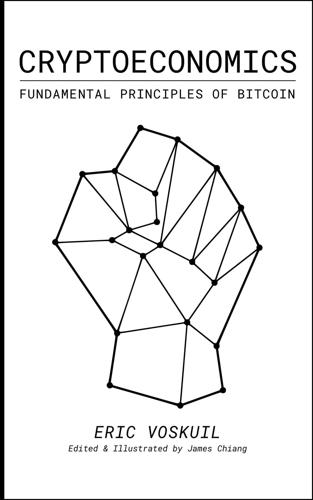
Cryptoeconomics: Fundamental Principles of Bitcoin
by
Eric Voskuil
,
James Chiang
and
Amir Taaki
Published 28 Feb 2020
* * * [10] https://libbitcoin.info [11] https://bitcoincore.org [12] Chapter: Dedicated Cost Principle [13] https://www.dtu.dk/english [14] https://twitter.com [15] https://libbitcoin.info [16] https://github.com/libbitcoin/libbitcoin-system/wiki/Cryptoeconomics [17] Chapter: Inflation Principle [18] Chapter: Savings Relation [19] https://en.wikipedia.org/wiki/Amir_Taaki [20] Chapter: Foreword [25] https://libbitcoininstitute.org [26] https://en.wikipedia.org/wiki/Free_Software_Foundation [27] https://www.irs.gov/charities-non-profits/charitable-organizations/exemption-requirements-501c3-organizations [28] Chapter: Value Proposition [51] https://en.wikipedia.org/wiki/Ludwig_von_Mises [52] https://en.wikipedia.org/wiki/Murray_Rothbard [53] Chapter: Inflation Principle [54] Chapter: Money Taxonomy [55] Chapter: Full Reserve Fallacy [56] Chapter: Censorship Resistance Property [57] Chapter: Depreciation Principle [83] https://en.wikipedia.org/wiki/Spherical_geometry [84] Chapter: Permissionless Principle [85] Chapter: Censorship Resistance Property [86] Chapter: Hearn Error [87] https://en.wikipedia.org/wiki/Confinity [88] Chapter: Value Proposition [89] https://en.wikipedia.org/wiki/PayPal [90] Chapter: Risk Sharing Principle [91] Chapter: Proof of Work Fallacy [92] Chapter: Side Fee Fallacy [93] Chapter: Axiom of Resistance [94] Chapter: Qualitative Security Model [95] Chapter: Pooling Pressure Risk [96] Chapter: Risk Sharing Principle [98] Chapter: Threat Level Paradox [99] https://en.wikipedia.org/wiki/Foreign_exchange_controls [100] Chapter: Risk Sharing Principle [101] Chapter: Threat Level Paradox [102] Chapter: Balance of Power Fallacy [103] Chapter: Pooling Pressure Risk [104] http://www.imf.org/external/index.htm [105] https://en.wikipedia.org/wiki/Seigniorage [106] Chapter: Threat Level Paradox [107] https://www.theatlantic.com/magazine/archive/2017/09/big-in-venezuela/534177/ [110] Chapter: Fragmentation Principle [111] Chapter: Consolidation Principle [112] Chapter: Risk Sharing Principle [115] Chapter: Risk Sharing Principle [116] Chapter: Proof of Stake Fallacy [117] Chapter: Censorship Resistance Property [118] Chapter: Axiom of Resistance [119] Chapter: Money Taxonomy [120] Chapter: Reservation Principle [121] Chapter: Blockchain Fallacy [122] Chapter: Axiom of Resistance [123] https://en.wikipedia.org/wiki/Cognitive_dissonance [124] https://en.wikipedia.org/wiki/Wikipedia:Rage_quit [125] Chapter: Dumping Fallacy [126] Chapter: Qualitative Security Model [127] Chapter: Inflation Principle [128] Chapter: Lunar Fallacy [131] Chapter: Hearn Error [132] Chapter: Value Proposition [134] Chapter: Other Means Principle [135] https://en.m.wikipedia.org/wiki/Seigniorage [136] https://www.imf.org [137] Chapter: Pooling Pressure Risk [138] Chapter: Axiom of Resistance [139] Chapter: Risk Sharing Principle [140] https://en.wikipedia.org/wiki/Seigniorage [141] Chapter: Money Taxonomy [142] Chapter: Qualitative Security Model [143] https://en.wikipedia.org/wiki/Seigniorage [144] Chapter: Hearn Error [145] Chapter: Fedcoin Objectives [146] Chapter: Public Data Principle [147] Chapter: Proof of Work Fallacy [148] Chapter: Other Means Principle [149] Chapter: Censorship Resistance Property [150] https://en.wikiquote.org/wiki/Carl_von_Clausewitz [151] Chapter: Threat Level Paradox [152] https://mises.org/library/man-economy-and-state-power-and-market/html/p/1075 [153] Chapter: Pooling Pressure Risk [154] https://www.asicboost.com/patent [155] Chapter: Axiom of Resistance [156] Chapter: Risk Sharing Principle [157] Chapter: Public Data Principle [158] Chapter: Qualitative Security Model [159] Chapter: Threat Level Paradox [160] Chapter: Cryptodynamic Principles [161] Chapter: Value Proposition [162] Chapter: Other Means Principle [174] https://coinweek.com/bullion-report/bitcoin-vs-gold-10-crystal-clear-comparisons [175] Chapter: Stability Property [176] Chapter: Proximity Premium Flaw [177] Chapter: Risk Sharing Principle [178] Chapter: Balance of Power Fallacy [181] Chapter: Threat Level Paradox [182] https://en.wikipedia.org/wiki/Anonymizer [183] Chapter: Side Fee Fallacy [184] Chapter: Social Network Principle [185] https://en.wikipedia.org/wiki/Graph_(discrete_mathematics)#Directed_graph [186] https://en.wikipedia.org/wiki/Goodwill_(accounting) [189] Chapter: Axiom of Resistance [190] Chapter: Public Data Principle [191] Chapter: Balance of Power Fallacy [192] Chapter: Cockroach Fallacy [193] https://en.wikipedia.org/wiki/Blockchain [194] https://en.wikipedia.org/wiki/Cryptography [195] https://en.wikipedia.org/wiki/Free_and_open-source_software [196] Chapter: Prisoner’s Dilemma Fallacy [201] Chapter: Axiom of Resistance [203] Chapter: Money Taxonomy [204] Chapter: Risk Sharing Principle [205] Chapter: Axiom of Resistance [206] Chapter: Zero Sum Property [207] https://en.wikipedia.org/wiki/Subsidy [208] https://en.wikipedia.org/wiki/Black_market [209] https://www.theatlantic.com/magazine/archive/2017/09/big-in-venezuela/534177 [210] Chapter: Axiom of Resistance [211] Chapter: Pooling Pressure Risk [212] Chapter: Risk Sharing Principle [213] https://en.wikipedia.org/wiki/Attack_surface [214] https://en.wikipedia.org/wiki/Foreign_exchange_controls [215] Chapter: Centralization Risk [216] https://en.m.wikipedia.org/wiki/Seigniorage [217] https://en.m.wikipedia.org/wiki/Foreign_exchange_controls [218] https://en.m.wikipedia.org/wiki/Know_your_customer [220] Chapter: Money Taxonomy [221] Chapter: Scalability Principle [222] Chapter: Risk Sharing Principle [223] Chapter: Axiom of Resistance [224] Chapter: Value Proposition [225] Chapter: Other Means Principle [226] Chapter: Money Taxonomy [227] Chapter: Axiom of Resistance [229] Chapter: Risk Sharing Principle [230] https://en.m.wikipedia.org/wiki/Inflation [231] https://en.m.wikipedia.org/wiki/Seigniorage [232] Chapter: Depreciation Principle [233] Chapter: Money Taxonomy [234] https://en.m.wikipedia.org/wiki/Subjective_theory_of_value [235] Chapter: Time Preference Fallacy [236] https://en.m.wikipedia.org/wiki/Marginal_utility [237] https://en.m.wikipedia.org/wiki/Murray_Rothbard [238] https://mises.org/library/what-has-government-done-our-money/html/p/81 [246] Chapter: Money Taxonomy [247] https://en.wikipedia.org/wiki/Foreign_exchange_controls [248] https://en.wikipedia.org/wiki/Seigniorage [249] https://www.investopedia.com/articles/personal-finance/081616/understanding-taxes-physical-goldsilver-investments.asp [250] https://en.wikipedia.org/wiki/Inflation [251] https://en.wikipedia.org/wiki/Monetary_inflation [252] https://en.wikipedia.org/wiki/Exchange_rate#Parallel_exchange_rate [261] Chapter: Reserve Currency Fallacy [262] https://wiki.mises.org/wiki/Money_substitutes [263] Chapter: Reservation Principle [264] Chapter: Money Taxonomy [265] https://en.wikipedia.org/wiki/Monetary_inflation [266] https://en.wikipedia.org/wiki/Promissory_note [273] Chapter: Fedcoin Objectives [274] Chapter: Censorship Resistance Property [275] Chapter: Axiom of Resistance [276] Chapter: Cryptodynamic Principles [277] https://en.wikipedia.org/wiki/Lender_of_last_resort [278] https://en.wikipedia.org/wiki/Free_banking [279] Chapter: Thin Air Fallacy [280] https://en.wikipedia.org/wiki/Central_bank [281] https://en.wikipedia.org/wiki/Discount_window [282] https://en.wikipedia.org/wiki/Structure_of_the_Federal_Reserve_System [283] https://www.frbdiscountwindow.org/pages/discount-rates/current-discount-rates [309] Chapter: Money Taxonomy [310] https://www.washingtonpost.com/news/wonk/wp/2013/12/16/how-tight-jeans-almost-ruined-americas-money [311] https://www.nytimes.com/2018/11/21/business/sweden-cashless-society.html [312] Chapter: Fedcoin Objectives [313] https://www.riksbank.se/en-gb/payments--cash/e-krona [314] Chapter: Reserve Currency Fallacy [315] https://en.wikipedia.org/wiki/Gold_standard [316] Chapter: Value Proposition [320] https://en.wikipedia.org/wiki/Rate_of_return [324] Chapter: Pooling Pressure Risk [328] Chapter: Risk Sharing Principle [329] https://www.federalreserve.gov/aboutthefed/bios/board/default.htm [330] Chapter: Axiom of Resistance [331] https://www.coindesk.com/uasf-revisited-will-bitcoins-user-revolt-leave-lasting-legacy [332] Chapter: Proof of Work Fallacy [337] Chapter: Efficiency Paradox [338] Chapter: Stability Property [339] Chapter: Qualitative Security Model [340] Chapter: Variance Discount Flaw [341] Chapter: Censorship Resistance Property [342] Chapter: Axiom of Resistance [343] Chapter: Pooling Pressure Risk [344] Chapter: Relay Fallacy [345] Chapter: Censorship Resistance Property [346] Chapter: Efficiency Paradox [347] http://primecoin.io [349] https://en.wikipedia.org/wiki/Paradox [351] Chapter: Zero Sum Property [352] Chapter: Pooling Pressure Risk [355] https://en.wikipedia.org/wiki/Monotonic_function [356] Chapter: Money Taxonomy [357] https://en.m.wikipedia.org/wiki/Store_of_value [358] https://en.wikipedia.org/wiki/Subjective_theory_of_value [359] https://en.wikipedia.org/wiki/Proof-of-stake [360] Chapter: Proof of Stake Fallacy [361] Chapter: Utility Threshold Property [362] Chapter: Money Taxonomy [364] Chapter: Side Fee Fallacy [365] https://en.wikipedia.org/wiki/Step_function [366] http://www.investopedia.com/terms/e/economicprofit.asp [367] Chapter: Pooling Pressure Risk [368] https://en.wikipedia.org/wiki/Time_preference [369] Chapter: Proof of Work Fallacy [370] Chapter: Balance of Power Fallacy [371] https://en.wikipedia.org/wiki/Red_herring [372] Chapter: Risk Sharing Principle [375] https://en.wikipedia.org/wiki/Zero-sum_game [376] https://en.wikipedia.org/wiki/Win-win_game [377] https://en.wikipedia.org/wiki/Chaos_theory [379] Chapter: Side Fee Fallacy [380] Chapter: Pooling Pressure Risk [381] Chapter: Zero Sum Property [382] Chapter: Threat Level Paradox [385] Chapter: Balance of Power Fallacy [386] Chapter: Proximity Premium Flaw [387] Chapter: Variance Discount Flaw [388] https://en.wikipedia.org/wiki/Economies_of_scale [389] Chapter: Axiom of Resistance [390] https://www.theatlantic.com/magazine/archive/2017/09/big-in-venezuela/534177/ [391] Chapter: Relay Fallacy [392] Chapter: Risk Sharing Principle [393] Chapter: Balance of Power Fallacy [394] https://www.federalreserve.gov [395] Chapter: State Banking Principle [396] https://en.wikipedia.org/wiki/Debasement [397] https://en.wikipedia.org/wiki/Legal_tender [398] https://en.wikipedia.org/wiki/Federal_Reserve_Note [399] Chapter: Money Taxonomy [400] https://en.wikipedia.org/wiki/Executive_Order_6102 [401] https://en.wikipedia.org/wiki/International_Monetary_Fund [404] https://en.wikipedia.org/wiki/Opportunity_cost [405] Chapter: Pooling Pressure Risk [406] Chapter: Variance Discount Flaw [407] Chapter: Axiom of Resistance [410] Chapter: Zero Sum Property [411] https://www.cs.cornell.edu/~ie53/publications/btcProcFC.pdf [413] Chapter: Pooling Pressure Risk [414] Chapter: Proximity Premium Flaw [416] https://en.wikipedia.org/wiki/Incentive_compatibility [418] Chapter: Pooling Pressure Risk [419] https://en.m.wikipedia.org/wiki/History_of_email_spam [420] Chapter: Risk Sharing Principle [423] Chapter: Pooling Pressure Risk [424] Chapter: Proximity Premium Flaw [425] Chapter: Axiom of Resistance [426] https://en.wikipedia.org/wiki/Zero-sum_game [427] Chapter: Pooling Pressure Risk [428] https://en.wikipedia.org/wiki/Closed_system [429] Chapter: Proximity Premium Flaw [430] Chapter: Variance Discount Flaw [431] https://en.wikipedia.org/wiki/Economies_of_scale [432] https://en.wikipedia.org/wiki/Subsidy [433] Chapter: Threat Level Paradox [434] http://gavinandresen.ninja/a-definition-of-bitcoin [435] https://bitcoin.org/bitcoin.pdf [436] Chapter: Cryptodynamic Principles [437] Chapter: Brand Arrogation [438] https://bitcoin.org/en/bitcoin-core [439] https://libbitcoin.info [440] Chapter: Maximalism Definition [441] Chapter: Custodial Risk Principle [443] https://en.wikipedia.org/wiki/Cryptographic_hash_function [444] Chapter: Risk Sharing Principle [446] Chapter: Money Taxonomy [447] Chapter: Cryptodynamic Principles [448] Chapter: Money Taxonomy [450] Chapter: Utility Threshold Property [451] Chapter: Money Taxonomy [452] https://en.wikipedia.org/wiki/Gresham%27s_law#Reverse_of_Gresham's_law_(Thiers'_law) [453] Chapter: Fragmentation Principle [460] Chapter: Money Taxonomy [461] https://en.wikipedia.org/wiki/Barter [462] https://en.wikipedia.org/wiki/Goods_and_services [463] Chapter: Consolidation Principle [464] Chapter: Network Effect Fallacy [465] Chapter: Dumping Fallacy [466] Chapter: Replay Protection Fallacy [467] https://en.m.wikipedia.org/wiki/Net_present_value [474] Chapter: Proof of Stake Fallacy [475] Chapter: Censorship Resistance Property [476] Chapter: Substitution Principle [478] Chapter: Consolidation Principle [479] Chapter: Side Fee Fallacy [482] Chapter: Money Taxonomy [483] Chapter: Censorship Resistance Property [484] Chapter: Axiom of Resistance [485] https://eprint.iacr.org/2017/893.pdf [486] Chapter: Energy Waste Fallacy [487] Chapter: Pooling Pressure Risk [488] Chapter: Proof of Memory Façade [489] Chapter: Energy Waste Fallacy [490] Chapter: Censorship Resistance Property [491] Chapter: Other Means Principle [495] Chapter: Cryptodynamic Principles [496] Chapter: Value Proposition [497] Chapter: Proof of Stake Fallacy [498] Chapter: Axiom of Resistance [499] Chapter: Proof of Memory Façade [500] Chapter: Credit Expansion Fallacy [501] Chapter: Money Taxonomy [502] https://en.wikipedia.org/wiki/Seigniorage [503] Chapter: State Banking Principle [504] https://www.frbdiscountwindow.org [505] https://www.fdic.gov/resources/deposit-insurance [507] Chapter: Dumping Fallacy [508] https://en.m.wikipedia.org/wiki/Hoarding_(economics) [509] Chapter: Replay Protection Fallacy [510] https://en.m.wikipedia.org/wiki/Net_present_value [511] Chapter: Consolidation Principle [515] Chapter: Depreciation Principle [516] https://mises.org/library/man-economy-and-state-power-and-market/html/p/996 [517] Chapter: Reserve Currency Fallacy [518] https://en.wikipedia.org/wiki/Foreign-exchange_reserves [519] https://en.wikipedia.org/wiki/Money_supply#United_States [520] https://en.wikipedia.org/wiki/Money_supply#Money_creation_by_commercial_banks [521] Chapter: State Banking Principle [522] https://www.federalreserve.gov/releases/h3/current/default.htm [543] Chapter: Savings Relation [544] https://en.wikipedia.org/wiki/Time_preference [545] Chapter: Unlendable Money Fallacy [548] Chapter: Production and Consumption [561] https://en.wikipedia.org/wiki/Monetary_inflation [562] Chapter: Unlendable Money Fallacy [563] https://en.m.wikipedia.org/wiki/Labor_theory_of_value [564] https://en.m.wikipedia.org/wiki/Catallactics [565] Chapter: Production and Consumption [566] Chapter: Depreciation Principle [569] Chapter: Time Preference Fallacy [570] Chapter: Labor and Leisure [571] https://en.wikipedia.org/wiki/Fractional-reserve_banking [572] Chapter: Money Taxonomy [573] Chapter: Thin Air Fallacy [574] https://en.wikipedia.org/wiki/Full-reserve_banking [602] https://en.wikipedia.org/wiki/Inflation [603] Chapter: Credit Expansion Fallacy [604] https://en.wikipedia.org/wiki/Gold_mining [605] Chapter: Time Preference Fallacy [607] Chapter: Risk Free Return Fallacy [635] https://en.wikipedia.org/wiki/Tautology_(logic) [636] Chapter: Production and Consumption [637] Chapter: Labor and Leisure [639] Chapter: Regression Fallacy [640] https://en.wikipedia.org/wiki/Seigniorage [641] https://en.wikipedia.org/wiki/Catallactics [642] Chapter: Speculative Consumption [643] https://en.wikipedia.org/wiki/Pump_and_dump [644] Chapter: Time Preference Fallacy [645] Chapter: Savings Relation [646] https://en.wikipedia.org/wiki/Use_value [647] https://en.m.wikipedia.org/wiki/Fungibility [648] Chapter: Dumping Fallacy [649] https://en.wikipedia.org/wiki/Action_axiom [650] Chapter: Production and Consumption [651] https://en.m.wikipedia.org/wiki/Goods_and_services [652] https://en.wikipedia.org/wiki/Waste [653] https://en.wikipedia.org/wiki/Murray_Rothbard [654] https://mises.org/library/man-economy-and-state-power-and-market/html/p/926 [655] Chapter: Expression Principle [656] Chapter: Time Preference Fallacy [657] Chapter: Pure Bank [658] Chapter: Reservation Principle [659] Chapter: Depreciation Principle [661] https://en.wikipedia.org/wiki/Action_axiom [662] https://en.m.wikipedia.org/wiki/Goods_and_services [663] Chapter: Depreciation Principle [664] Chapter: Labor and Leisure [665] https://en.wikipedia.org/wiki/Waste [666] Chapter: Pure Bank [667] Chapter: Reserve Definition [668] https://en.m.wikipedia.org/wiki/Dividend [677] https://en.wikipedia.org/wiki/Free_banking [678] https://en.wikipedia.org/wiki/Federal_Reserve [679] https://www.fdic.gov [680] https://en.wikipedia.org/wiki/Discount_window [681] https://en.wikipedia.org/wiki/Seigniorage [682] Chapter: Money Taxonomy [683] Chapter: Inflation Principle [684] https://en.wikipedia.org/wiki/Inflation [685] https://en.wikipedia.org/wiki/Deflation [686] Chapter: Time Preference Fallacy [687] https://en.m.wikipedia.org/wiki/Arbitrage [688] https://en.wikipedia.org/wiki/Demurrage_(currency) [689] https://en.wikipedia.org/wiki/Settlement_(finance) [690] https://en.wikipedia.org/wiki/Maturity_(finance) [691] Chapter: Depreciation Principle [692] https://en.wikipedia.org/wiki/Opportunity_cost [693] https://en.wikipedia.org/wiki/Compound_interest [699] Chapter: Savings Relation [700] Chapter: Inflation Principle [704] Chapter: Time Preference Fallacy [705] https://en.wikipedia.org/wiki/Catallactics [706] https://en.wikipedia.org/wiki/Murray_Rothbard [707] https://mises.org/library/man-economy-and-state-power-and-market/html/p/989 [708] https://en.wikipedia.org/wiki/Capital_requirement [709] Chapter: Expression Principle [715] Chapter: Depreciation Principle [726] Chapter: Savings Relation [727] Chapter: Time Preference Fallacy [732] Chapter: Depreciation Principle [733] Chapter: Full Reserve Fallacy [734] Chapter: Credit Expansion Fallacy [735] Chapter: Money Taxonomy [739] Chapter: Credit Expansion Fallacy [740] Chapter: Time Preference Fallacy [741] Chapter: Money Taxonomy [742] Chapter: Inflation Principle [756] Chapter: Speculative Consumption [757] Chapter: Regression Fallacy [758] https://en.m.wikipedia.org/wiki/Use_value [759] https://en.m.wikipedia.org/wiki/Barter [760] https://en.m.wikipedia.org/wiki/Medium_of_exchange [761] https://mises.org/library/human-action-0/html/pp/778 [762] Chapter: Money Taxonomy [763] https://en.m.wikipedia.org/wiki/Commodity [764] https://en.m.wikipedia.org/wiki/Tautology_(logic) [765] Chapter: Money Taxonomy [766] https://en.wikipedia.org/wiki/Currency [767] https://wiki.mises.org/wiki/Money_substitutes [779] Chapter: Credit Expansion Fallacy [780] https://en.wikipedia.org/wiki/Promissory_note [788] https://en.wikipedia.org/wiki/Legal_tender [789] https://en.wikipedia.org/wiki/Seigniorage [790] Chapter: Stability Property [791] https://en.wikipedia.org/wiki/Fiat_money [797] https://en.wikipedia.org/wiki/Monetary_inflation [798] https://en.wikipedia.org/wiki/Purchasing_power [799] Chapter: Inflation Principle [803] https://en.wikipedia.org/wiki/Commodity_money [808] https://wiki.mises.org/wiki/Money_substitutes [809] https://financial-dictionary.thefreedictionary.com/Contractual+Claim [810] Chapter: Debt Loop Fallacy [811] https://en.wikipedia.org/wiki/Securitization [812] https://en.wikipedia.org/wiki/Banknote [813] https://en.wikipedia.org/wiki/Gold_certificate [814] https://en.wikipedia.org/wiki/Representative_money [815] https://www.investopedia.com/terms/e/electronic-money.asp [816] Chapter: Regression Fallacy [819] https://en.wikipedia.org/wiki/Counterfeit_money [823] Chapter: Cryptodynamic Principles [824] https://en.wikipedia.org/wiki/Currency [825] Chapter: Credit Expansion Fallacy [826] Chapter: Reserve Definition [827] https://wiki.mises.org/wiki/Regression_theorem [828] Chapter: Money Taxonomy [829] https://en.m.wikipedia.org/wiki/Use_value [830] https://en.m.wikipedia.org/wiki/Barter [831] https://mises.org/library/human-action-0/html/pp/778 [833] Chapter: Collectible Tautology [837] Chapter: Depreciation Principle [838] Chapter: Savings Relation [843] https://en.wikipedia.org/wiki/Risk-free_interest_rate [844] Chapter: Credit Expansion Fallacy [855] Chapter: Full Reserve Fallacy [856] https://en.wikipedia.org/wiki/Representative_money [857] Chapter: Credit Expansion Fallacy [858] https://en.wikipedia.org/wiki/Inflation [860] https://wiki.mises.org/wiki/Money_substitutes [861] Chapter: Money Taxonomy [874] https://en.m.wikipedia.org/wiki/Talking_past_each_other [875] https://en.m.wikipedia.org/wiki/Use_value [876] Chapter: Value Proposition [877] https://en.m.wikipedia.org/wiki/Metallism [878] Chapter: Regression Fallacy [879] https://en.m.wikipedia.org/wiki/Chartalism [880] Chapter: Debt Loop Fallacy [886] https://en.wikipedia.org/wiki/Bank_run [887] https://en.wikipedia.org/wiki/Central_bank [888] https://en.wikipedia.org/wiki/Lender_of_last_resort [889] Chapter: State Banking Principle [890] https://en.wikipedia.org/wiki/Monetary_inflation [891] https://en.wikipedia.org/wiki/Fisher_equation [892] https://en.wikipedia.org/wiki/Monetary_inflation [893] Chapter: Depreciation Principle [894] Chapter: Money Taxonomy [895] https://en.wikipedia.org/wiki/Seigniorage [897] Chapter: Inflation Principle [898] https://en.wikipedia.org/wiki/Inflation [899] Chapter: Time Preference Fallacy [901] Chapter: Speculative Consumption [905] https://medium.com/@paulbars/magic-internet-money-how-a-reddit-ad-made-bitcoin-hit-1000-and-inspired-south-parks-art-b414ec7a5598 [906] Chapter: Money Taxonomy [907] Chapter: Depreciation Principle [908] Chapter: Stability Property [909] https://www.fool.com/investing/2017/05/25/could-the-price-of-bitcoin-go-to-1-million.aspx [910] https://en.wikipedia.org/wiki/Gross_world_product [911] https://medium.com/@100trillionUSD/modeling-bitcoins-value-with-scarcity-91fa0fc03e25 [912] Chapter: Stock to Flow Fallacy [913] Chapter: Reservation Principle [914] Chapter: Reserve Currency Fallacy [915] https://en.wikipedia.org/wiki/Catallactics [916] https://mises.org/library/man-economy-and-state-power-and-market/html/p/949 [917] Chapter: Money Taxonomy [918] Chapter: Credit Expansion Fallacy [919] Chapter: Time Preference Fallacy [920] https://en.wikipedia.org/wiki/Central_bank [921] Chapter: State Banking Principle [922] https://en.wikipedia.org/wiki/Settlement_(finance) [923] Chapter: Debt Loop Fallacy [924] https://en.wikipedia.org/wiki/Money_supply#United_States [931] Chapter: Permissionless Principle [932] https://en.wikipedia.org/wiki/Seigniorage [933] https://voxeu.org/index.php?

Coders: The Making of a New Tribe and the Remaking of the World
by
Clive Thompson
Published 26 Mar 2019
: The Story of the World’s First Digital Video Game,” The Verge, February 4, 2013, accessed August 16, 2018, https://www.theverge.com/2013/2/4/3949524/the-story-of-the-worlds-first-digital-video-game. a “hacker ethic”: Levy, Hackers, 26–37. “hacking in general”: Levy, Hackers, 107. tinker with the code: “GNU General Public License,” Free Software Foundation, June 29, 2007, accessed August 16, 2018, https://www.gnu.org/licenses/gpl-3.0.en.html. “bunch of other robots”: Levy, Hackers, 129. like the MIT hackers: Clive Thompson, “Steve Wozniak’s Apple I Booted Up a Tech Revolution,” Smithsonian, March 2016, accessed August 18, 2018, https://www.smithsonianmag.com/smithsonian-institution/steve-wozniaks-apple-i-booted-up-tech-revolution-180958112/.
…
most prolific hackers, later recalled: Richard Stallman, “My Lisp Experiences and the Development of GNU Emacs,” Gnu.org, transcript of speech from October 28, 2002, page last updated April 12, 2014, accessed August 19, 2018, https://www.gnu.org/gnu/rms-lisp.en.html. “ridiculous concepts as property rights”: Levy, Hackers, 95, Kindle. programmers could learn from it: Levy, Hackers, 436–53, Kindle. derivative works based on it: “GNU General Public License,” Free Software Foundation, Version 3, June 29, 2007, hosted at Gnu.org, accessed August 19, 2018, https://www.gnu.org/licenses/gpl.txt; Heather Meeker, “Open Source Licensing: What Every Technologist Should Know,” Opensource, September 21, 2017, accessed August 19, 2018, https://opensource.com/article/17/9/open-source-licensing; Gabriella Coleman, “Code Is Speech: Legal Tinkering, Expertise, and Protest among Free and Open Source Software Developers,” Cultural Anthropology 24, no. 3 (2009): 420–54, accessed August 19, 2018, https://steinhardt.nyu.edu/scmsAdmin/uploads/005/984/Coleman-Code-is-Speech.pdf.
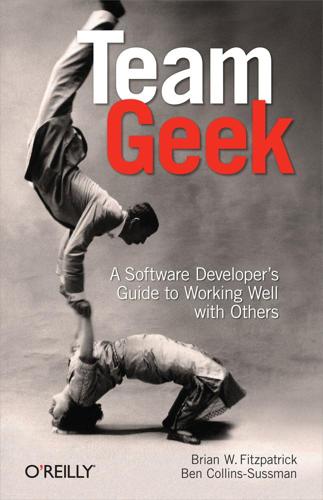
Team Geek
by
Brian W. Fitzpatrick
and
Ben Collins-Sussman
Published 6 Jul 2012
Linus’s real achievement was to lead these people and coordinate their work; Linux is the shining result of their collective labor. (And Unix itself was written by a small group of smart people at Bell Labs, not entirely by Ken Thompson and Dennis Richie.) On that same note, did Stallman personally write all of the Free Software Foundation’s software? He wrote the first generation of Emacs. But hundreds of others were responsible for bash, the GCC tool chain, and all the rest of the software that runs on Linux. Steve Jobs led an entire team that built the Macintosh, and while Bill Gates is known for writing a BASIC interpreter for early home computers, his bigger achievement was building a successful company around MS-DOS.
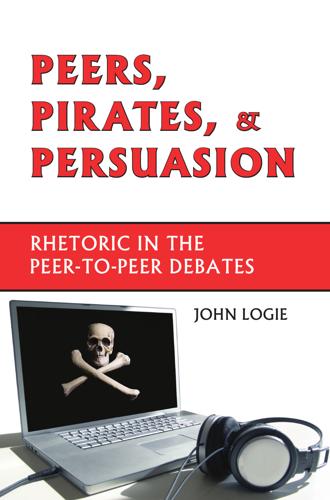
Peers, Pirates, and Persuasion: Rhetoric in the Peer-To-Peer Debates
by
John Logie
Published 29 Dec 2006
Segaller, Stephen. Nerds 2.0.1: A Brief History of the Internet. New York: TV Books, 1998. Sony Corp. of Amer. v. Universal City Studios, Inc. Vol. 464 U.S. 417, 1984. Stallman, Richard M. (Cambridge Mass.). Free Software, Free Society : Selected Essays of Richard M. Stallman. Ed. Joshua Gay. Boston, MA: Free Software Foundation, 2002. Stapp, Scott. “What Artists & Songwriters Say.” MusicUnited. 6 Nov. 2002. MusicUnited.org. 20 Aug. 2006 <http://www.musicunited.org/3_artists. html>. Strauss, Neil. “File-Sharing Battle Leaves Musicians Caught in the Middle.” New York Times 14 Sep. 2003. 1:1. Sullivan, Lorraine. “Statement of Lorriane Sullivan, Senate Committee on Governmental Affairs.” 30 Sep. 2003. senate.gov. 20 Aug. 2006 <http:// www.senate.gov/~govt-aff/index.cfm?
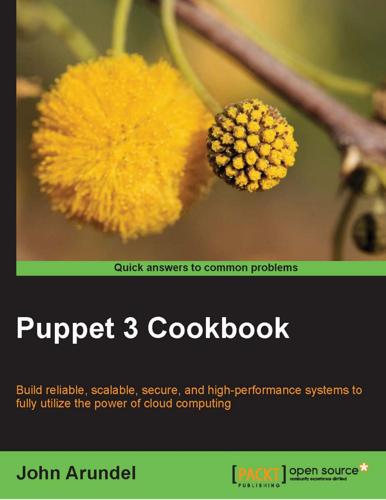
Puppet 3 Cookbook
by
John Arundel
Published 25 Aug 2013
If you already have a GnuPG key that you'd like to use, go on to the next section: 1. Run the following command. Answer the prompts as shown, except to substitute your name and e-mail address for mine. When prompted for a passphrase, just hit Enter: ubuntu@cookbook:~/puppet$ gpg --gen-key gpg (GnuPG) 1.4.11; Copyright (C) 2010 Free Software Foundation, Inc. This is free software: you are free to change and redistribute it. There is NO WARRANTY, to the extent permitted by law. Please select what kind of key you want: (1) RSA and RSA (default) (2) DSA and Elgamal (3) DSA (sign only) (4) RSA (sign only) Your selection? 1 RSA keys may be between 1024 and 4096 bits long.
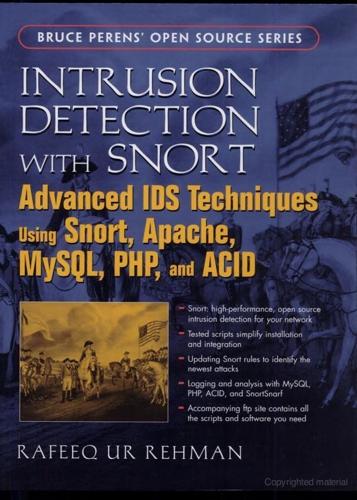
Intrusion Detection With Snort, Apache, Mysql, Php, and Acid
by
Rafeeq Ur Rehman
Published 7 May 2003
xml version="1.0" encoding="UTF-8"?> <!-- * Simple Network Markup Language (SNML) * Version 0.2 * * snml.dtd * Copyright (C) 2001, 2002 Carnegie Mellon University * * This program is free software; you can redistribute it and/or * modify it under the terms of the GNU General Public License as * published by the Free Software Foundation; either version 2 of * the License, or (at your option) any later version. * * This program is distributed in the hope that it will be useful, * but WITHOUT ANY WARRANTY; without even the implied warranty of * MERCHANTABILITY or FITNESS FOR A PARTICULAR PURPOSE. See the * GNU General Public License for more details. * * You should have received a copy of the GNU General Public * License along with this program; if not, write to the Free * Software Foundation, Inc., 59 Temple Place - Suite 330, Boston, * MA 02111-1307, USA. --> <!
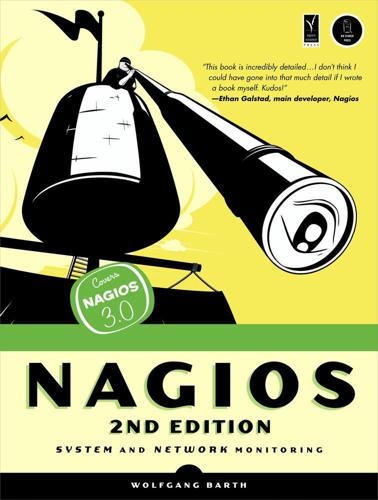
Nagios: System and Network Monitoring, 2nd Edition
by
Wolfgang Barth
Published 19 Aug 2009
To do this, you create a POD section =head1 LICENSE and output this with verbose ⇒ 99: =head1 LICENSE This program is free software; you can redistribute it and/or modify it under the terms of the GNU General Public License as published by the Free Software Foundation; either version 2 of the License, or (at your option) any later version. ... You should have received a copy of the GNU General Public License along with this program; if not, write to the Free Software Foundation, Inc., 51 Franklin Street, Fifth Floor, Boston, MA 02110-1301, USA. =cut ... pod2usage( -msg ⇒ "\n$0 -- version: $version\n", -verbose ⇒ 99, -sections ⇒ "NAME|LICENSE", -output ⇒ STDOUT, -exitval ⇒ UNKNOWN, ) if ( $printversion ); Since the output for this verbose level goes to STDERR, you also use -output here to ensure that the output goes to STDOUT.
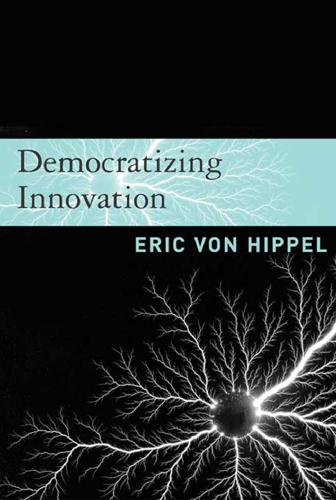
Democratizing innovation
by
Eric von Hippel
Published 1 Apr 2005
He also was offended by a general trend in the software world toward development of proprietary software packages and the release of software in forms that could not be studied or modified by others. Stallman viewed these practices as morally wrong impingements on the rights of software users to freely learn and create. In 1985, in response, he founded the Free Software Foundation and set about to develop and diffuse a legal mechanism that could preserve free access for all to the software developed by software hackers. Stallman’s pioneering idea was to use the existing mechanism of copyright law to this end. Software authors interested in preserving the status of their software as “free” software could use their own copyright to grant licenses on terms that would guarantee a number of rights to all future users.
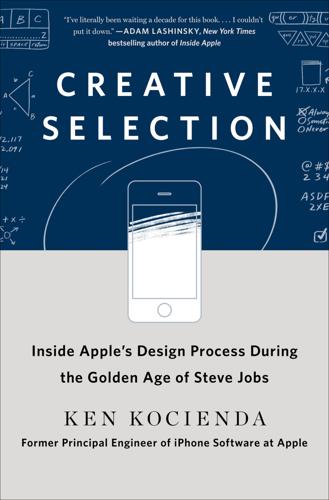
Creative Selection: Inside Apple's Design Process During the Golden Age of Steve Jobs
by
Ken Kocienda
Published 3 Sep 2018
I may be an introvert, but if I liked working with you, I said so. Thanks, folks. You gave me some of my happiest times. Thanks to my wife, Jean. When it comes to happiest times, she’s first and last. Notes Please note that some of the links referenced in this work may no longer be active. 2. The Crystal Ball 1. Free Software Foundation, GNU Operating System. [Online]. Accessed November 12, 2017. Various pages on this website provide the history, the philosophy, and licenses for the GNU Project. https://www.gnu.org 2. Steven Levy, Insanely Great, the Life and Times of Macintosh, the Computer That Changed Everything (New York: Penguin Books, 1994).
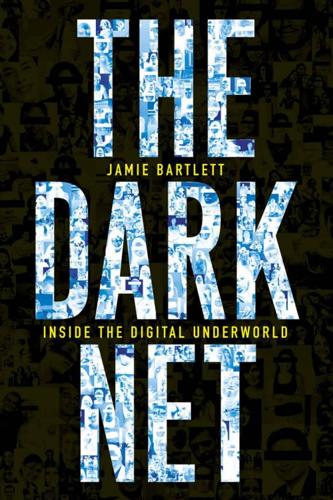
The Dark Net
by
Jamie Bartlett
Published 20 Aug 2014
It is typical of the sort of creativity and innovation that characterises the dark net: a place without limits, a place to push boundaries, a place to express ideas without censorship, a place to sate our curiosities and desires, whatever they may be. All dangerous, magnificent and uniquely human qualities. * * * fn1 In 2010 Tor was awarded the Free Software Foundation’s Award for Projects of Social Benefit, in part for the service it provides for whistleblowers, human-rights campaigners and activists in dissident movements. fn2 September 1993, the month America On-Line started to offer its subscribers access to Usenet, is etched into internet folklore as ‘the eternal September’, when newcomers logged on to the internet en masse.
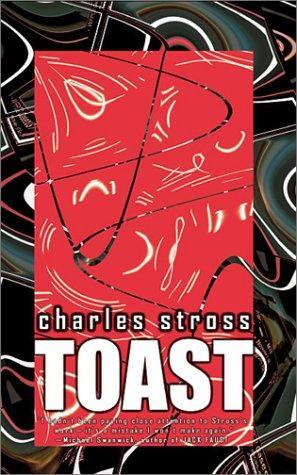
Toast
by
Stross, Charles
Published 1 Jan 2002
I must confess that I was half-asleep by the time the robot philosopher denounced us as non-sapient automata, sparing only half my left eye to speed-read Minsky’s Society of Mind for clues; in any event, I woke up in time for the next talk, a panel discussion. Someone had rounded up an original stalwart of the Free Software Foundation to talk about the rise and demise of Microsoft. There was, of course, a Microsoft spokesdroid present to defend the company’s historic record. It started with the obligatory three-minute AV presentation about how Our Great Leader and Teacher (Bill) had Saved the World from IBM, but before they could open their mouth and actually say anything Bill’s head appeared on screen and the audience went wild: it was like the Three Minute Hate in 1984.

Infinite Detail
by
Tim Maughan
Published 1 Apr 2019
Instinctively he blinks through menus, pulls up the version number. His heart seems to stop, his throat dry. “Holy shit.” FLEX OS. VERSION 4.027 Open source. Built by Rush00. This program is free software: you can redistribute it and/or modify it under the terms of the GNU General Public License as published by the Free Software Foundation. This program is distributed in the hope that it will be useful, but WITHOUT ANY WARRANTY; without even the implied warranty of MERCHANTABILITY or FITNESS FOR A PARTICULAR PURPOSE. See the GNU General Public License for more details. Flash back to the last time he’d seen those letters and numbers, arranged precisely like that, when he’d compiled this build, zipped it up, e-mailed it.
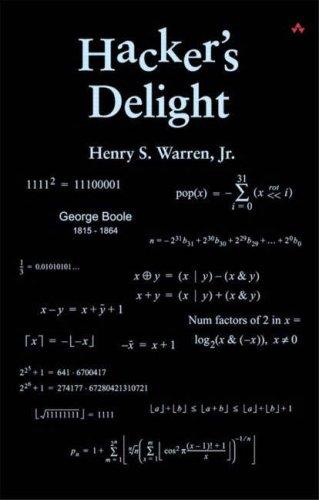
Hacker's Delight
by
Henry S. Warren
Published 26 Jul 2002
Combinatorial Algorithms: Theory and Practice. Prentice-Hall, 1977. [Sagan] Sagan, Hans. Space-Filling Curves. Springer-Verlag, 1994. A wonderful book, thoroughly recommended to anyone even slightly interested in the subject. [Shep] Shepherd, Arvin D. Private communication. [Stall] Stallman, Richard M. Using and Porting GNU CC. Free Software Foundation, 1998. [Voor] Voorhies, Douglas. "Space-Filling Curves and a Measure of Coherence." Graphics Gems II, AP Professional (1991). [War] Warren, H. S., Jr. "Functions Realizable with Word-Parallel Logical and Two's-Complement Addition Instructions." Communications of the ACM 20, 6 (June 1977), 439-441.
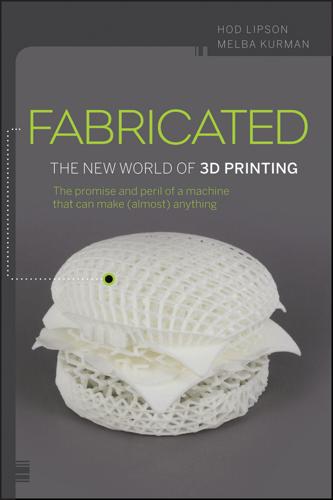
Fabricated: The New World of 3D Printing
by
Hod Lipson
and
Melba Kurman
Published 20 Nov 2012
As far as 3D printing goes, there’s a second complication: patented or copyright objects that are scanned and then 3D printed aren’t captured by digital rights management implanted into design files. As pointed out by Simon Bradshaw, Adrian Bowyer and Patrick Haufe, “It is the sharing of (as seen, legitimately) reverse-engineered designs that is the issue, not original design documents.”8 Perhaps in anticipation of yet another DRM struggle ahead, the Free Software Foundation (FSF) created a certification program called Respects Your Freedom (RYF). The Foundation will certify hardware vendors whose products meet the Foundation’s standards for user freedom, control over the product and privacy. On its website, the FSF describes its criteria for its RYF hardware program.

Peers Inc: How People and Platforms Are Inventing the Collaborative Economy and Reinventing Capitalism
by
Robin Chase
Published 14 May 2015
GPL AND CC: PROTECTING COMMUNITY-BUILT ASSETS FROM PRIVATE EXPLOITATION There are two examples of clever manipulation of existing patent and copyright laws that give us some interesting tools and ideas about how we might more fairly distribute the value created by peers in a Peers Inc organization. The first, General Public License (GPL), is an example of how innovative licensing can prevent the privatization of community-built assets in perpetuity, and sometimes expand them. In 1989, Richard Stallman of the Free Software Foundation invented the General Public License (GPL) for use with free and open-source software. According to Black Duck Software, the leading provider of systems to manage open-source software development, fully 54 percent of open-source projects in 2013 were associated with Stallman-created GPL licenses.12 GPL states that you can use a piece of open software any way you like, including improving upon it and selling it for profit.

Coders at Work
by
Peter Seibel
Published 22 Jun 2009
The only reason it ever got folded in was because I released it and thousands of people started using it and they loved it and they nagged him for two years and finally he put it in because he was tired of being nagged about it. Seibel: Did you sign the papers assigning the copyright to the Free Software Foundation? Zawinski: Oh yeah, I did that right away. I think that was probably the first thing in the email. It was like, send me a diff for each line and sign this. So I signed and said, “I can't do the rest; can't send you a diff; that's ridiculous. It's well documented; go take a look.” I don't think he ever did.
…
Peter, 373, 387 development teams, 37, 38 Dias, John, 265 Dijkstra, 124, 565, 567, 582, 584, 590, 600 Doctor, 537, 540, 541 DOCTOR, 519 documentation, 7, 179, 181, 196, 230, 231, 232, 461 documenting, 461, 464 dynamic languages, 139 E E, 95, 96 ECMAScript, 325, 351 ECMAScript 3, 142 ECMAScript 4, 91, 96, 134, 142 ECMAScript 4 (ES4), 91 Eich, Brendan, 99 Eiffel, 121 EISCAT scientific association, 206, 209 Electric Communities, 91, 95, 96, 112 ELIZA, 519, 540, 541 Elkind, Jerry, 430 Emacs, 9, 13, 35, 36, 39, 85, 266, 325, 335, 344, 345, 346, 347, 354, 419, 440, 541, 556 Emacs Lisp, 12 Encina, 167 Energize, 9, 30 Energize team, 13 ENIAC, 504, 506, 511 Ericsson, 205, 206, 220, 221 Erlang, 205, 206, 211, 212, 214, 218, 219, 221, 222, 223, 224, 225, 226, 228, 232, 233, 235, 236, 237, 238, 239, 263 ES3, 91, 96, 100, 146, 351 ES4, 91, 92, 99, 100, 143, 146, 157, 351 ES5, 92 ethical responsibilities, 88 eToys, 382, 392 Expert Technologies (ETI), 4, 5 explicit memory management versus garbage collection, 64 F Fahlman, Scott, 3, 4 FastGCI, 58 feature convergence, 102 Firefox, 133, 138 Fitzpatrick, Brad, 48 Fortran, 2, 91, 92, 93, 104, 105, 134, 168, 170, 172, 206, 210, 224, 226, 325, 326, 327, 328, 330, 352, 353, 358, 373, 374, 375, 376, 377, 396, 398, 399, 451, 455, 456, 485, 487, 488, 490, 491, 495, 502, 521, 534, 560, 577, 583, 596, 600, 601 Fortress, 325, 339, 347, 350, 356, 357, 358, 365 forward references, 109 Free Software Foundation (FSF), 10 FreeVote, 54 Fröberg, Magnus, 230 functional programming, 241, 242, 250, 251, 254, 255, 257, 260, 266, 275, 276, 278, 280 FX, 438 G Gabriel, Dick, 353 Gabriel, Richard, 462 Gaim, 70 Gates, Bill, 236 GCC, 13, 63, 80 GDB, 8, 9, 13, 30, 589 generics, 191, 192, 193, 194 GHC, 241, 261, 262, 264, 265, 266, 267, 268, 269, 278, 279, 280, 284, 285 GHCI, 267 Ghostscript, 413, 414, 418, 420, 427, 432, 433, 444, 445 Gilder, George, 137 Glasgow Haskell Compiler (GHC), 241 GNAL, 325, 353 Goetz, Brian, 172, 186 Goldin, Don, 312 Google, 55, 62, 63, 64, 65, 68, 71, 72, 73, 75, 77, 78, 79, 80, 82, 84, 85, 86, 163, 167, 184, 185, 186, 287, 296, 298, 301, 303, 304, 305, 307, 308, 311, 320, 322, 473, 474, 475, 476, 480 Gosper, Bill, 522 goto statements, 565, 595 Greenblatt, Richard, 522 Grover, George, 492 Guibas, Leo, 421 GWT, 100 H Habitat, 95, 112 Hacker's Dictionary, The, 325 Harris, Tim, 275 Harvard, 325, 329, 330, 331, 333, 374, 413, 425 Haskell, 241, 251, 254, 259, 261, 266, 267, 268, 270, 275, 276, 278, 280, 283, 296, 325, 354, 357, 358, 359, 365, 436, 437 Heart, Frank, 530, 535, 538 Herlihy, Maurice, 275 Herman, Dave, 144 history, 568, 577, 578, 598, 599 Hoare, Tony, 196, 585, 590 Horwat, Waldemar, 143 Houck, Chris, 16 Hughes, John, 257, 258, 263 HyperCard, 382 I IBM, 325, 326, 327, 328, 329, 332, 340, 353, 362, 370, 485, 486, 487, 490, 493, 495, 499, 500, 506, 508, 510, 512, 514, 515, 516 IBM Research, 185 Iborra, Pepe, 268 IMLAC, 561 IMP, 520, 530, 532, 534, 536, 537, 538, 558 IMPs, 519, 529, 549 Interface Message Processors (IMPs), 519 Interlisp, 413, 414, 418, 441 invariants, 79, 406, 468, 469 J Jacobson, Van, 153 Java, 11, 21, 49, 52, 62, 63, 65, 66, 81, 85, 134, 136, 141, 143, 145, 146, 147, 149, 161, 162, 164, 167, 168, 170, 172, 173, 174, 176, 177, 179, 183, 184, 185, 186, 191, 192, 193, 195, 196, 197, 198, 325, 334, 339, 343, 349, 350, 351, 352, 354, 355, 356, 358, 377, 378, 379, 389, 468, 471, 476, 502, 503, 559, 560, 582, 596 Java Collections Framework, 167 Java Community Process, 349, 350 Javadoc, 356 JavaScript, 91, 93, 96, 97, 98, 99, 100, 101, 102, 105, 106, 108, 117, 118, 119, 120, 122, 123, 125, 128, 129, 130, 133, 134, 136, 139, 140, 141, 142, 143, 144, 145, 146, 147, 148, 149, 150, 155, 159, 160, 165, 166, 373, 379, 380, 381, 392, 401, 405, 408 John Reiser C preprocessor, 135 Joule, 95 Joy, Bill, 325 JSLint, 114, 118, 120 JSON, 91, 125 JsUnit, 122 K K&R style, 107, 108 Kay, Alan, 94, 373, 376, 378, 383, 389, 391, 404 Knuth, Donald, 114, 115, 116, 117, 124 KWIC index, 328 L Lambda Papers, The, 325 Lanett, Mark, 16 lazy evaluation, 241, 257, 258, 259, 260, 262 leaf nodes, 37 Learson, T.
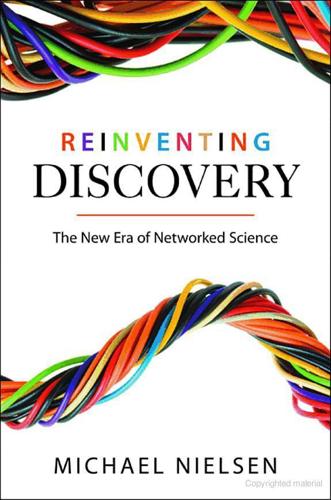
Reinventing Discovery: The New Era of Networked Science
by
Michael Nielsen
Published 2 Oct 2011
[201] Ron Solomon. On finite simple groups and their classification. Notices of the American Mathematical Society, 42(2):231–239, February 1995. http://www.ams.org/notices/199502/solomon.pdf. [202] Richard M. Stallman. Free Software, Free Society: Selected Essays of Richard M. Stallman. Boston: Free Software Foundation, 2002. http://www.gnu.org/philosophy/fsfs/rms-essays.pdf. [203] Garol Stasser and William Titus. Hidden profiles: A brief history. Psychological Inquiry, 14(3&4):304–313, 2003. [204] Garold Stasser and William Titus. Pooling of unshared information in group decision making: Biased information sampling during discussion.
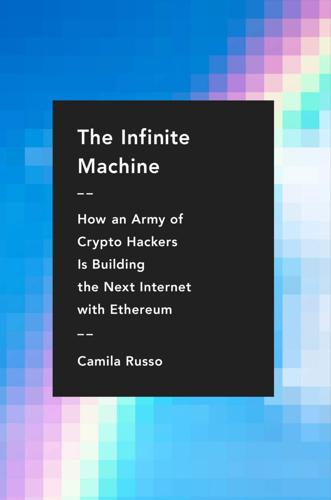
The Infinite Machine: How an Army of Crypto-Hackers Is Building the Next Internet With Ethereum
by
Camila Russo
Published 13 Jul 2020
Eventually the printer was replaced and when Stallman tried to implement the same hack, he found he couldn’t modify the code because it was proprietary information. In 1983, Stallman responded by creating an operating system called GNU, which would be free and accessible to anyone. Next Stallman founded the Free Software Foundation and the GNU General Public License, which said anyone was free to use, copy, distribute, and modify software created under that license. The only requirement was that changes to the code had to be shared. Linux, an operating system that runs on the GNU license, started taking off in the mid-1990s.
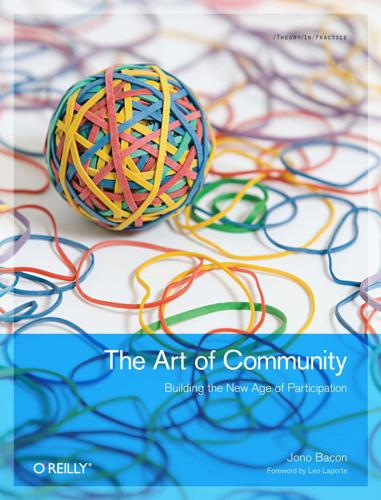
The Art of Community: Building the New Age of Participation
by
Jono Bacon
Published 1 Aug 2009
In the Free Software world, one of the most notable cases of dictatorship was the choice of the third version of the GNU General Public License, perhaps the software license in most widespread use by Free Software projects (including Linux). Years of discussion went into this license, including intense meetings and negotiations with representatives of companies and software projects of all sizes. Yet in the end, someone had to make a decision, and that person was the illustrious president of the Free Software Foundation, Richard Stallman. Although the dictators in these communities are typically the original founders of the community, this does not mean they don’t lean on the community for help and support in judging contributions to the project. Typically these leaders will handpick trusted and reliable members to lend a hand.
…
This case study will give you a firm idea of how one large community has approached it, and the lessons learned. In the Beginning... In 2004, Mark Shuttleworth, a South African entrepreneur, founded the Ubuntu project. A longtime user, fan, and contributor to free software, he built his digital certificate company, Thawte, on a Free Software foundation. When he sold his company to VeriSign, he made what can only be described as a “rather large bucket of money.” After spending a year in Russia training for a quick trip into space as the first South African space tourist, Mark started laying plans for a new Linux distribution. At the time, distributions were nothing new: Red Hat, Mandrake, Debian, and others were already producing comprehensive operating systems that technical types such as myself were not only using, but were also trying to convince our reluctant friends and family to use.
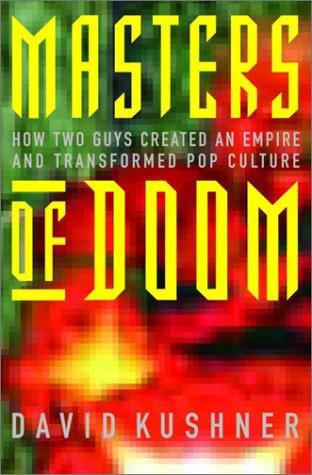
Masters of Doom: How Two Guys Created an Empire and Transformed Pop Culture
by
David Kushner
Published 2 Jan 2003
It takes a small amount of skill to know the right plays and count the cards, but the hard part is making yourself consistantly [sic] behave like a robot, rather than succumbing to your ‘gut instincts.’ “ To refine his skills before the trip, Carmack applied his usual learning approach: consuming a few books on the subject and composing a computer program, in this case one that simulated the statistics of blackjack dealt cards. His research proved successful, netting him twenty thousand dollars, which he donated to the Free Software Foundation, an organization of like-minded believers in the Hacker Ethic. “Its [sic] not like I’m trying to make a living at [blackjack],” Carmack wrote online after his trip, “so the chance of getting kicked out doesn’t bother me too much.” It didn’t take long for him to find out just how he’d feel.

The Boy Who Could Change the World: The Writings of Aaron Swartz
by
Aaron Swartz
and
Lawrence Lessig
Published 5 Jan 2016
, Jefferson is just as crazy as I am: •By their very nature, ideas cannot be property. •The government has no duty to make laws about them. •The laws we do make aren’t all that successful. If Jefferson wasn’t happy with the comparatively modest laws of 1813, can anyone seriously suggest that he wouldn’t be furious with the expansionist laws of today? Forget the Free Software Foundation and the Creative Commons; Jefferson would be out there advocating armed resistance and impeaching the justices that voted against Eldred! (OK, maybe not, but he’d certainly do more than write copyright licenses.) It’s true that in Jefferson’s day there were no movies or networks, but there were certainly books and inventions.
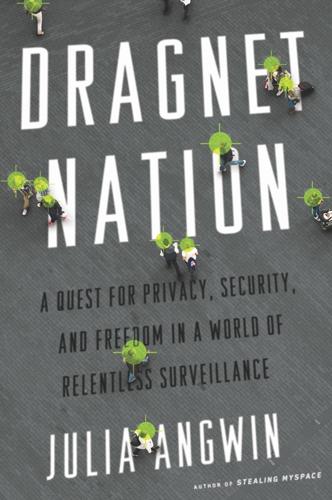
Dragnet Nation: A Quest for Privacy, Security, and Freedom in a World of Relentless Surveillance
by
Julia Angwin
Published 25 Feb 2014
In October 2011, he raised $600,000: Rip Empson, “Disconnect: Ex-Googlers Raise Funding to Stop Google, Facebook & More from Tracking Your Data,” TechCrunch, March 22, 2012, http://techcrunch.com/2012/03/22/disconnect-me-raise/. And they had a dashboard of statistics: Brian Kennish, in discussion with author, August 16, 2012. “I think that might be why I’m into data”: Ibid. 13. LONELY CODES First, I downloaded free encryption software: “The GNU Privacy Guard,” Free Software Foundation, Inc., http://gnupg.org/. a program called Enigmail: “A Simple Interface to OpenPGP Email Security,” The Enigmail Project, https://www.enigmail.net/home/index.php. designed to run with: GnuPG, “GnuPG Frequently Asked Questions,” http://www.gnupg.org/faq/GnuPG-FAQ.html. The Postbox support page said: Postbox, Inc., “Extending Postbox,” http://www.postbox-inc.com/extensions.
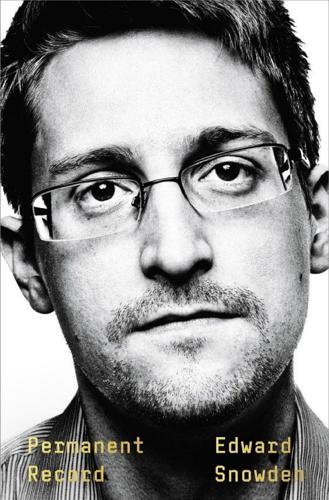
Permanent Record
by
Edward Snowden
Published 16 Sep 2019
I am especially grateful to our CTO Micah Lee, former FPF operations manager Emmanuel Morales, and current FPF board member Daniel Ellsberg, who has given the world the model of his rectitude, and given me the warmth and candor of his friendship. This book was written using free and open-source software. I would like to thank the Qubes Project, the Tor Project, and the Free Software Foundation. My earliest intimations of what it was like to write against deadline came from the masters, Glenn Greenwald, Laura Poitras, Ewen Macaskill, and Bart Gellman, whose professionalism is informed by a passionate integrity. Having been edited now myself, I have gained a new appreciation of their editors, who refused to be intimidated and took the risks that gave meaning to their principles.

Platform Revolution: How Networked Markets Are Transforming the Economy--And How to Make Them Work for You
by
Sangeet Paul Choudary
,
Marshall W. van Alstyne
and
Geoffrey G. Parker
Published 27 Mar 2016
The social impact of mandated transparency rules has been thoroughly analyzed by three experts from Harvard’s Kennedy School of Government; see Archon Fung, Mary Graham, and David Weil, Full Disclosure: The Perils and Promise of Transparency (New York: Cambridge University Press, 2007). 57. See, for example, Richard Stallman, “Why Open Source Misses the Point of Free Software,” GNU Operating System, Free Software Foundation, http://www.gnu.org/philosophy/open-source-misses-the-point .en.html. 58. Carlota Perez, Technological Revolutions and Financial Capital: The Dynamics of Bubbles and Golden Ages (Cheltenham, UK: Edward Elgar, 2003). 59. Heli Koski and Tobias Kretschmer, “Entry, Standards and Competition: Firm Strategies and the Diffusion of Mobile Telephony,” Review of Industrial Organization 26, no. 1 (2005): 89–113. 60.
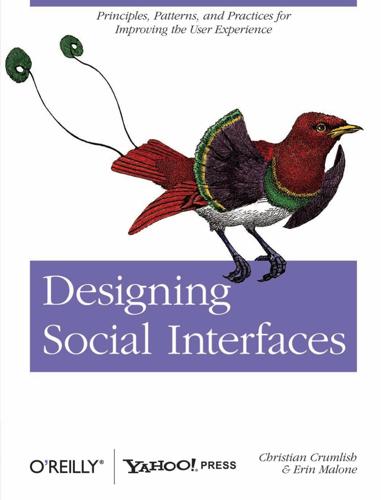
Designing Social Interfaces
by
Christian Crumlish
and
Erin Malone
Published 30 Sep 2009
Copyleft licenses are sometimes referred to as viral copyright licenses, because any works derived from a copyleft work must themselves be copyleft when distributed. Copyleft is considered “strong” when its provisions can be imposed on derived works, and weak when not all derived works inherit the copyleft license. Sources Gratis vs. Libre, http://en.wikipedia.org/wiki/Gratis_versus_libre What is Copyleft?, Free Software Foundation, http://www.fsf.org/licensing/essays/copyleft. html Copyright Copyright is a form of intellectual property that gives the creator of an original work exclusive rights for a certain time period after which time the work is said to enter the public domain (see “Public Domain” on page 255).
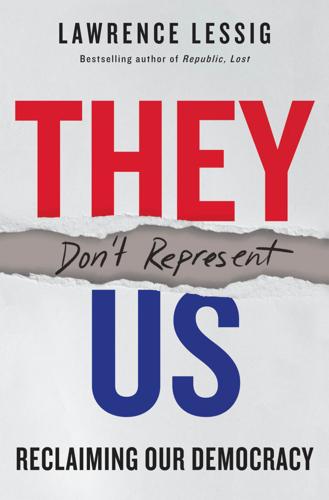
They Don't Represent Us: Reclaiming Our Democracy
by
Lawrence Lessig
Published 5 Nov 2019
Chavis (1971), [3n2], 266n2 Wilson, Lincoln, [5n8], 266n8 winner take all system of Electoral College, 36–43, 63, 64, 160–165 Woodbury, Dick, 237–238 Wu, Tim, 74, [123n119], 202–203, 294n119 You’re More Powerful Than You Think (Liu), 249 Zittrain, Jonathan, [111n92], 290n92 Zuboff, Shoshana, 110–111, 113, 114–115, [119n113], [121n117], 122, 125, 293n113, 294n117 Zuckerberg, Mark, 109, 117, [121n116], 293n116 About the Author LAWRENCE LESSIG is the Roy L. Furman Professor of Law and Leadership at Harvard Law School, host of the podcast Another Way, and cofounder of Creative Commons. Lessig has received numerous awards, including a Webby Lifetime Achievement Award and the Free Software Foundation’s Freedom Award, and he was named one of Scientific American’s Top 50 Visionaries. He is the author of ten books, including Republic, Lost and is a member of the American Academy of Arts and Sciences and the American Philosophical Society. He lives in Brookline, Massachusetts. Discover great authors, exclusive offers, and more at hc.com.

Hacker, Hoaxer, Whistleblower, Spy: The Story of Anonymous
by
Gabriella Coleman
Published 4 Nov 2014
As I mentioned in the Introduction, ACTA sought, among other things, to introduce sweeping regulations which would criminalize copyright infringement and encourage Internet service providers to profile, track, and monitor their users. Opposition had been fierce, and nearly every group involved in the politics of access—Electronic Frontier Foundation, the Free Software Foundation, Public Knowledge, La Quadrature du Net— criticized the secrecy under which the treaty was being negotiated, and categorically opposed its ratification. The proposed methodology of the IFM was to lobby politicians and raise public awareness using propaganda materials and websites. As part of these efforts, advocates created a dedicated chat room called “#antiactaplanning” on the IRC server OccultusTerra.
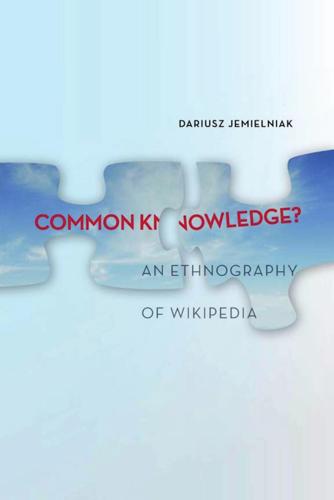
Common Knowledge?: An Ethnography of Wikipedia
by
Dariusz Jemielniak
Published 13 May 2014
In the end, Torvalds is a benevolent dictator, but a peculiar kind of dictator—one whose power is accepted voluntarily and on a continuing basis by the developers he leads. (S. Weber, 2004, p. 90) Another F/LOSS community operating on a similar leadership model is the Emacs editors family, led by Richard Stallman (also the founder of GNU and the Free Software Foundation). According to some authors, the existence of a central authority figure is one of the essential ingredients in opencollaboration projects (Carr, 2007). As history shows, though, both of these philosophies work just fine in the open-collaboration environment. And both, possibly, could have taken shape on Wikipedia.

Code: The Hidden Language of Computer Hardware and Software
by
Charles Petzold
Published 28 Sep 1999
The operating system might need to implement a technique called virtual memory, in which blocks of memory are stored in temporary files during periods when the memory blocks aren't needed and then read back into memory when they are needed. The most interesting development for UNIX in recent years has been the Free Software Foundation (FSF) and the GNU project, both founded by Richard Stallman. GNU (pronounced not like the animal but instead with a distinct G at the beginning) stands for "GNU's Not UNIX," which, of course, it's not. Instead, GNU is intended to be compatible with UNIX but distributed in a manner that prevents the software from becoming proprietary.
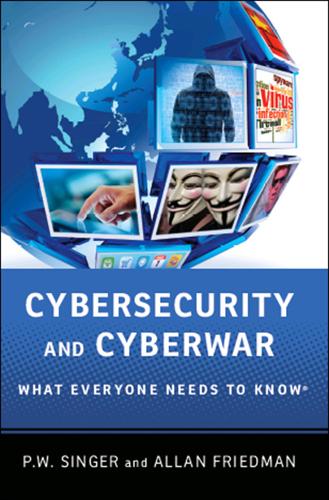
Cybersecurity: What Everyone Needs to Know
by
P. W. Singer
and
Allan Friedman
Published 3 Jan 2014
surveillance by the NSA Kurt Opsahl, “Exactly How the NSA is Getting Away with Spying on US Citizens,” Gizmodo, June 23, 2013, http://gizmodo.com/exactly-how-the-nsa-is-getting-away-with-spying-on-us-c-540606531? “36 million people” John Sullivan, “2010 Free Software Awards Announced,” Free Software Foundation, March 22, 2011, http://www.fsf.org/news/2010-free-software-awards-announced. “dark corner of the Internet” “Monetarists Anonymous,” Economist, September 29, 2012, http://www.economist.com/node/21563752?fb_action_ids=10152174673925385&fb_action_types=og.likes&fb_ref=scn%2Ffb_ec%2Fmonetarists_anonymous&fb_source=aggregation&fb_aggregation_id=246965925417366.
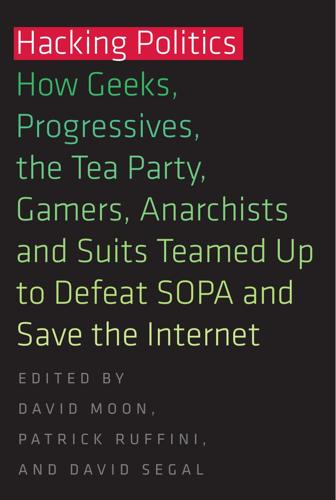
Hacking Politics: How Geeks, Progressives, the Tea Party, Gamers, Anarchists and Suits Teamed Up to Defeat SOPA and Save the Internet
by
David Moon
,
Patrick Ruffini
,
David Segal
,
Aaron Swartz
,
Lawrence Lessig
,
Cory Doctorow
,
Zoe Lofgren
,
Jamie Laurie
,
Ron Paul
,
Mike Masnick
,
Kim Dotcom
,
Tiffiniy Cheng
,
Alexis Ohanian
,
Nicole Powers
and
Josh Levy
Published 30 Apr 2013
The initial groundwork of the SOPA fight was hashed out by phone and over email, but to spread the message far and wide we knew we needed to work with policy, academic, and advocacy Internet policy groups and operators of larger websites. First we approached our closest allies, Demand Progress, Public Knowledge, and the Electronic Frontier Foundation. We then reached out to friends we knew at Mozilla, Techdirt, Boing Boing, Hype Machine, Open Congress/Participatory Politics Foundation, and Free Software Foundation, who agreed to sign on. To get the ball rolling, FFTF worked with Demand Progress and individuals like Hacking Politics contributor Elizabeth Stark to organize a brown bag gathering at Mozilla attended by representatives of CDT, EFF, Public Knowledge, Union Square Ventures, Yale and Stanford Universities, Silicon Valley, and others.

Underground
by
Suelette Dreyfus
Published 1 Jan 2011
Sellers & Co. staff, Victorian County Court staff, Paul Galbally, Mark Dorset, Suburbia.net, Freeside Communications, Greg Hooper, H&S Support Services, Peter Andrews, Kevin Thompson, Andrew Weaver, Mukhtar Hussain, Helen Meredith, Ivan Himmelhoch, Michael Hall, Donn Ferris, Victorian State Library staff, News Limited library staff (Sydney), Allan Young, Ed DeHart, Annabel Blay, Annette Seeber, Arthur Arkin, Doug Barnes, Jeremy Porter, James McNabb, Carolyn Ford, ATA, Domini Banfield, Alistair Kelman, Ann-Maree Moodie, Jane Hutchinson, Catherine Murphy, Norma Hawkins, N. Llewelyn, Christine Assange, Russell Brand, Matthew Bishop, Matthew Cox, Michele Ziehlky, Andrew James, Brendan McGrath, News Limited, Pearson Williams Solicitors, Tami Friedman, the Free Software Foundation (GNU Project), the US Department of Energy Computer Incident Advisory Capability, Project Gutenberg, Claire, Lance and Michael, Till Tolkemitt, Lutz Kroth, Klaus Gabbert, Heike Rosbach, Andreas Simon dos Santos, Michael Kellner, Bernhard Schmid, Steffen Jacobs, Frances Uckerman and Bertel Schmitt.
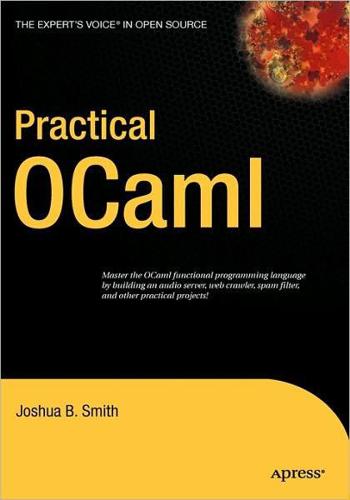
Practical OCaml
by
Joshua B. Smith
Published 30 Sep 2006
It is actually the LGPL with the “linking exception.” This “exception” is a clause in the LGPL that requires you to provide object files for linking. The OCaml maintainers have simplified the license to not require this exception. Much more information about the LGPL and its ramifications can be found at the Free Software Foundation web site at http://www.fsf.org/licensing/licenses/lgpl.html. 11 620Xch02final.qxd 12 9/22/06 12:10 AM Page 12 CHAPTER 2 ■ INTERACTING WITH OCAML: THE TOPLEVEL Distributions of OCaml The only official distribution of OCaml comes from the Institut National de Recherche en Informatique et en Automatique (INRIA).
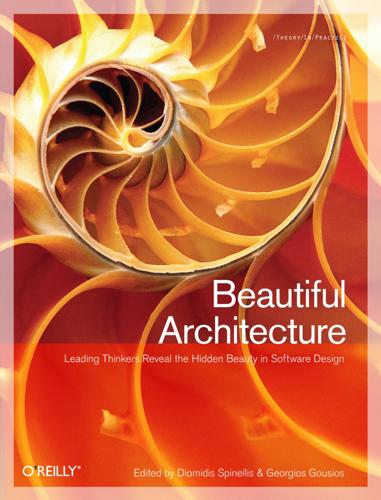
Beautiful Architecture: Leading Thinkers Reveal the Hidden Beauty in Software Design
by
Diomidis Spinellis
and
Georgios Gousios
Published 30 Dec 2008
Some years of contributing to Free Software, in particular KDE, taught him to program, which led to his employment at Klarälvdalens Datakonsult AB, where he now coordinates the KDE- and Free Software-related activities of the company, among other things. Till lives with his wife and daughter in Berlin, Germany. Jim Blandy maintained GNU Emacs for the Free Software Foundation from 1990 to 1993, and released Emacs version 19 with Richard Stallman. He is one of the original designers of the Subversion version control system. He has also contributed to the CVS version control system, the GNU Debugger (GDB), the Guile extension language library, and an Emacs made for editing gene sequences.

WTF?: What's the Future and Why It's Up to Us
by
Tim O'Reilly
Published 9 Oct 2017
That kernel was supplied by a Finnish computer science student named Linus Torvalds, whose master’s thesis in 1990 consisted of a minimalist Unix-like operating system that would be portable to many different computer architectures. He called this operating system Linux. Over the next few years, there was a fury of commercial activity as entrepreneurs seized on the possibilities of a completely free operating system combining Torvalds’s kernel with the Free Software Foundation’s re-creation of the rest of the Unix operating system. The target was no longer AT&T, but rather Microsoft. In the early days of the PC industry, IBM and a growing number of personal computer “clone” vendors like Dell and Gateway provided the hardware, Microsoft provided the operating system, and a host of independent software companies provided the “killer apps”—word processing, spreadsheets, databases, and graphics programs—that drove adoption of the new platform.
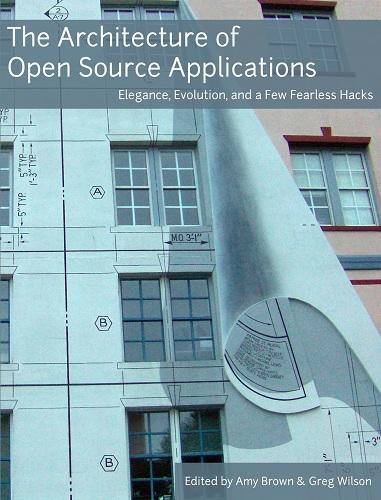
The Architecture of Open Source Applications
by
Amy Brown
and
Greg Wilson
Published 24 May 2011
The name is an acronym for Bourne-Again SHell, a pun combining the name of Stephen Bourne (the author of the direct ancestor of the current Unix shell /bin/sh, which appeared in the Bell Labs Seventh Edition Research version of Unix) with the notion of rebirth through reimplementation. The original author of bash was Brian Fox, an employee of the Free Software Foundation. I am the current developer and maintainer, a volunteer who works at Case Western Reserve University in Cleveland, Ohio. Like other GNU software, bash is quite portable. It currently runs on nearly every version of Unix and a few other operating systems—independently-supported ports exist for hosted Windows environments such as Cygwin and MinGW, and ports to Unix-like systems such as QNX and Minix are part of the distribution.

Future Crimes: Everything Is Connected, Everyone Is Vulnerable and What We Can Do About It
by
Marc Goodman
Published 24 Feb 2015
Chapter 9: Mo’ Screens, Mo’ Problems 1 There was just one slight problem: Kelly Jackson Higgins, “ ‘Robin Sage’ Profile Duped Military Intelligence, IT Security Pros,” Dark Reading, July 6, 2010. 2 Sage was the invention: Thomas Ryan, “Getting in Bed with Robin Sage” Provide Security, 2010; Shaun Waterman, “Fictitious Femme Fatale Fooled Cybersecurity,” Washington Times, July 18, 2010. 3 Not only were public figures: Robert McMillan, “Paris Hilton Accused of Voice-Mail Hacking,” InfoWorld, Aug. 25, 2006. 4 Once the bank’s telephone system: Ron Lieber, “Your Voice Mail May Be Even Less Secure Than You Thought,” New York Times, Aug. 19, 2011. 5 Worse, criminals can spoof: Byron Acohido, “Caller ID Spoofing Scams Aim for Bank Accounts,” USA Today, March 15, 2012. 6 In what the Internal Revenue Service: Kathy Kristof, “IRS Warns of Biggest Tax Scam Ever,” MoneyWatch, March 20, 2014. 7 The FBI recorded: Adrianne Jeffries, “Meet ‘Swatting,’ the Dangerous Prank That Could Get Someone Killed,” Verge, April 23, 2013. 8 In some of the cases: Maria Elena Fernandez, “Ashton Kutcher, Miley Cyrus & Others Terrorized in Dangerous ‘Swatting’ Prank,” Daily Beast, Oct. 5, 2012. 9 In fact, swatting is the perfect complement: FBI, “The Crime of ‘Swatting’: Fake 9-1-1 Calls Have Real Consequences,” accessed May 7, 2014. 10 He also swatted a local bank: Alan Duke, “Boy Admits ‘Swatting’ Ashton Kutcher, Justin Bieber,” CNN, March 12, 2013. 11 It is only by a miracle: Heidi Fenton, “Swatting-Related Crash,” Mlive.com, April 8, 2014. 12 The baseband handles all: Sebastian Anthony, “The Secret Second Operating System That Could Make Every Mobile Phone Insecure,” ExtremeTech, Nov. 13, 2013. 13 A number of hackers: Ralf Philipp Weinmann, “DeepSec 2010: All Your Baseband Are Belong to Us,” YouTube, http://www.youtube.com/watch?v=fQqv0v14KKY, accessed May 7, 2014. 14 In early 2014, such a security flaw: Paul K., “Replicant Developers Find and Close Samsung Galaxy Backdoor,” Free Software Foundation, March 12, 2014. 15 The FBI has reportedly: Declan McCullagh, “FBI Taps Cell Phone Mic as Eavesdropping Tool,” ZDNet, Dec. 1, 2006. 16 Although his passenger survived: Hard Reg, “Driver Follows Satnav to His Doom,” Register, Oct. 5, 2010. 17 A report: Department of Homeland Security, “National Risk Estimate,” Nov. 9, 2011. 18 “Society may already”: Robert Charette, “Are We Getting Overly Reliant on GPSIntensive Systems?
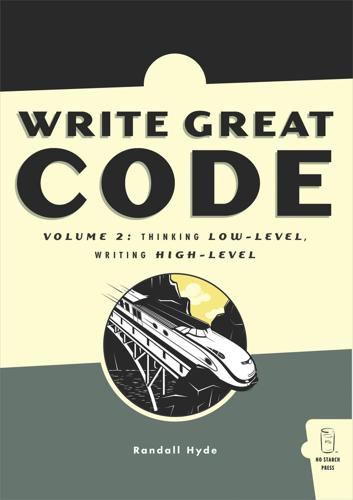
Write Great Code, Volume 2
by
Randall Hyde
Published 6 Aug 2012
For example, Microsoft’s Visual C++ package generates assembly code compatible with Microsoft Macro Assembler (MASM). Borland’s C++ compiler generates code compatible with Borland’s Turbo Assembler (TASM). The GNU Compiler Suite (GCC) generates Gas-compatible source code (Gas is the GNU Assembler from the Free Software Foundation). In addition to the code that compilers emit, you’ll find tons of assembly programming examples written with assemblers like FASM, NASM, GoAsm, HLA, and more. It would be nice to use just a single assembler’s syntax throughout this book, but because our approach is not compiler specific, we must consider the syntaxes for several different common assemblers.

The Art of Assembly Language
by
Randall Hyde
Published 8 Sep 2003
[107] If the switch statement appears in your main program, you must declare the array in the declaration section of your main program. 7.8 State Machines and Indirect Jumps Another control structure commonly found in assembly language programs is the state machine. A state machine uses a state variable to control program flow. The FORTRAN programming language provides this capability with the assigned goto statement. Certain variants of C (for example, GNU's GCC from the Free Software Foundation) provide similar features. In assembly language, the indirect jump can implement state machines. So what is a state machine? In very basic terms, it is a piece of code that keeps track of its execution history by entering and leaving certain "states." For the purposes of this chapter, we'll just assume that a state machine is a piece of code that (somehow) remembers the history of its execution (its state) and executes sections of code based on that history.

Designing Data-Intensive Applications: The Big Ideas Behind Reliable, Scalable, and Maintainable Systems
by
Martin Kleppmann
Published 17 Apr 2017
DeWitt and Michael Stonebraker: “MapReduce: A Major Step Back‐ wards,” originally published at databasecolumn.vertica.com, January 17, 2008. [5] Henry Robinson: “The Elephant Was a Trojan Horse: On the Death of MapReduce at Google,” the-paper-trail.org, June 25, 2014. [6] “The Hollerith Machine,” United States Census Bureau, census.gov. [7] “IBM 82, 83, and 84 Sorters Reference Manual,” Edition A24-1034-1, Interna‐ tional Business Machines Corporation, July 1962. [8] Adam Drake: “Command-Line Tools Can Be 235x Faster than Your Hadoop Cluster,” aadrake.com, January 25, 2014. [9] “GNU Coreutils 8.23 Documentation,” Free Software Foundation, Inc., 2014. [10] Martin Kleppmann: “Kafka, Samza, and the Unix Philosophy of Distributed Data,” martin.kleppmann.com, August 5, 2015. [11] Doug McIlroy: Internal Bell Labs memo, October 1964. Cited in: Dennis M. Richie: “Advice from Doug McIlroy,” cm.bell-labs.com. [12] M. D. McIlroy, E.
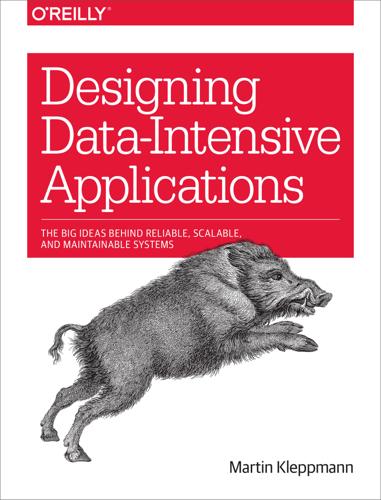
Designing Data-Intensive Applications: The Big Ideas Behind Reliable, Scalable, and Maintainable Systems
by
Martin Kleppmann
Published 16 Mar 2017
[6] “The Hollerith Machine,” United States Census Bureau, census.gov. [7] “IBM 82, 83, and 84 Sorters Reference Manual,” Edition A24-1034-1, International Business Machines Corporation, July 1962. [8] Adam Drake: “Command-Line Tools Can Be 235x Faster than Your Hadoop Cluster,” aadrake.com, January 25, 2014. [9] “GNU Coreutils 8.23 Documentation,” Free Software Foundation, Inc., 2014. [10] Martin Kleppmann: “Kafka, Samza, and the Unix Philosophy of Distributed Data,” martin.kleppmann.com, August 5, 2015. [11] Doug McIlroy: Internal Bell Labs memo, October 1964. Cited in: Dennis M. Richie: “Advice from Doug McIlroy,” cm.bell-labs.com. [12] M. D. McIlroy, E.
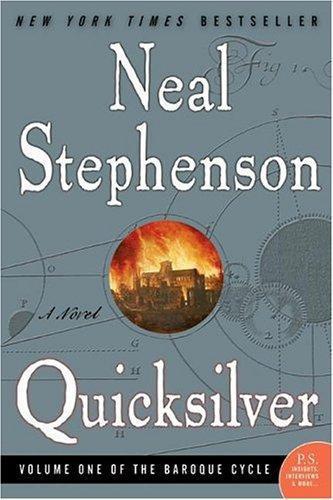
Quicksilver
by
Neal Stephenson
Published 9 Sep 2004
To fulfill the above goals, the text contained in the Metaweb is licensed to the public under the GNU Free Documentation License (GFDL). Permission is granted to copy, distribute and/or modify the text of all Metaweb materials under the terms of the GNU Free Documentation License, Version 1.2 or any later version published by the Free Software Foundation; with no Invariant Sections, with no Front-Cover Texts, and with no Back-Cover Texts. For the full license, see the metaweb:GNU free documentation license: http://www.metaweb.com/wiki/wiki.phtml?title=Metaweb:GNU_free_documentation_license See also the Wikipedia: http://en.wikipedia.org/wiki/Main_Page PerfectBound™ and the PerfectBound™ logo are trademarks of HarperCollins Publishers, Inc.